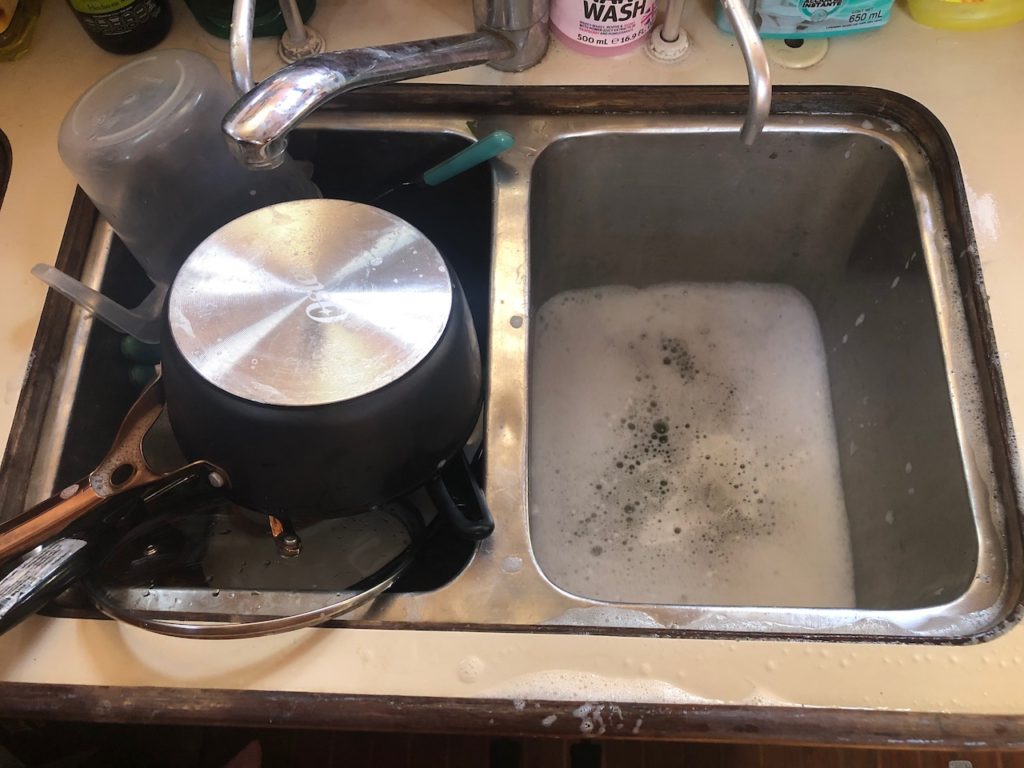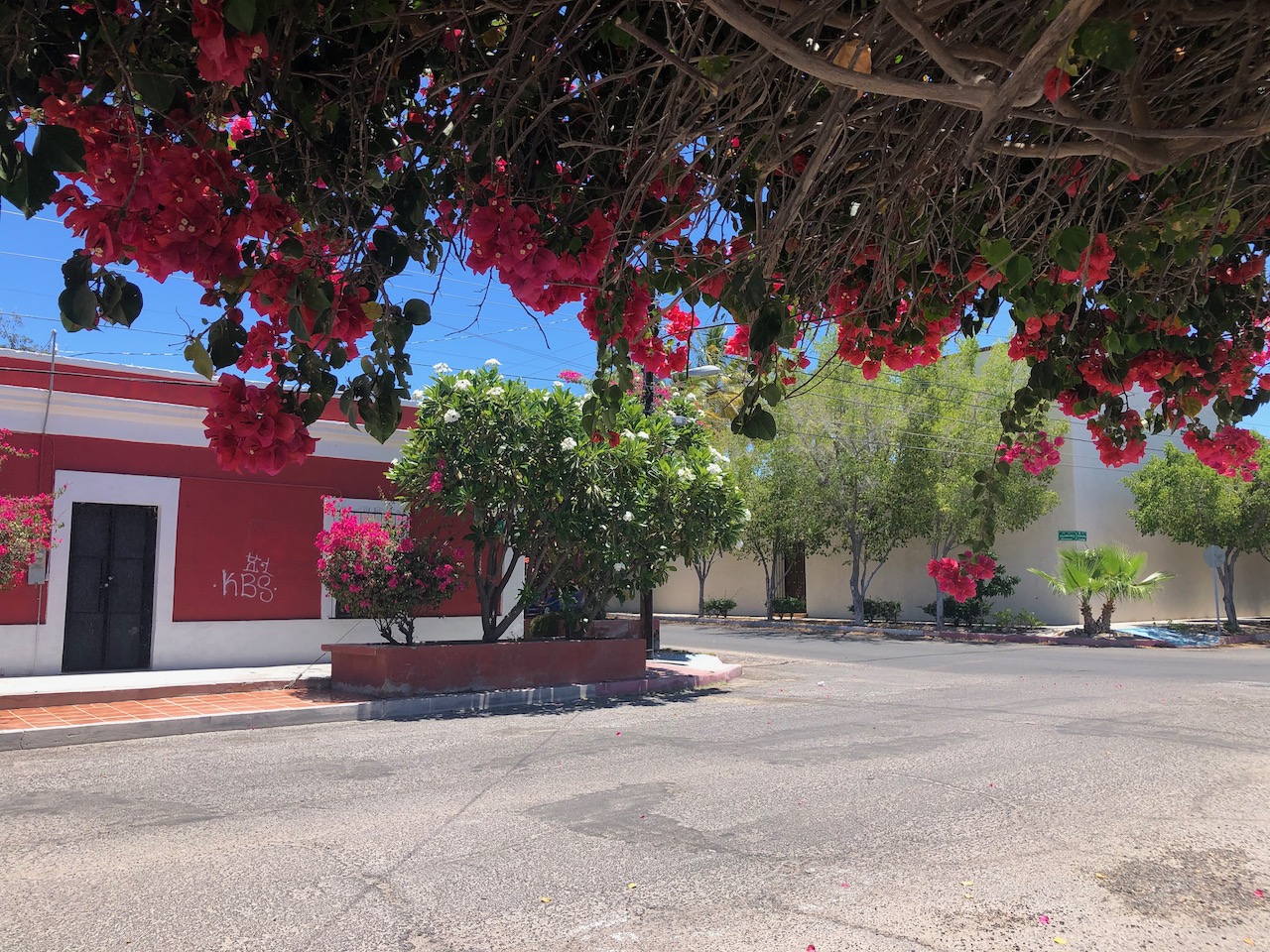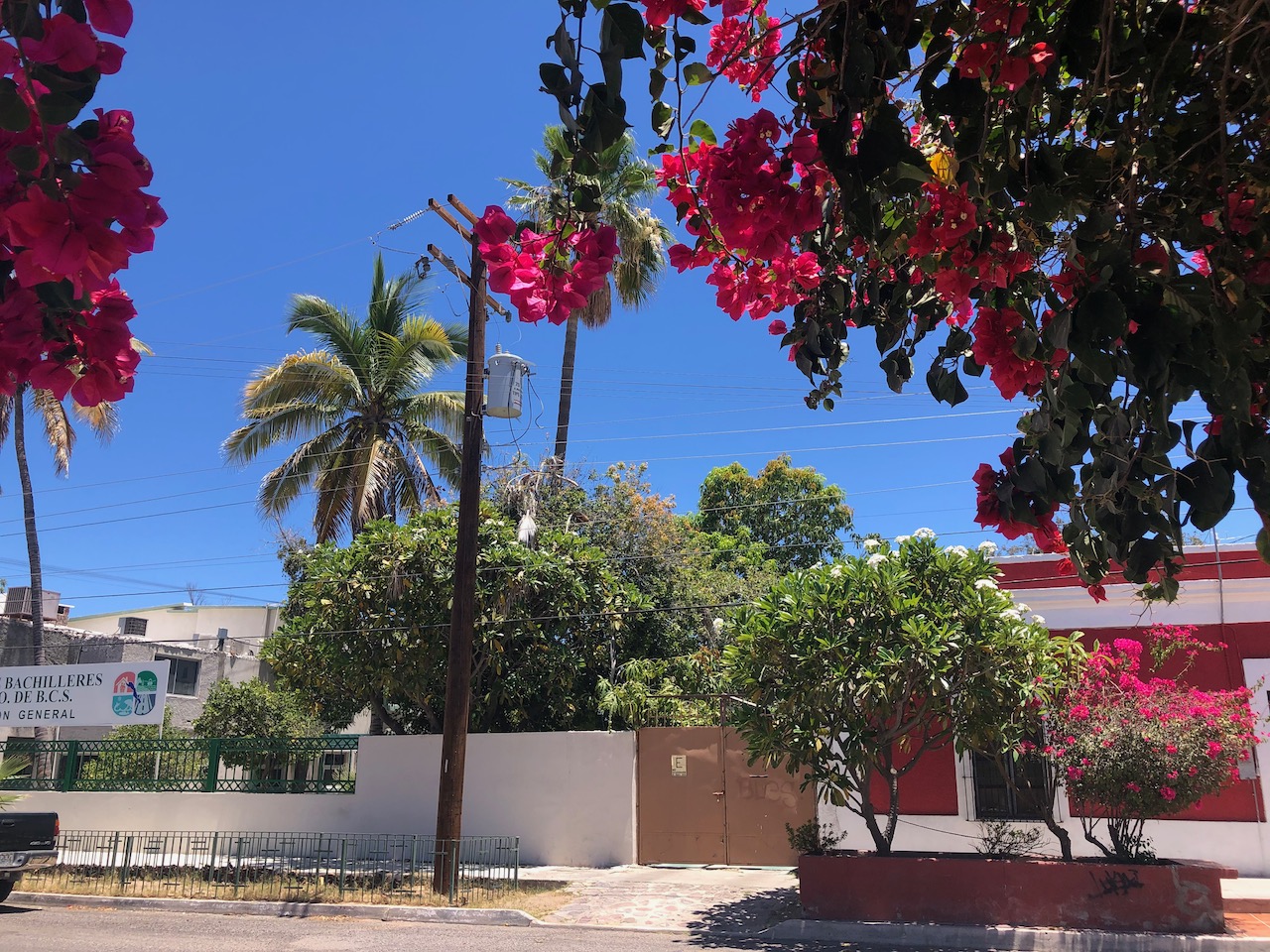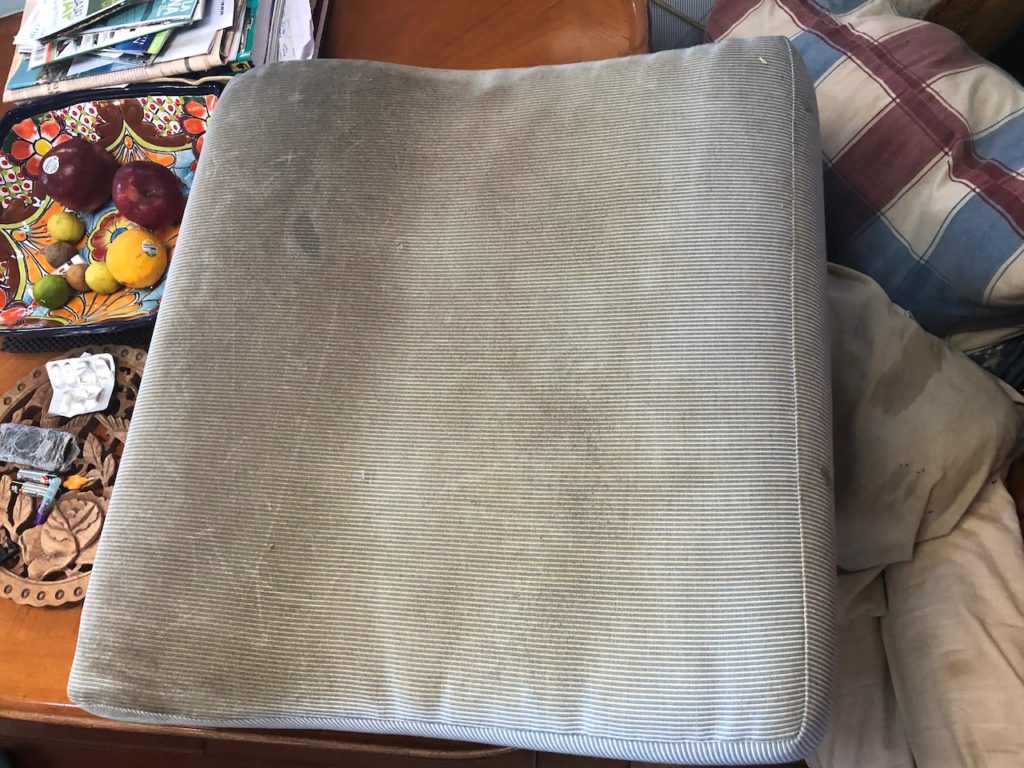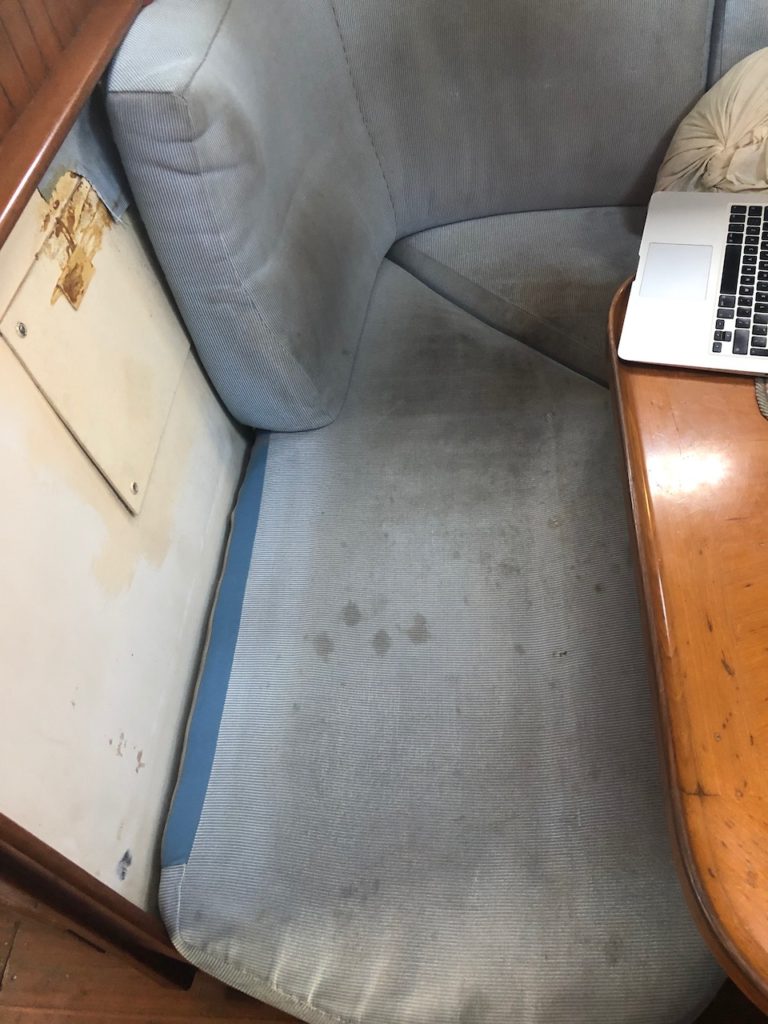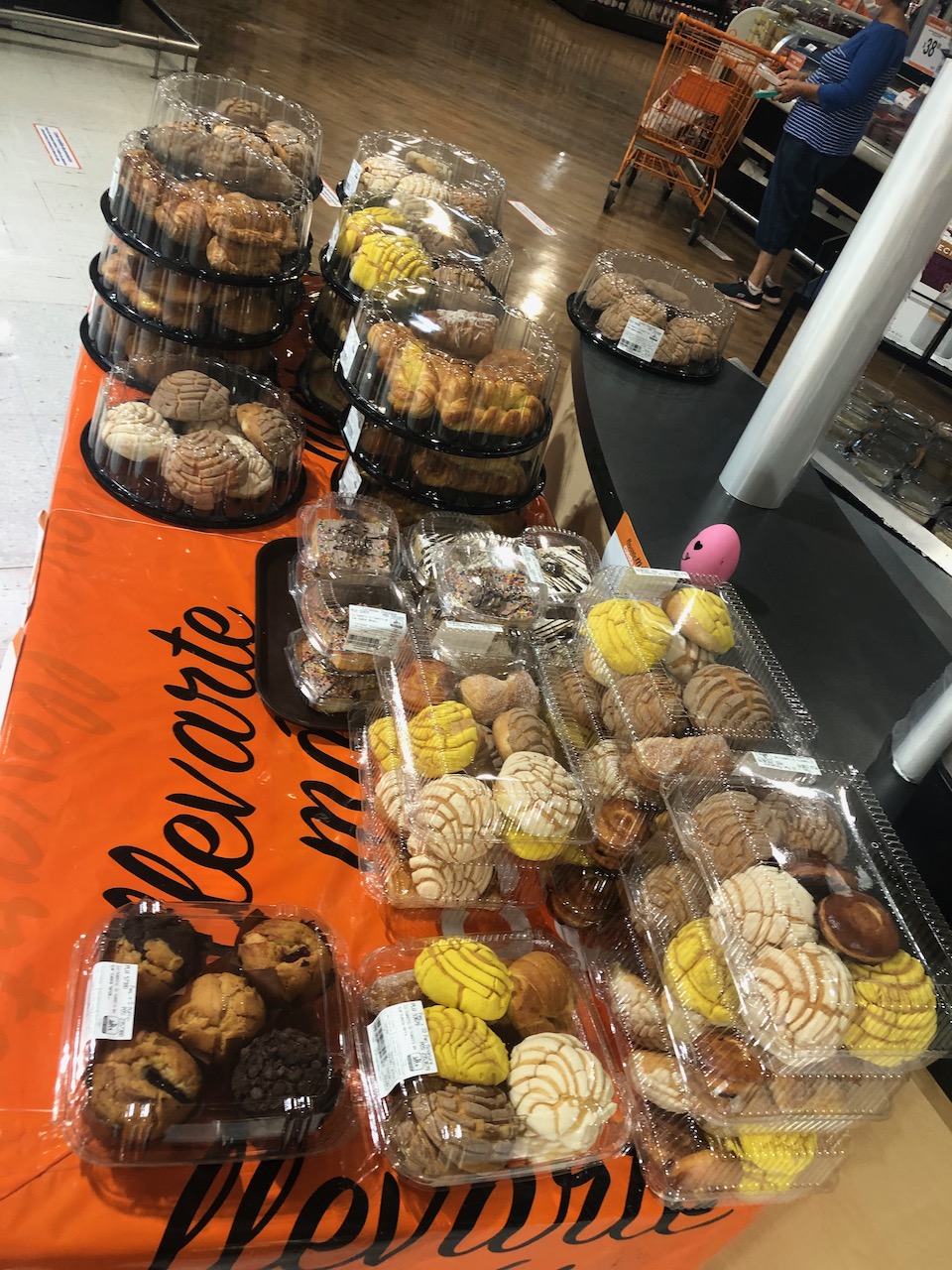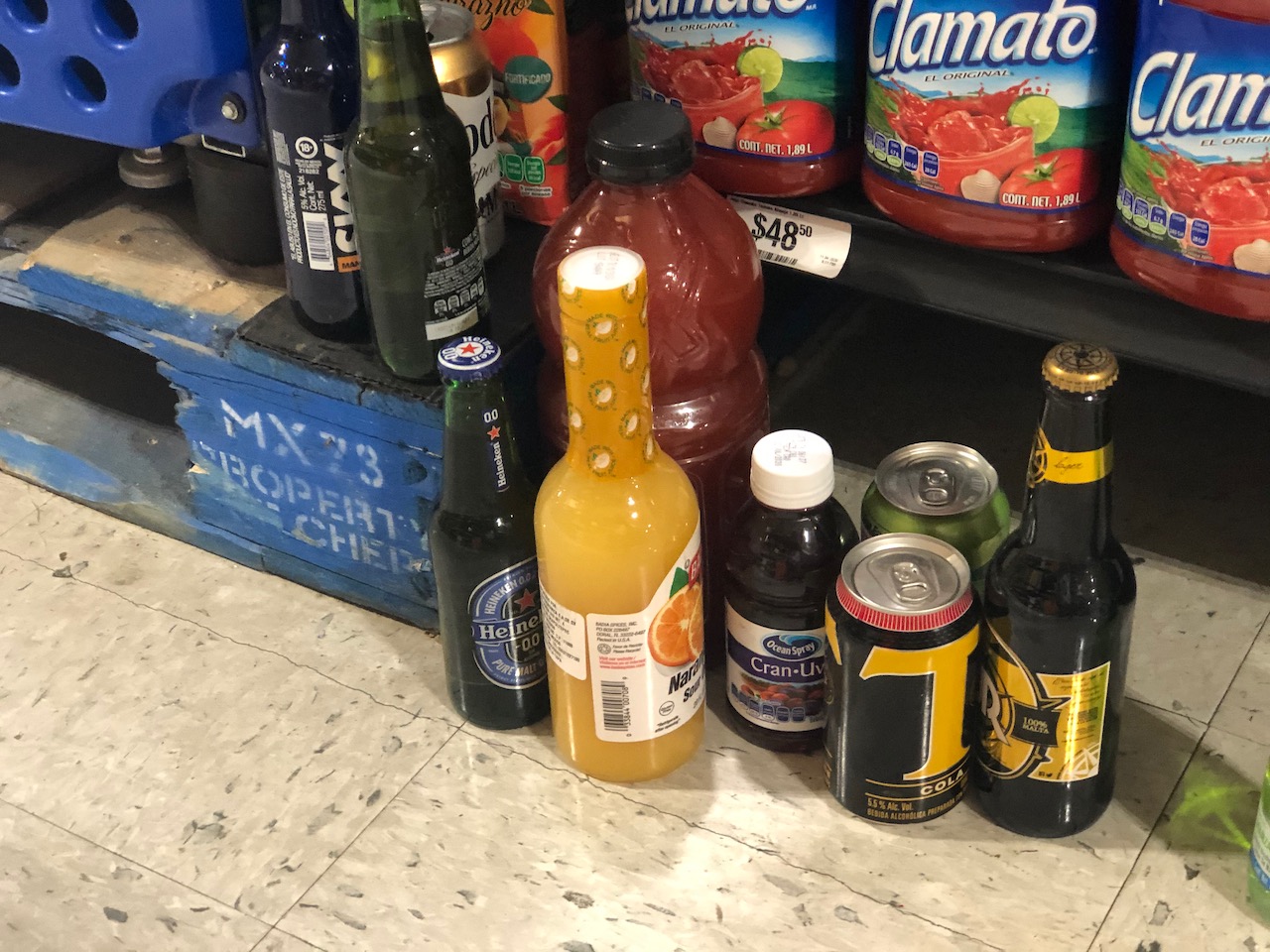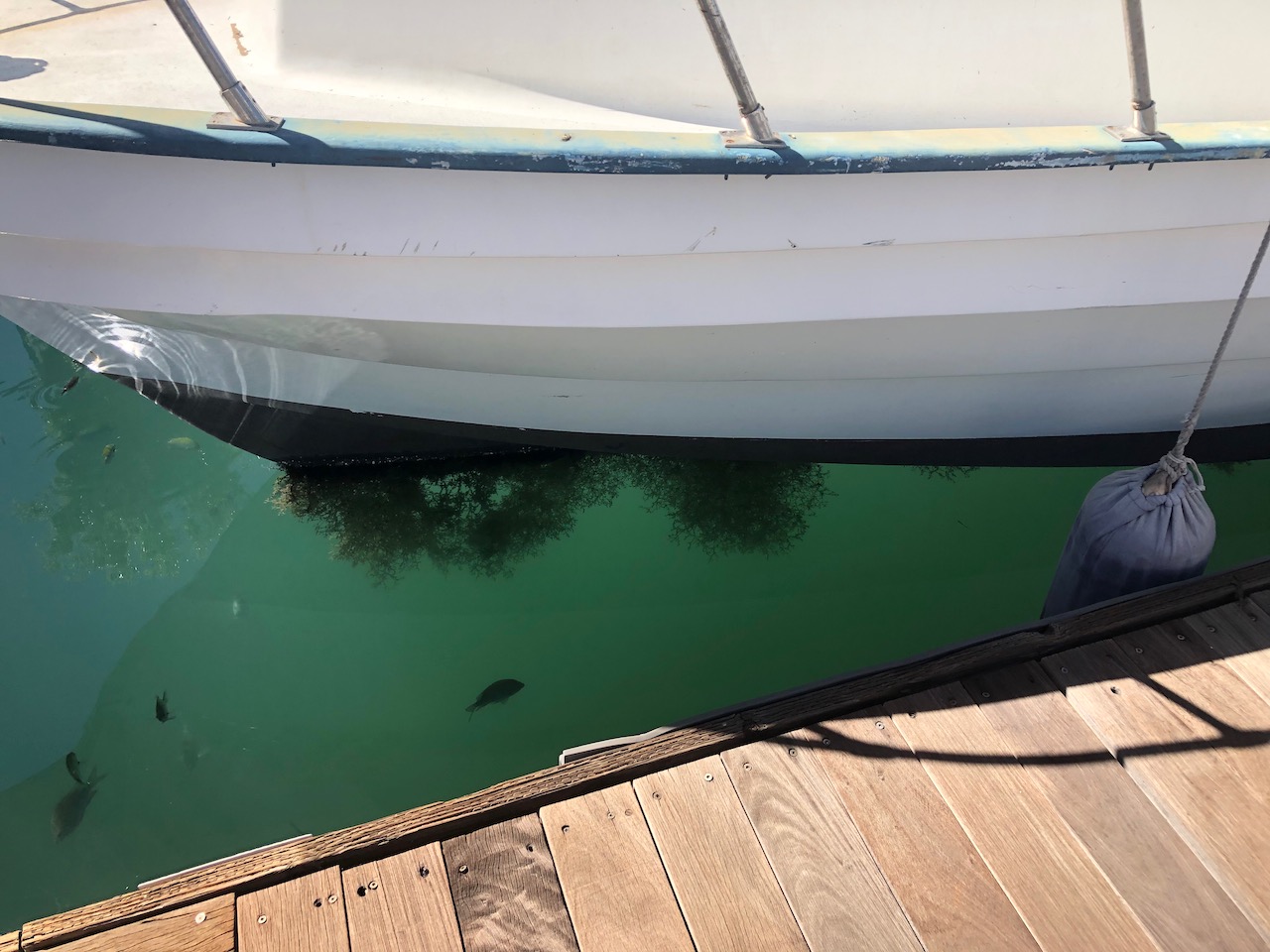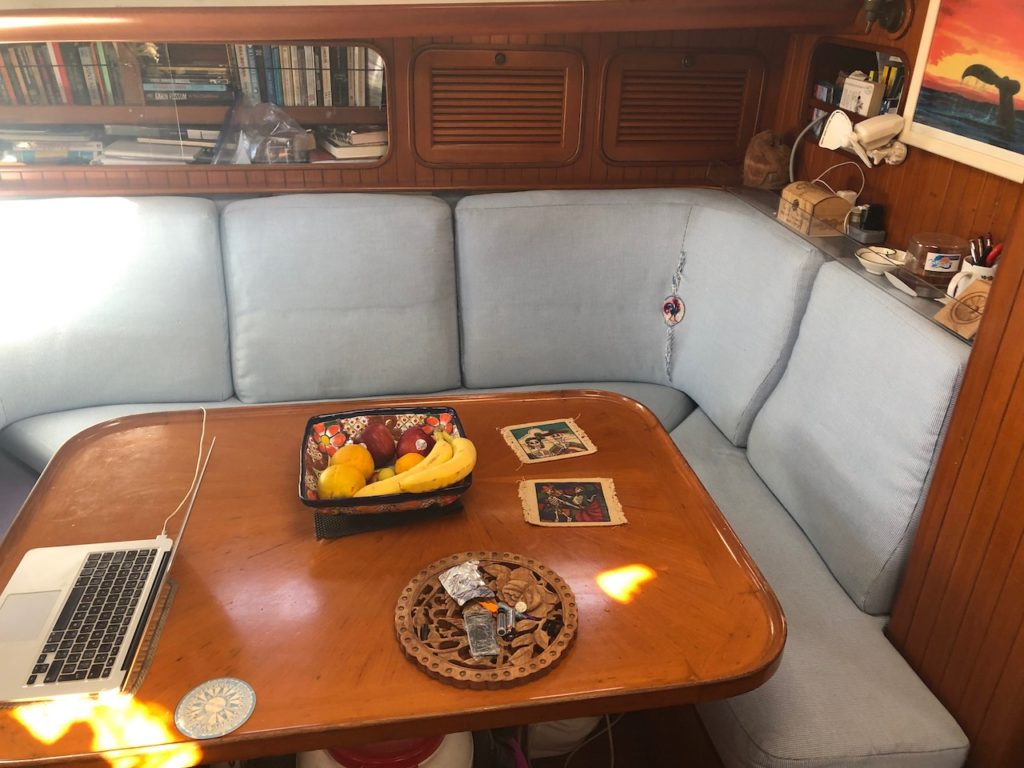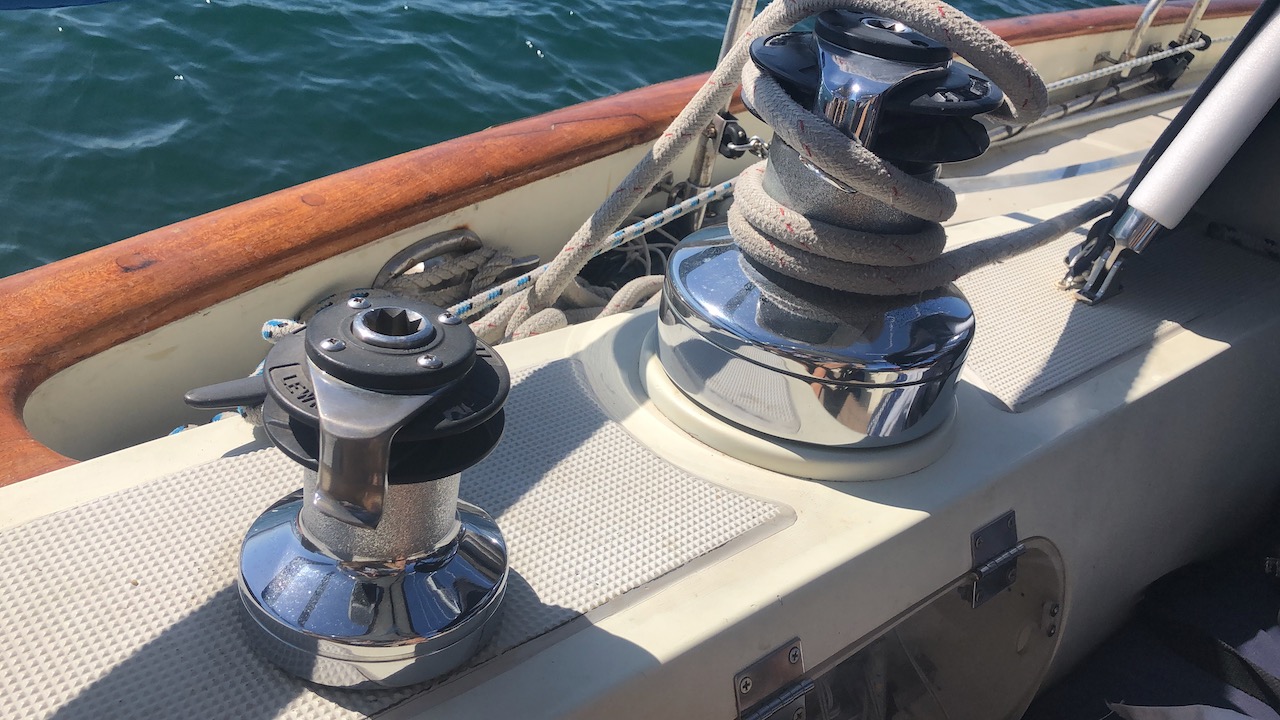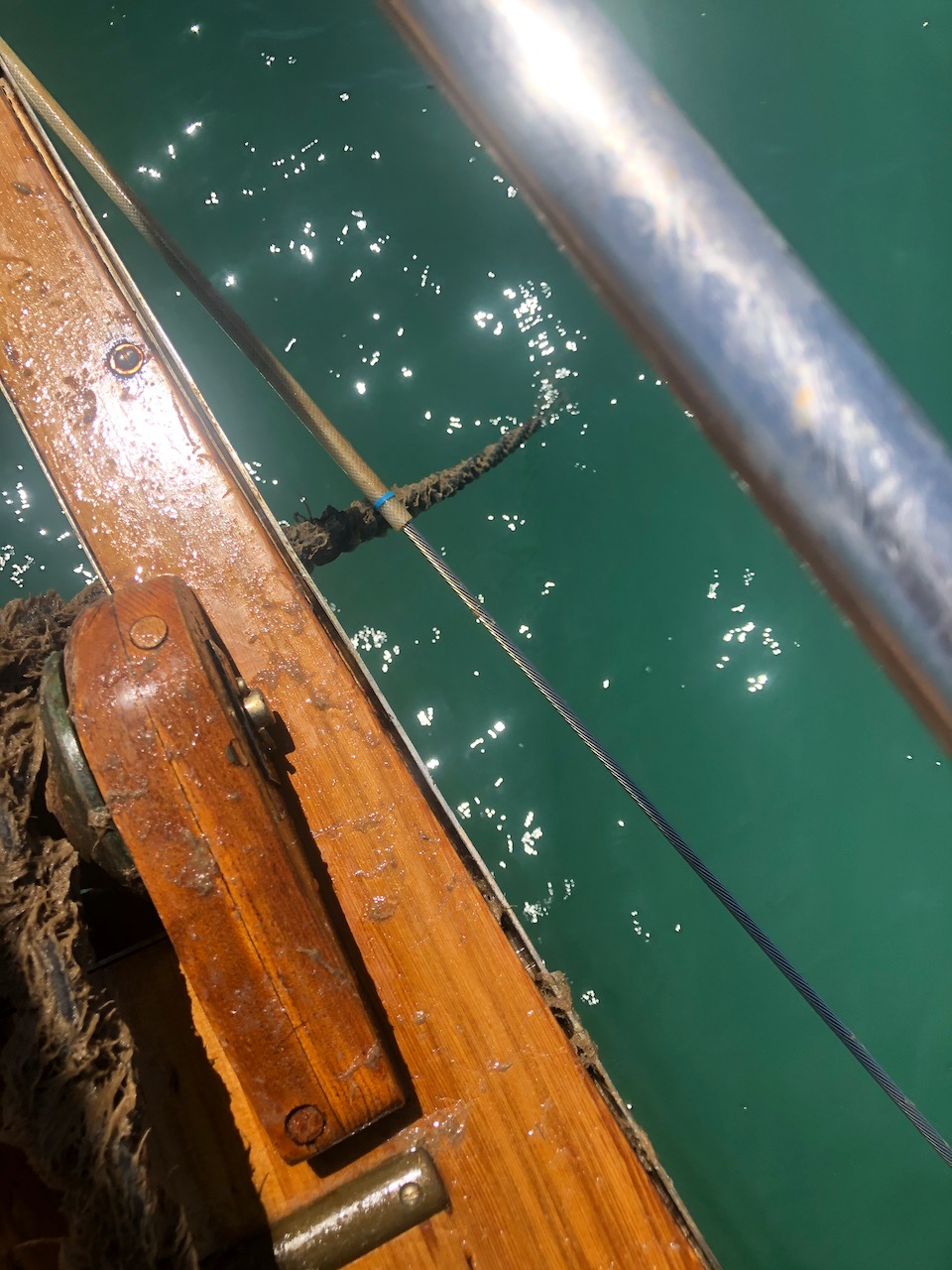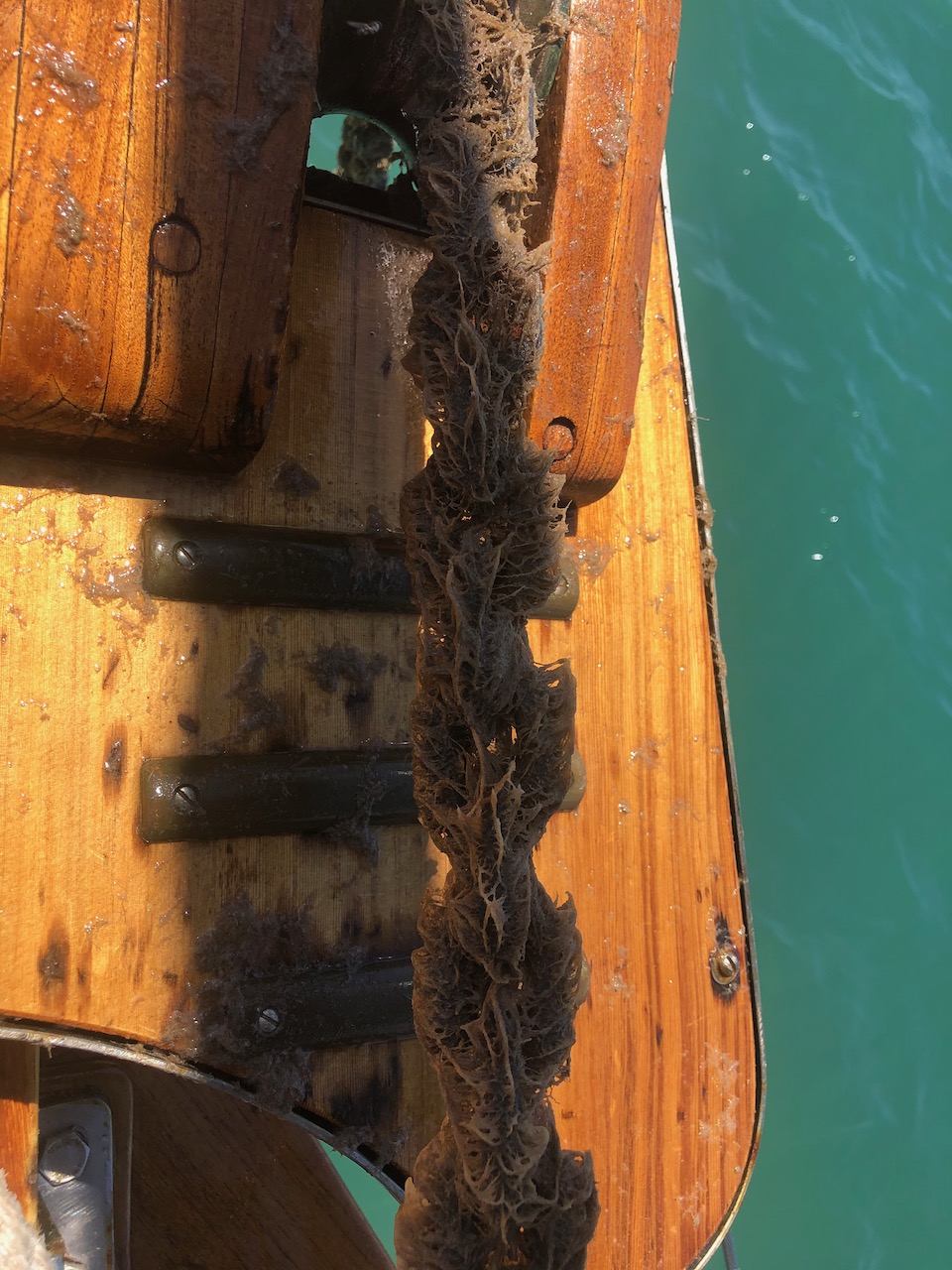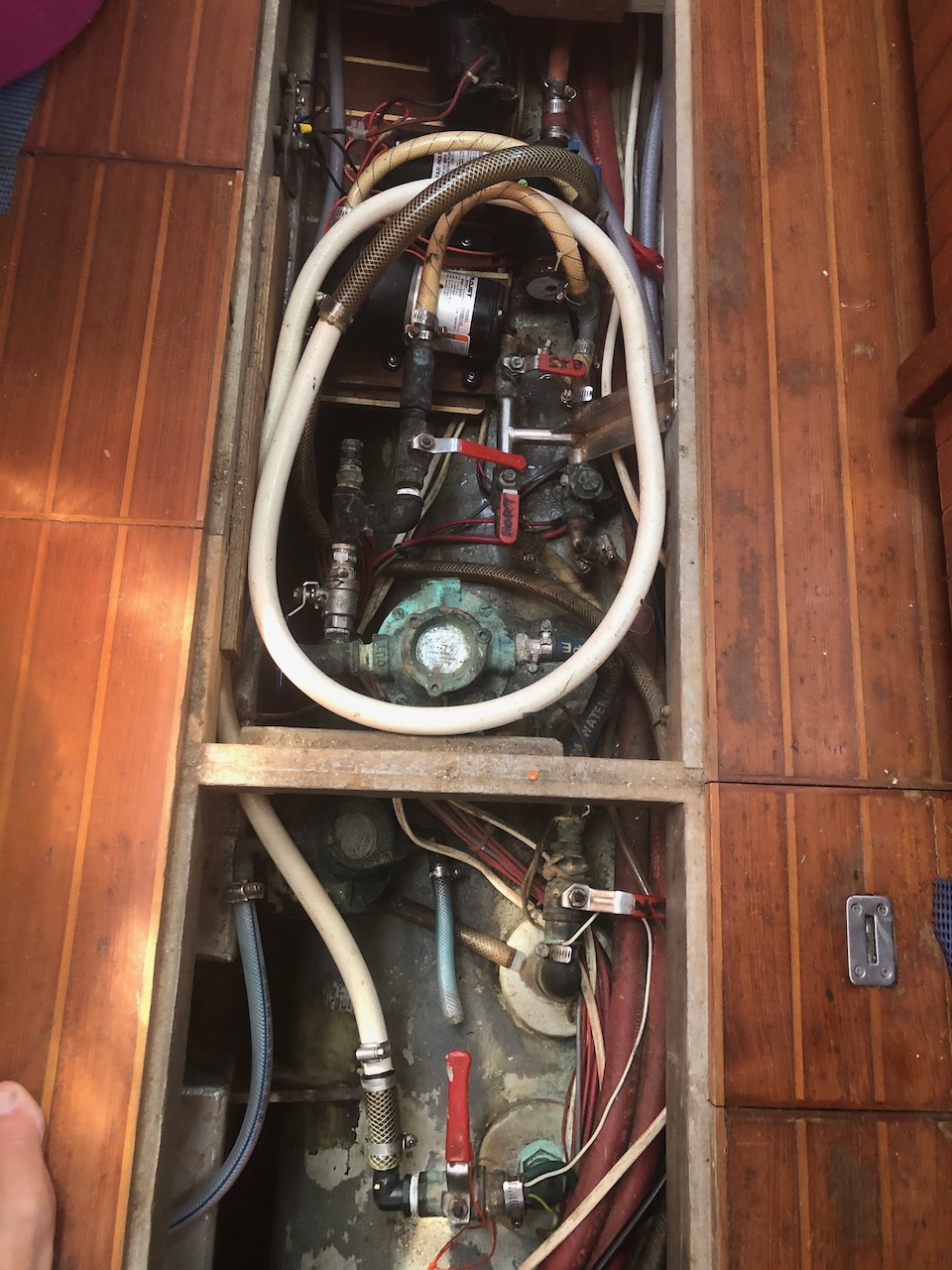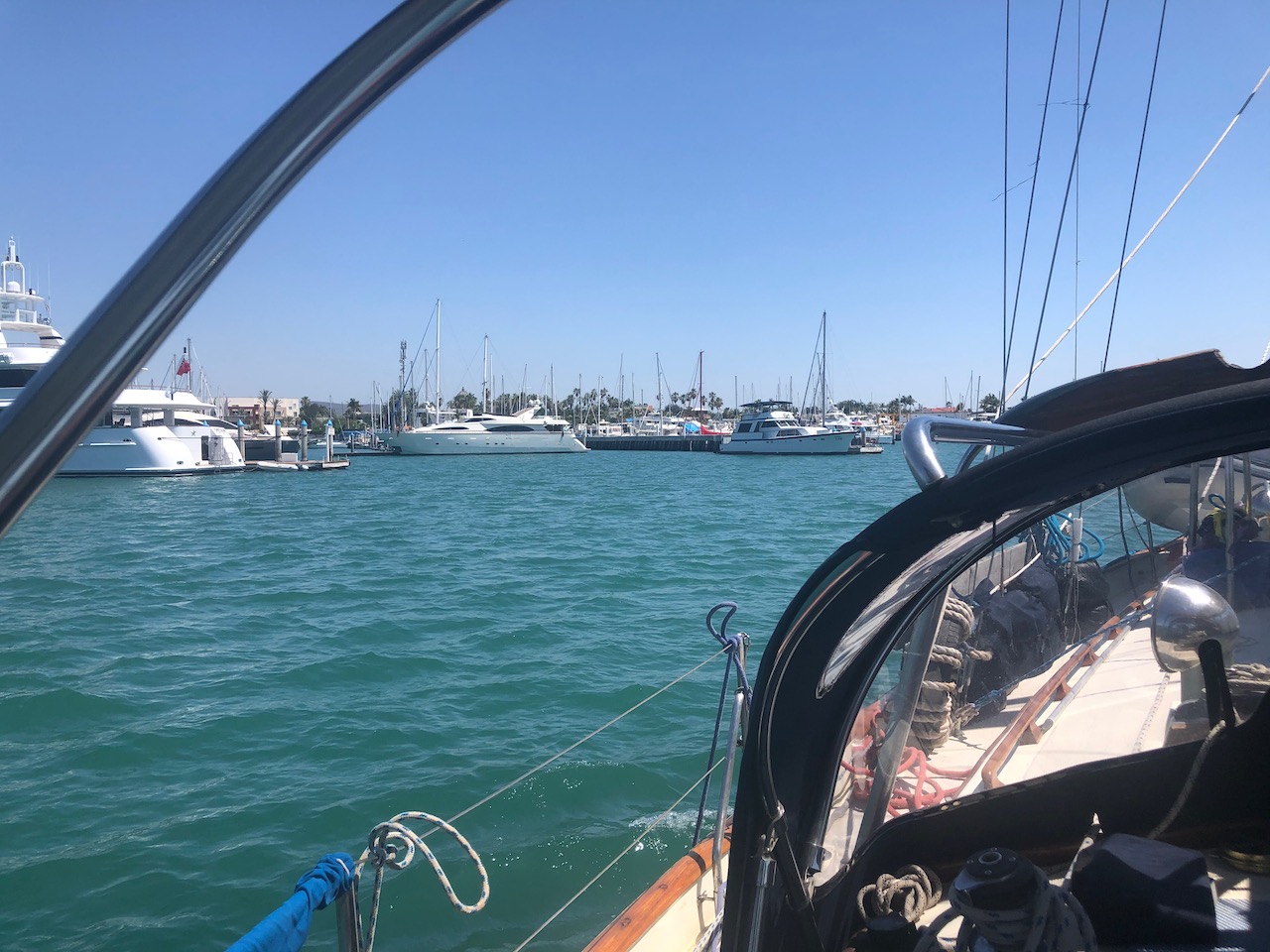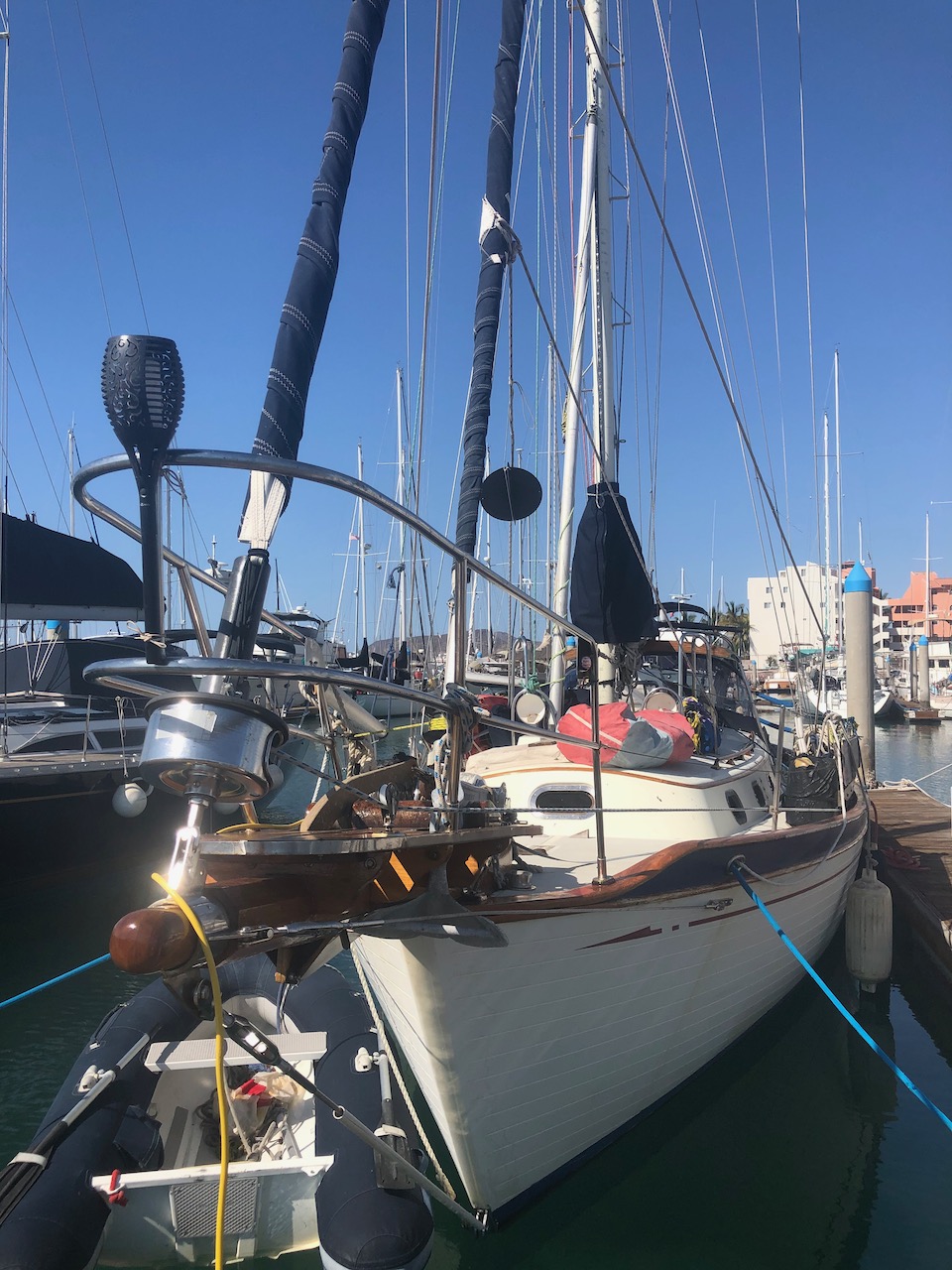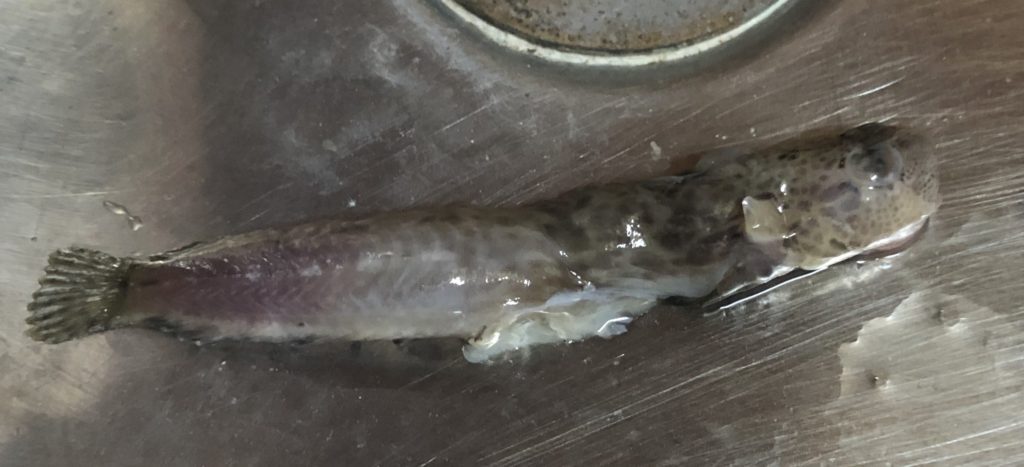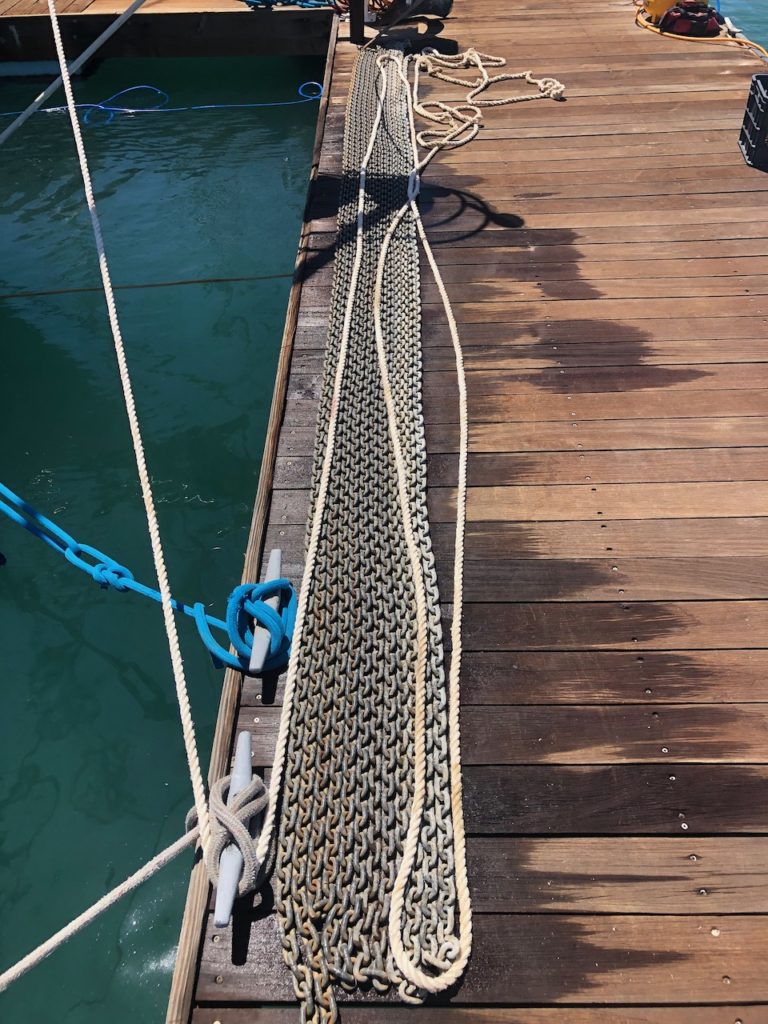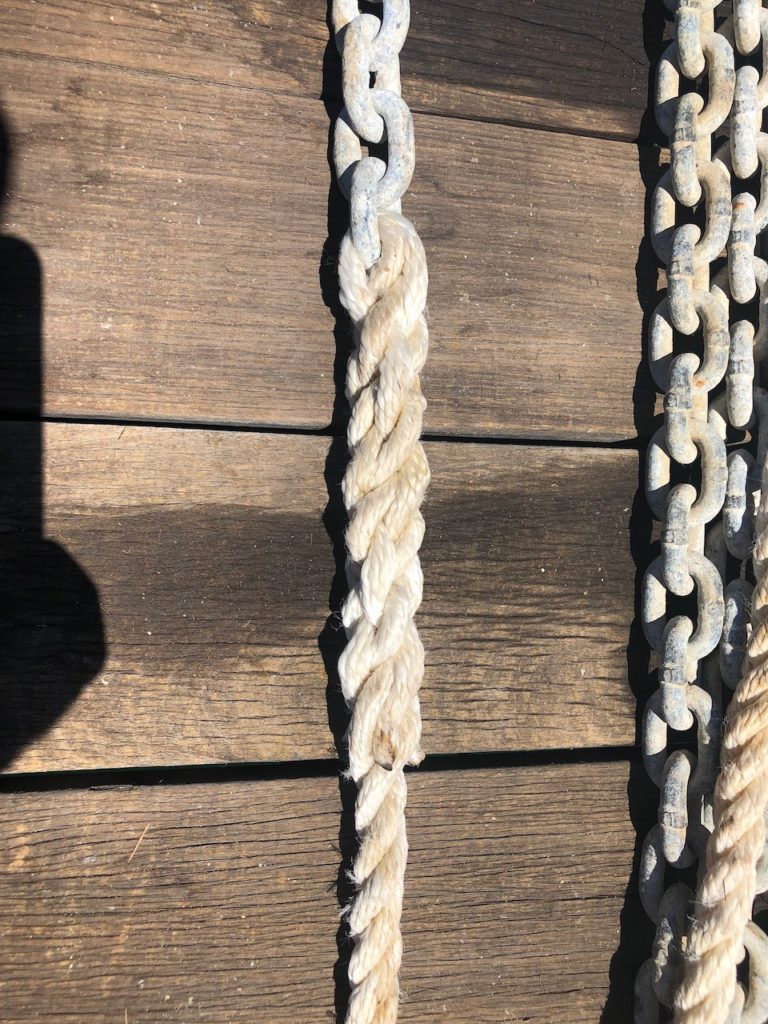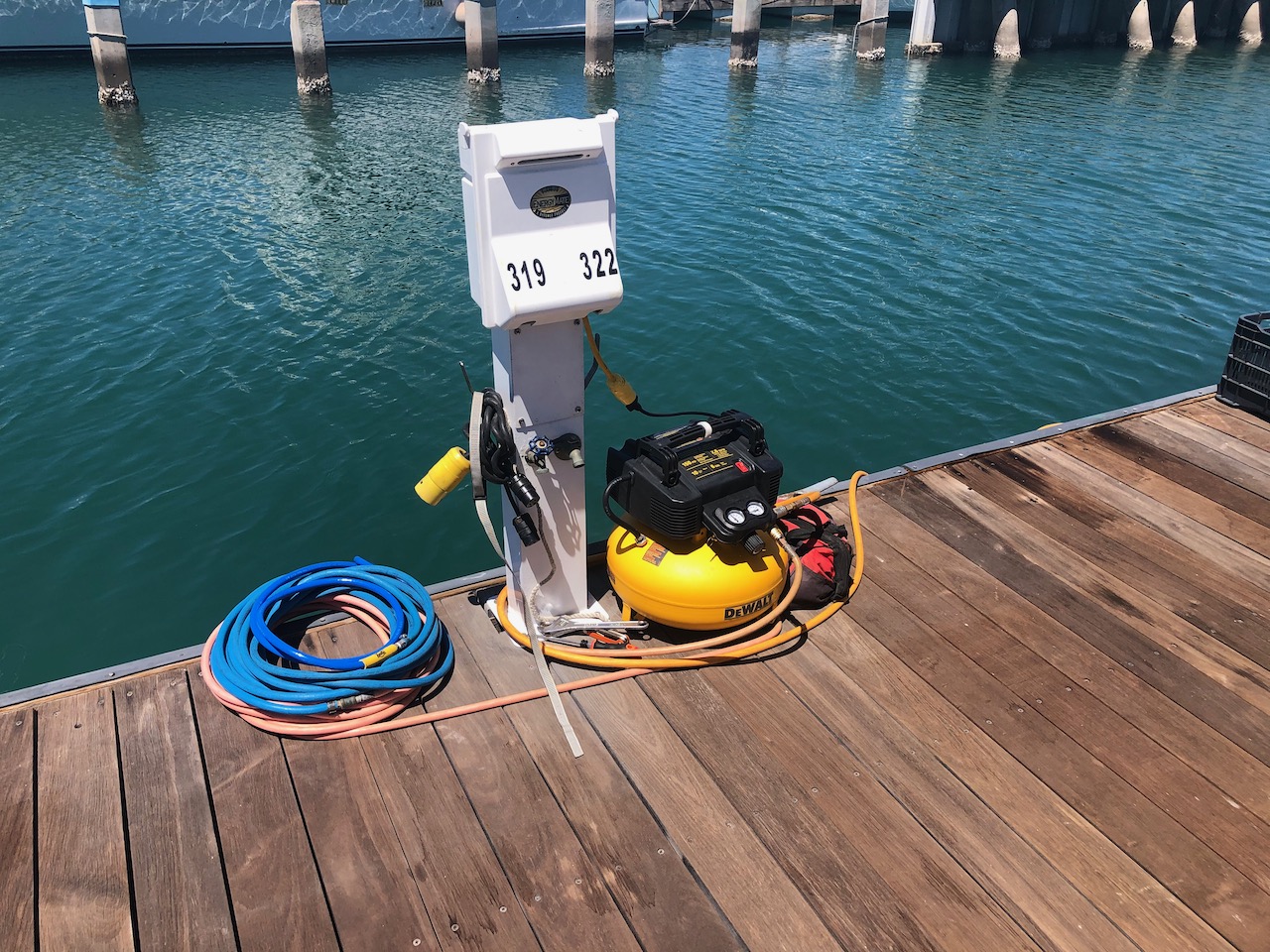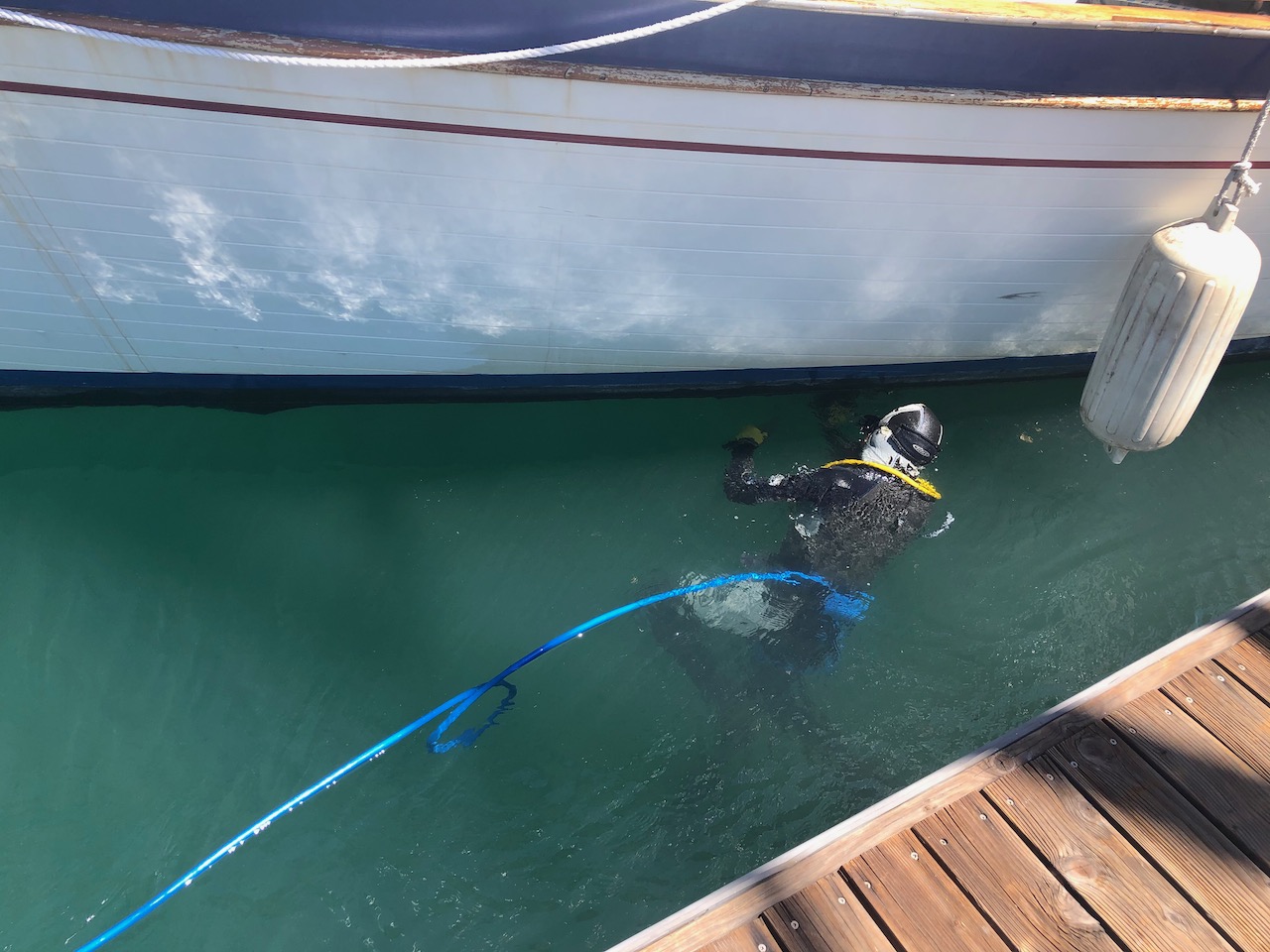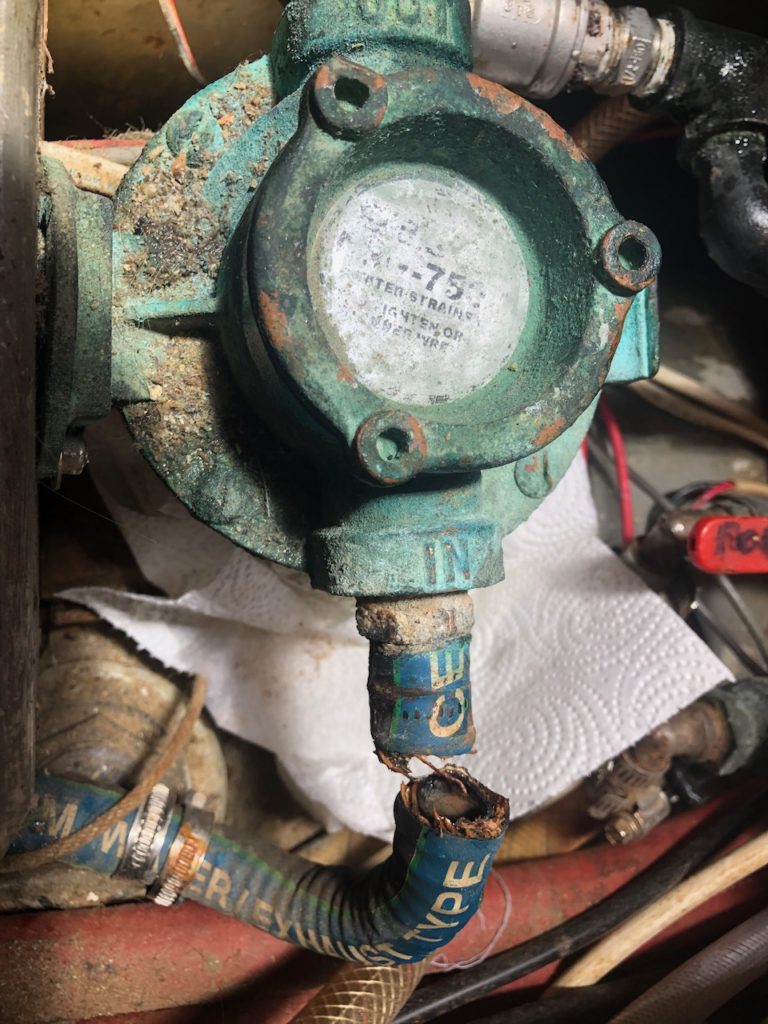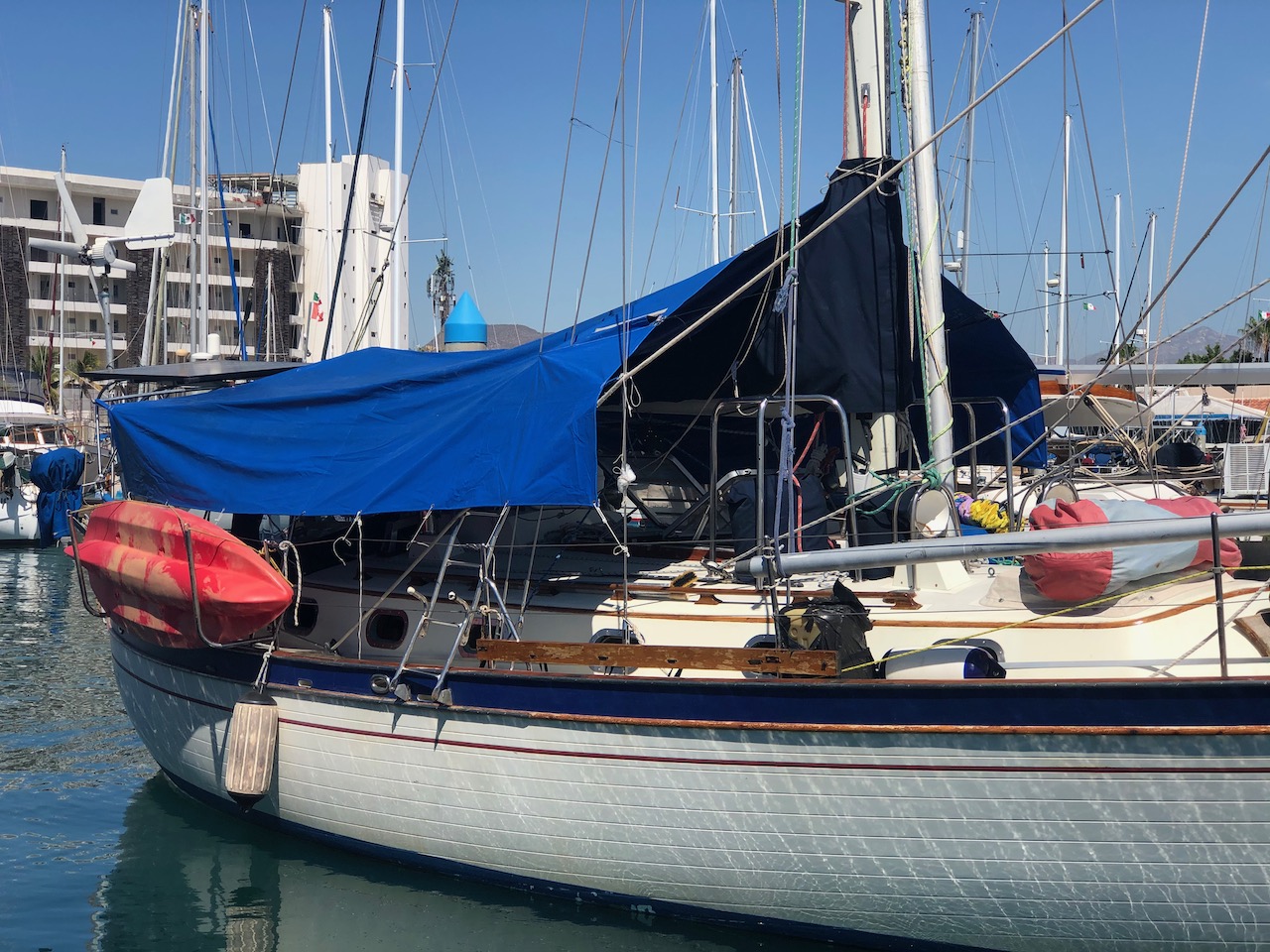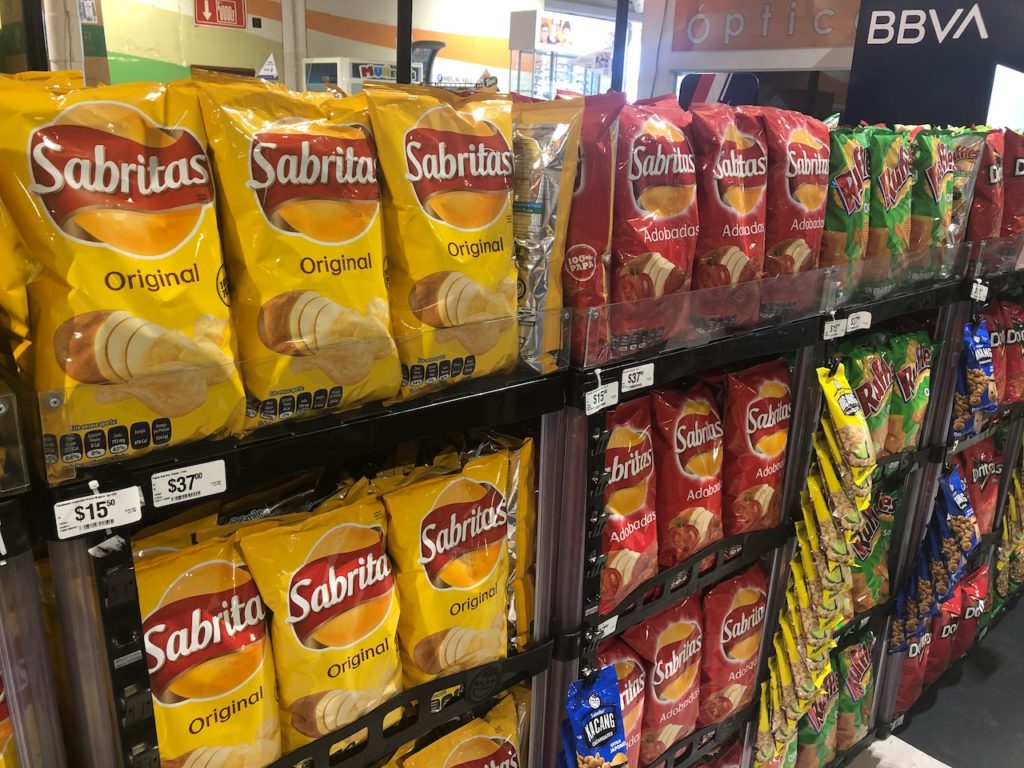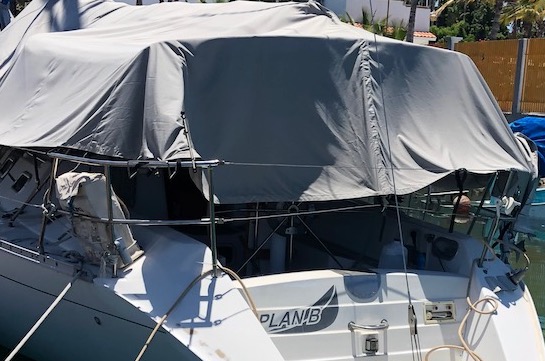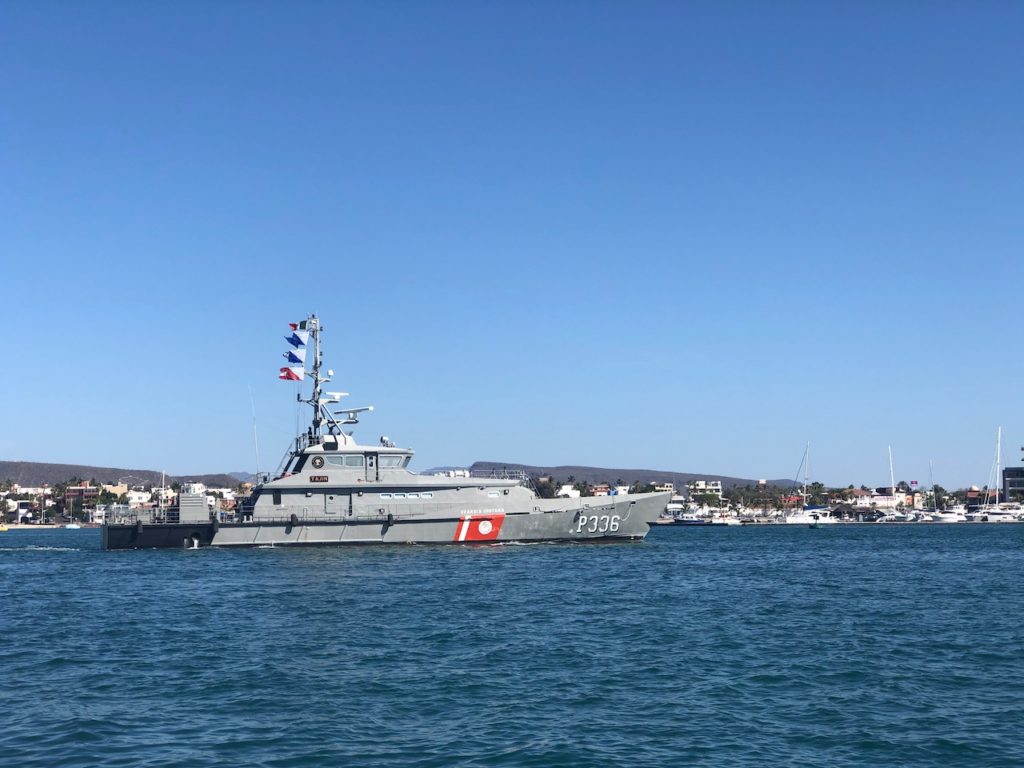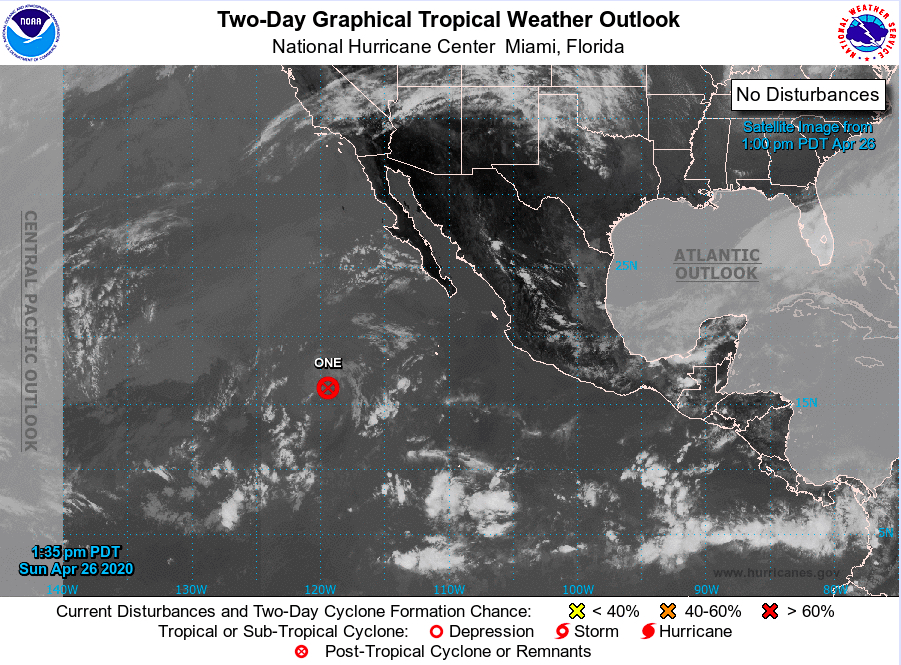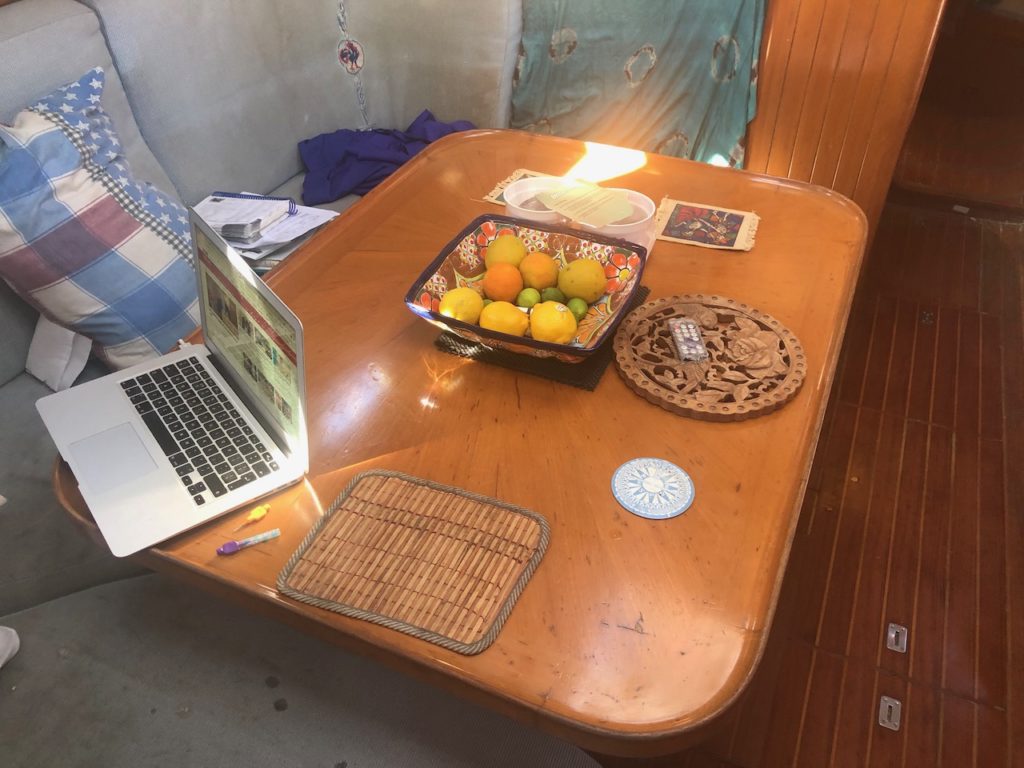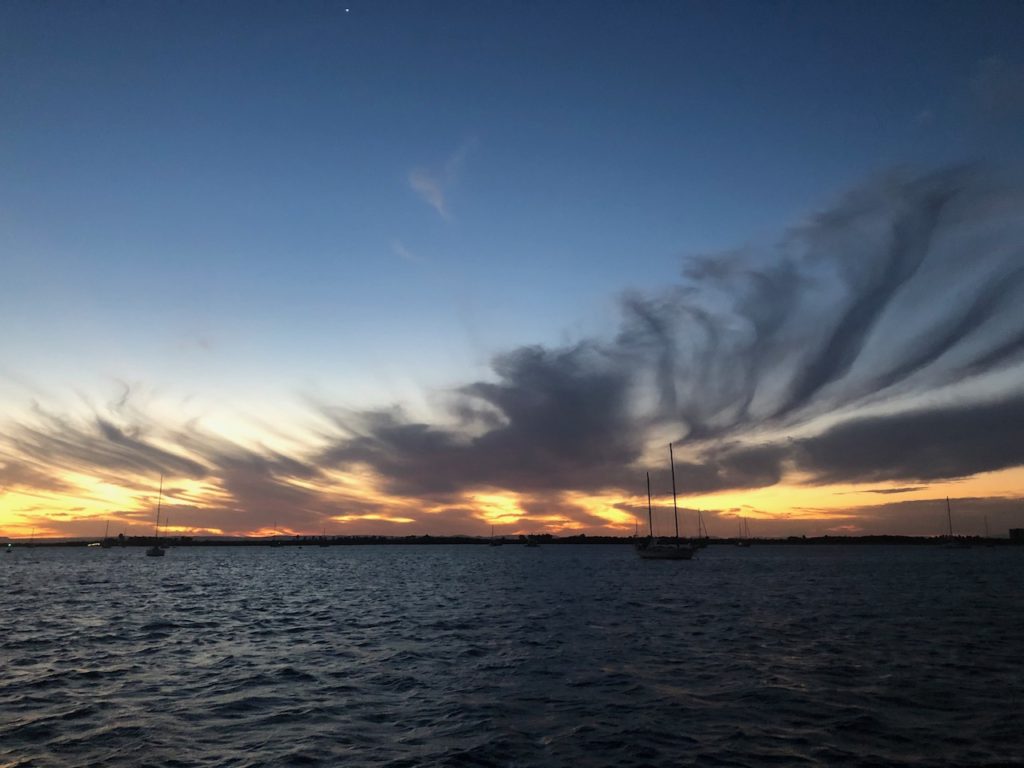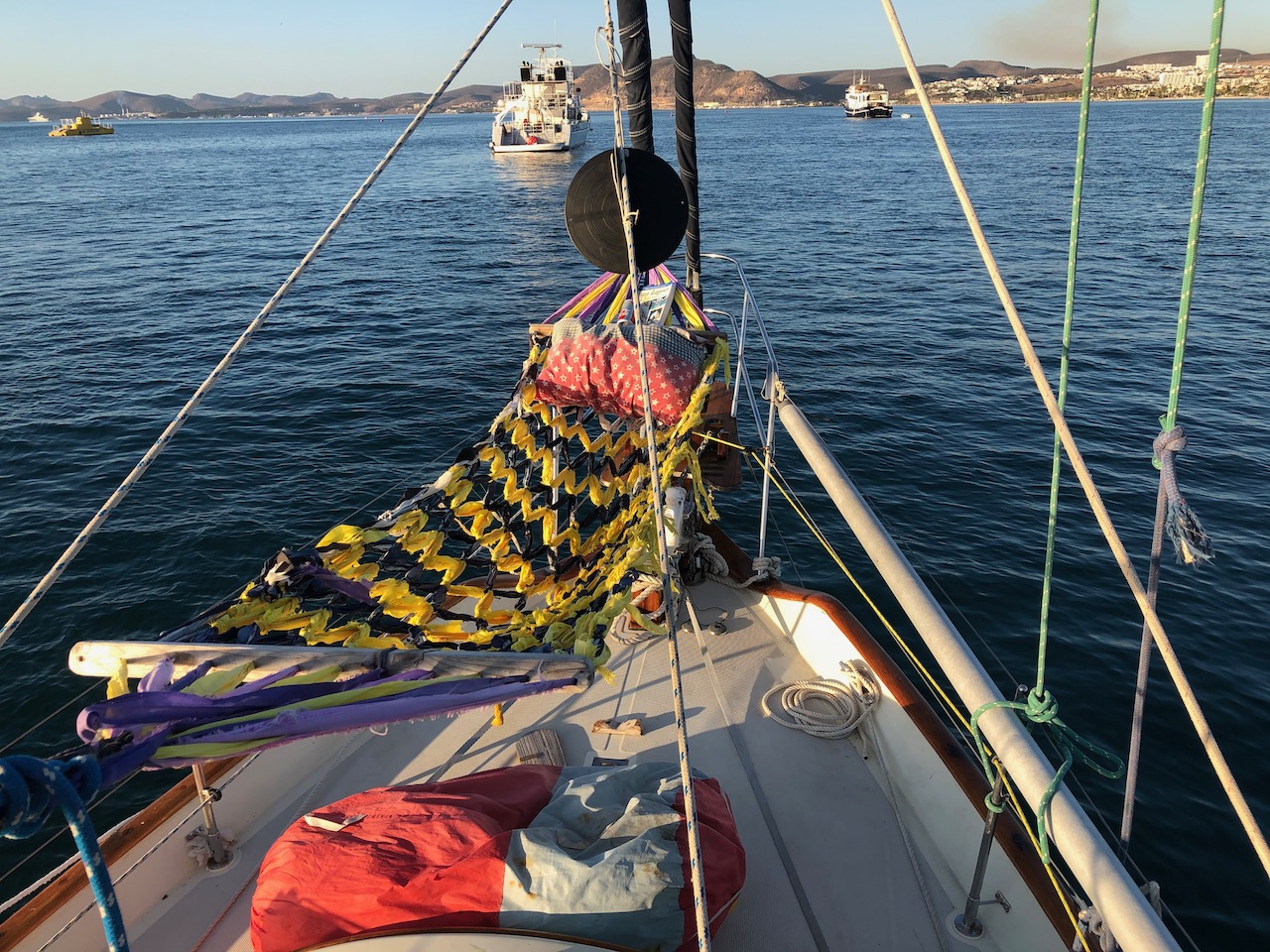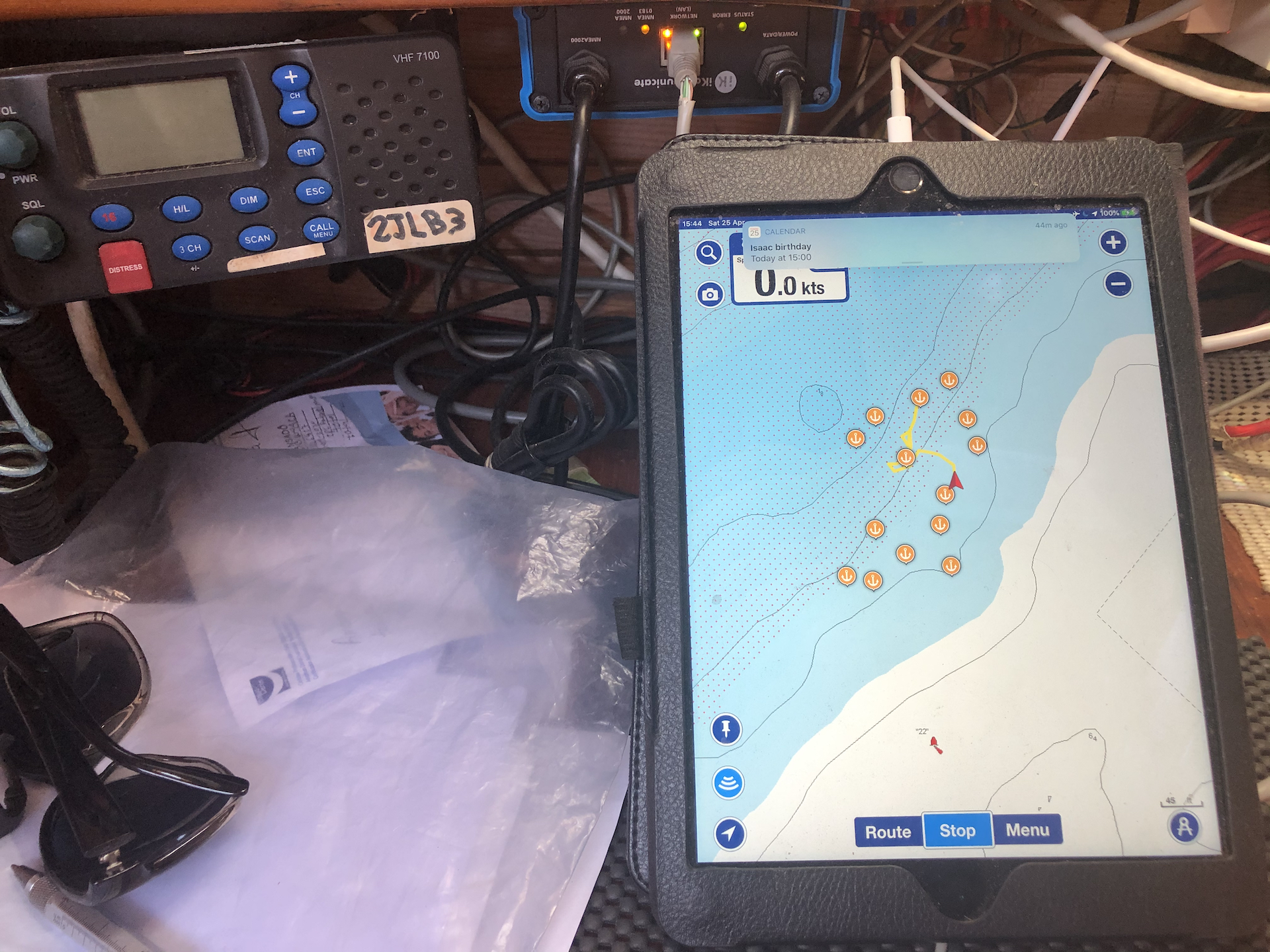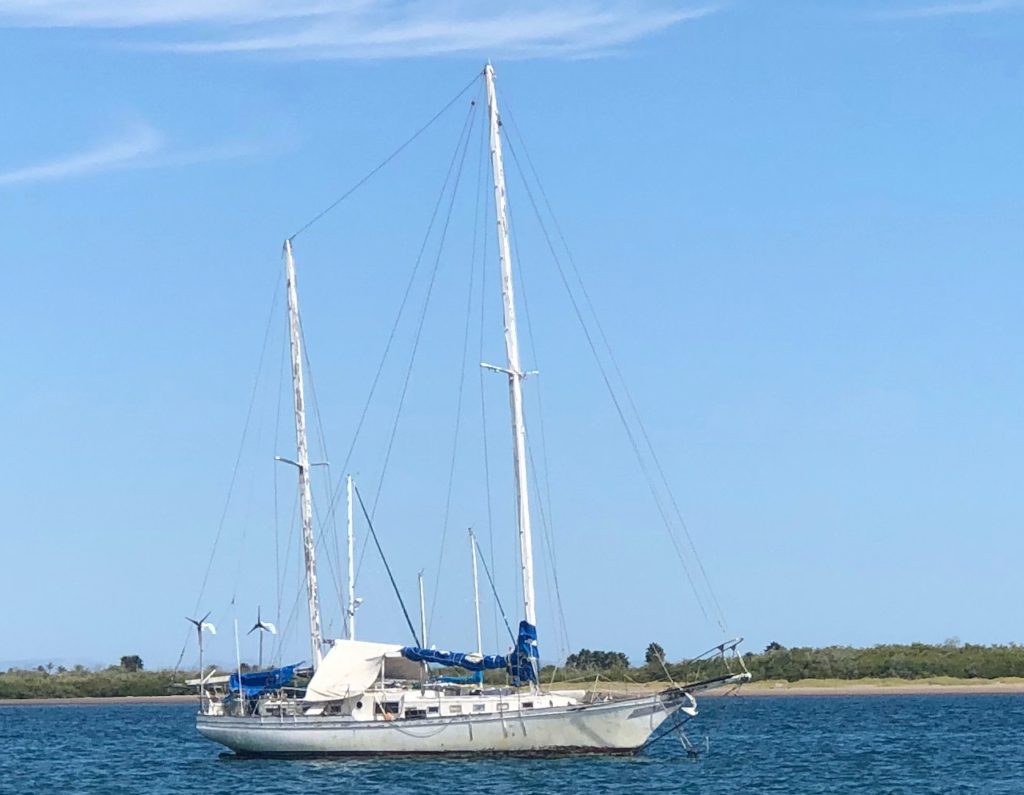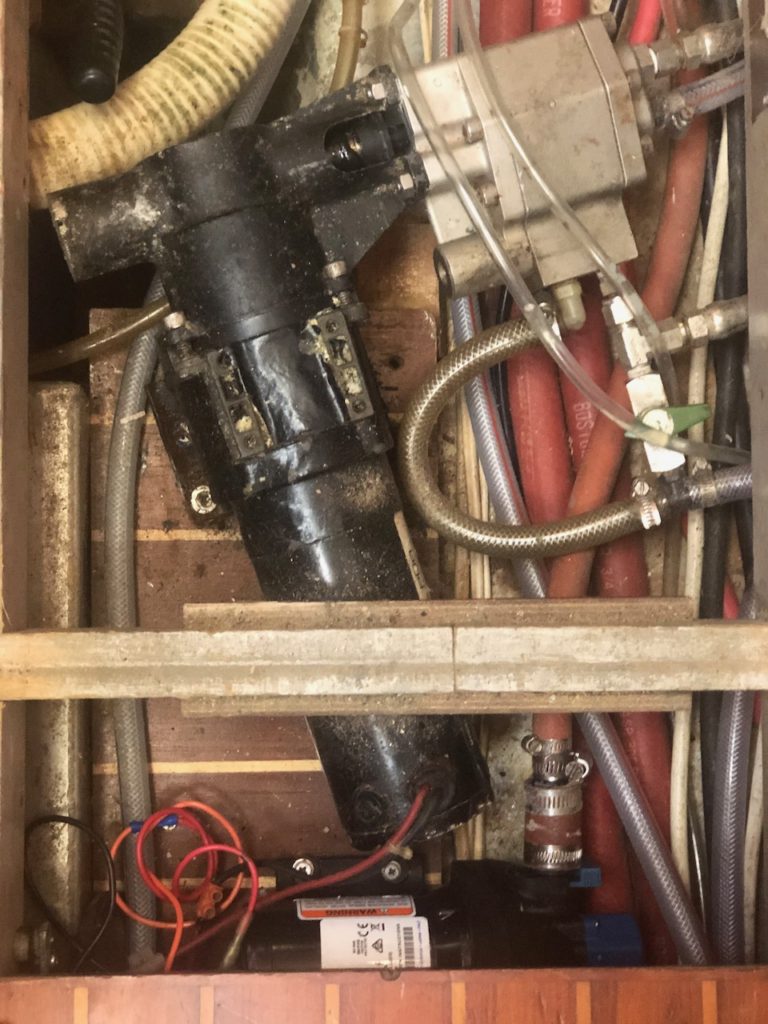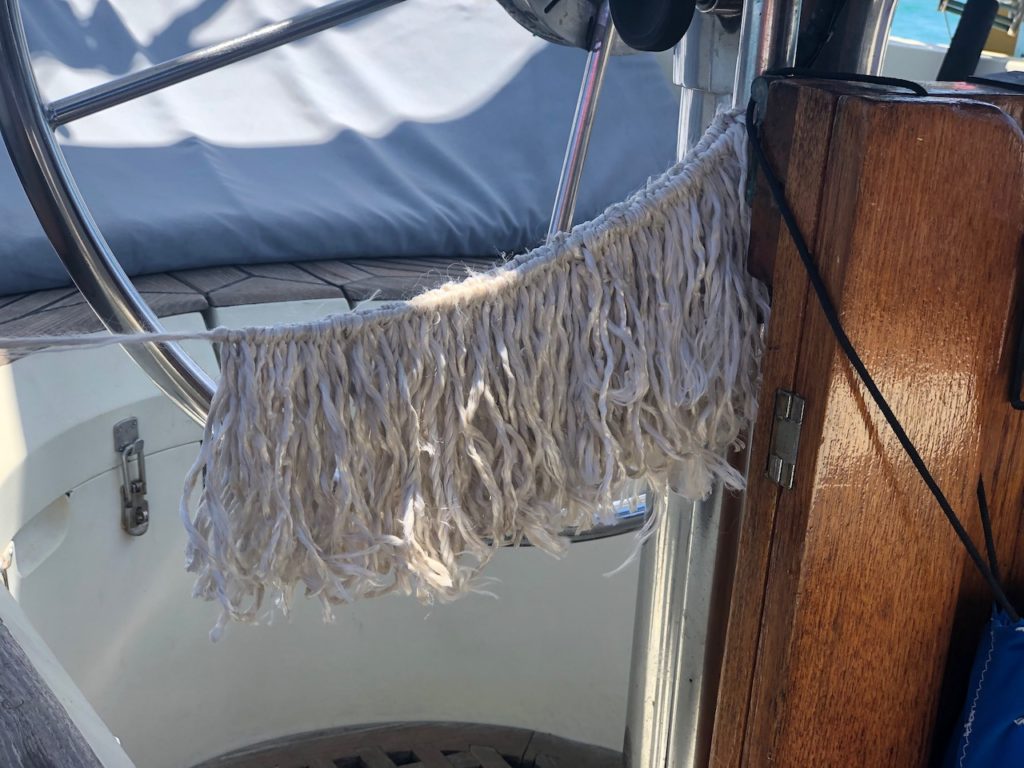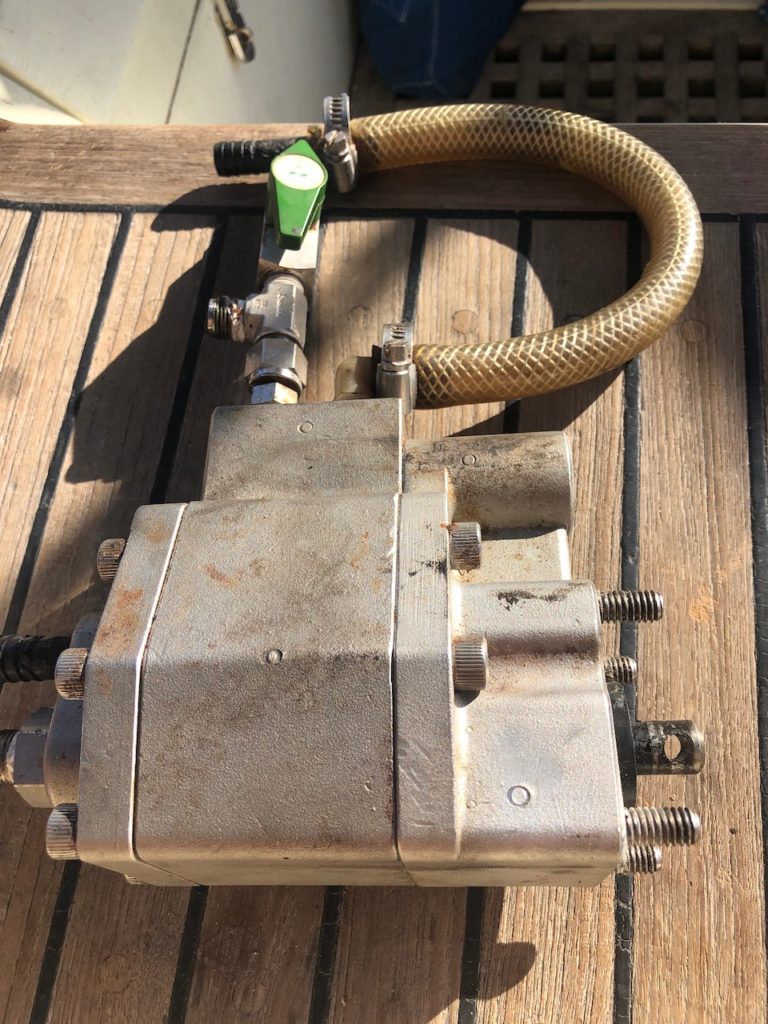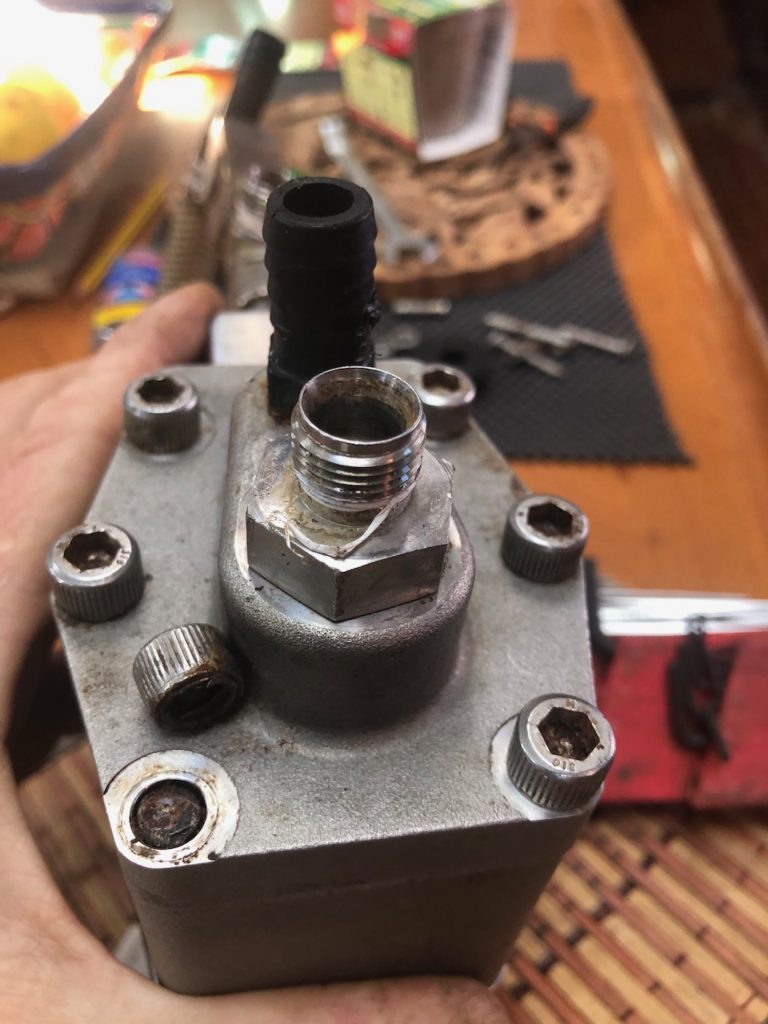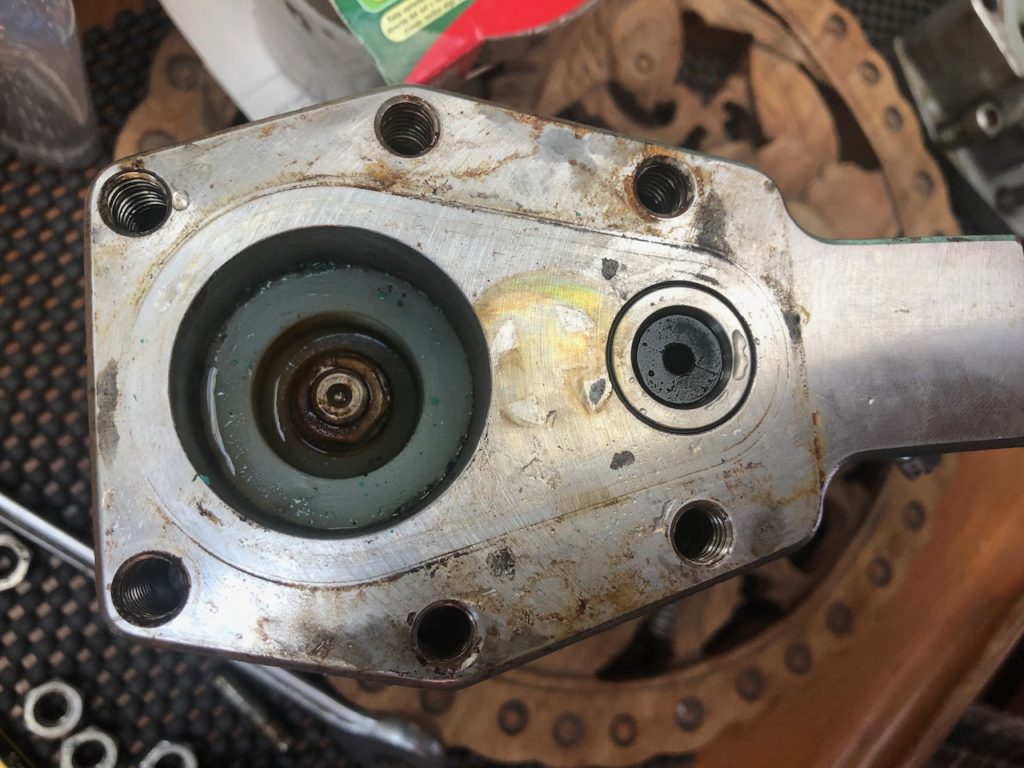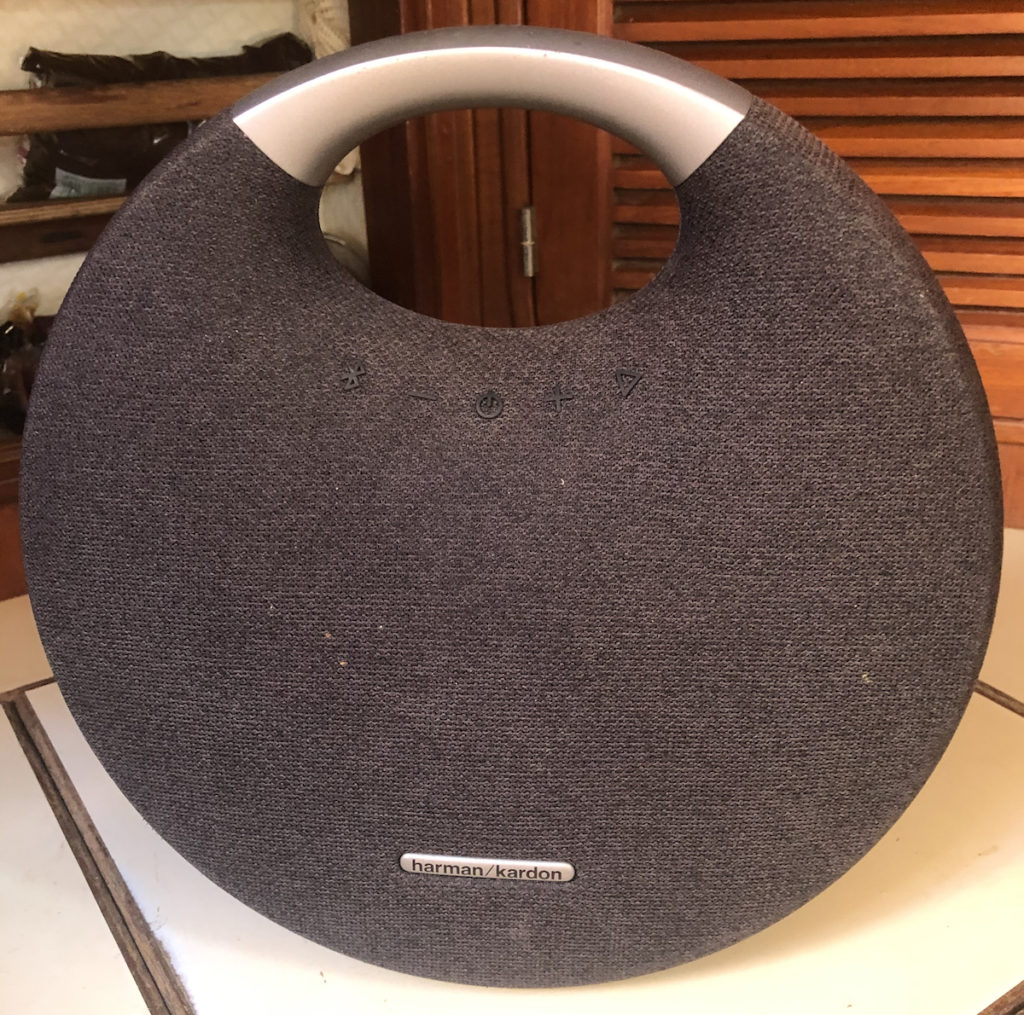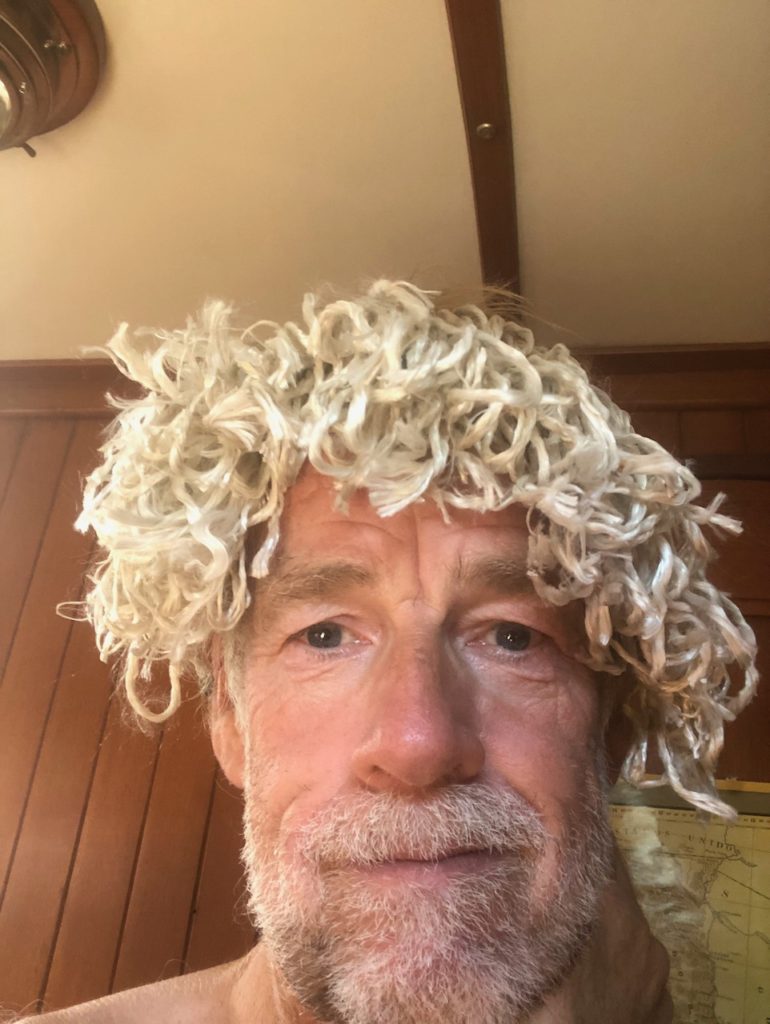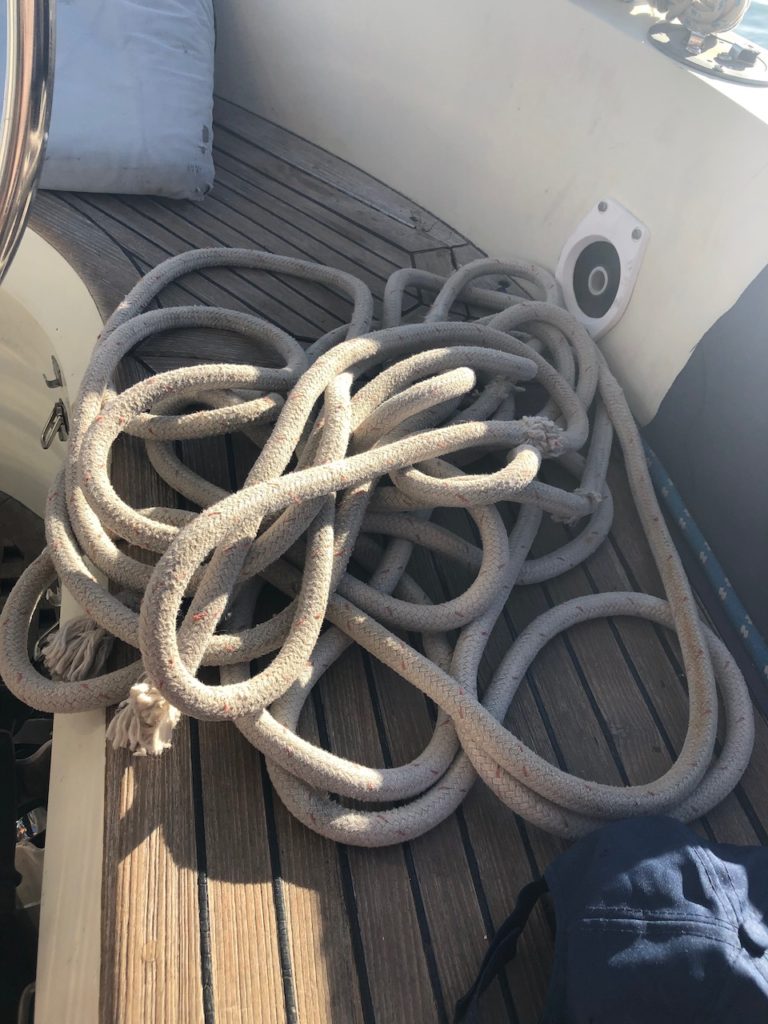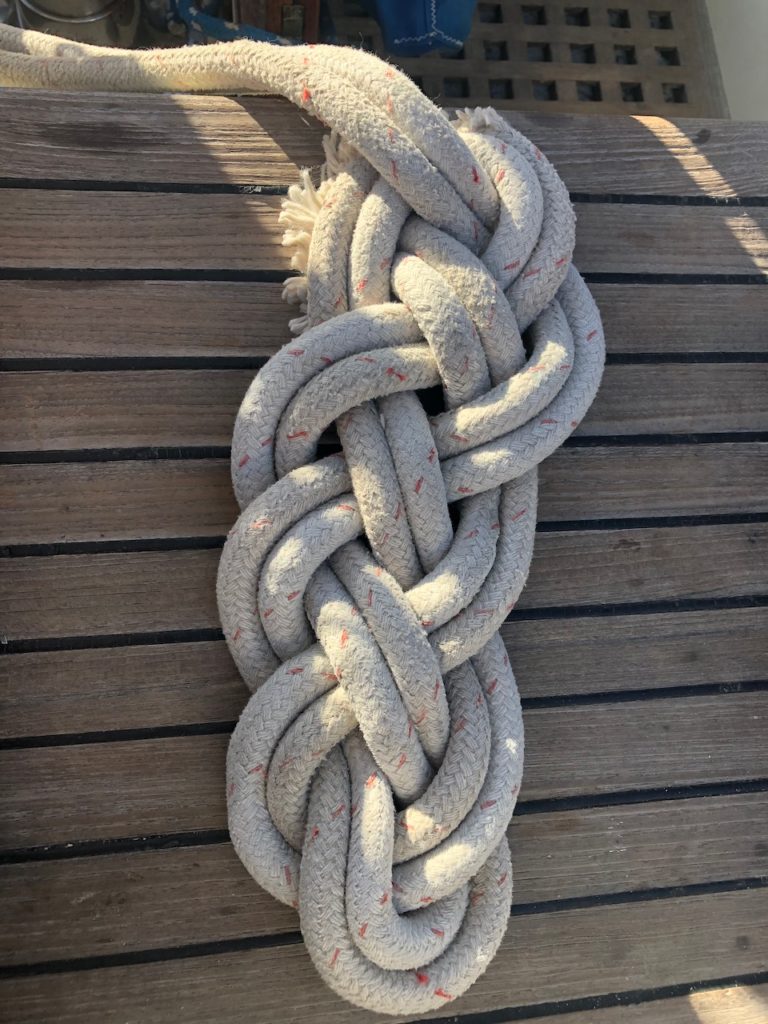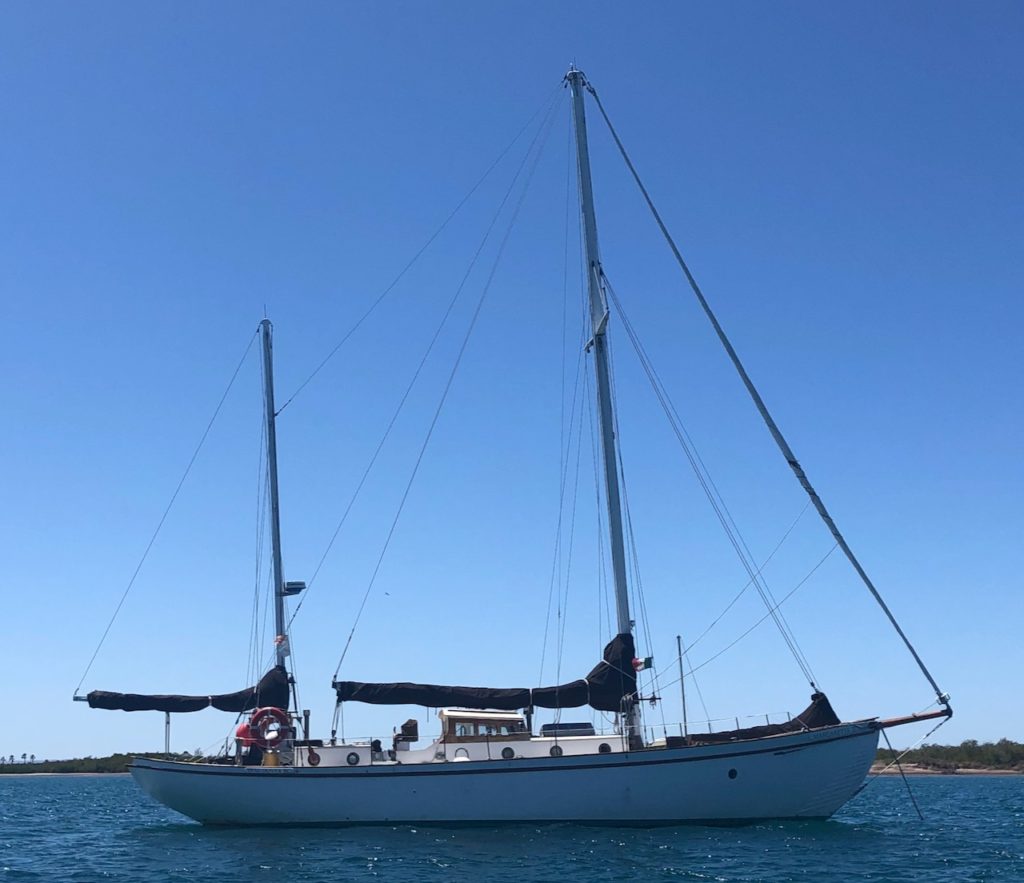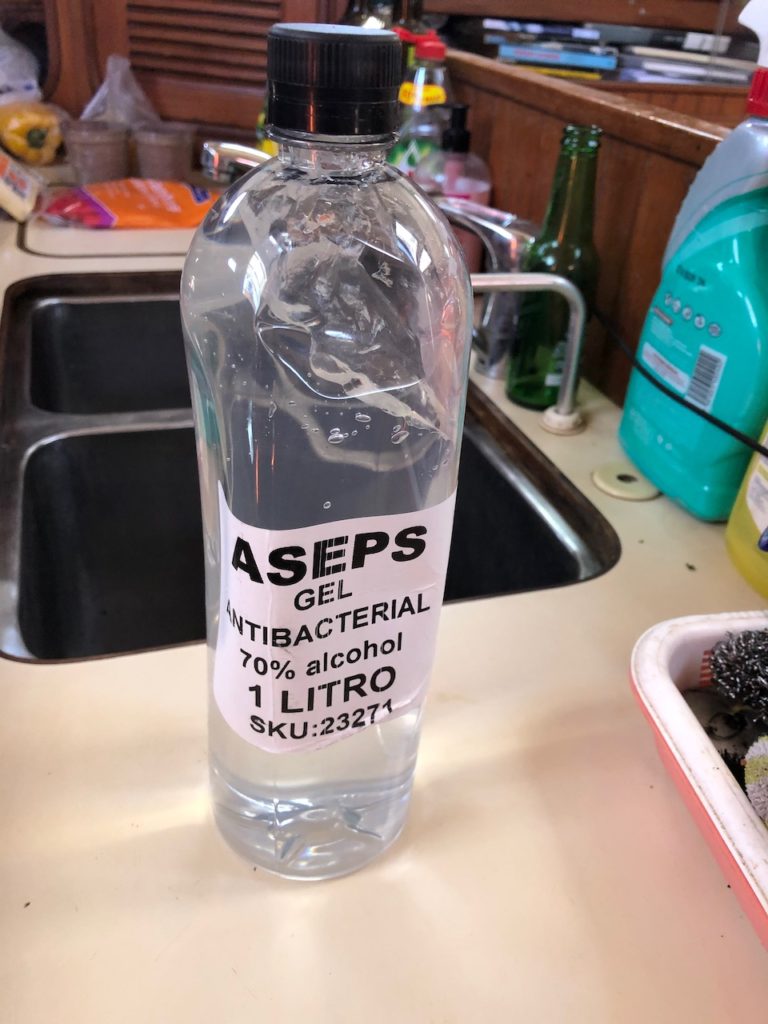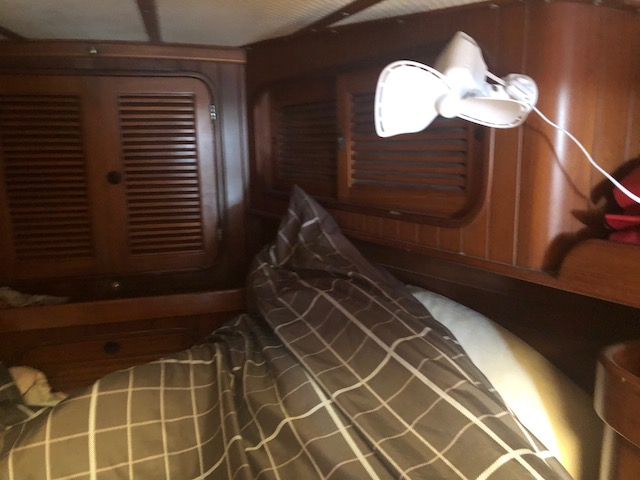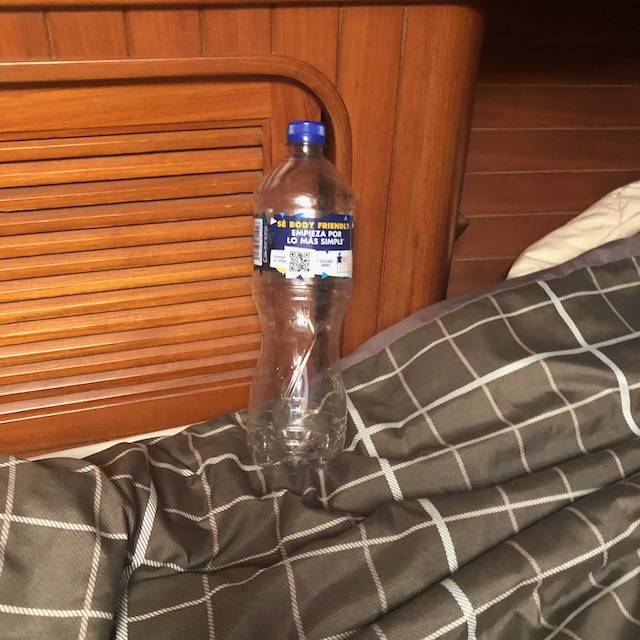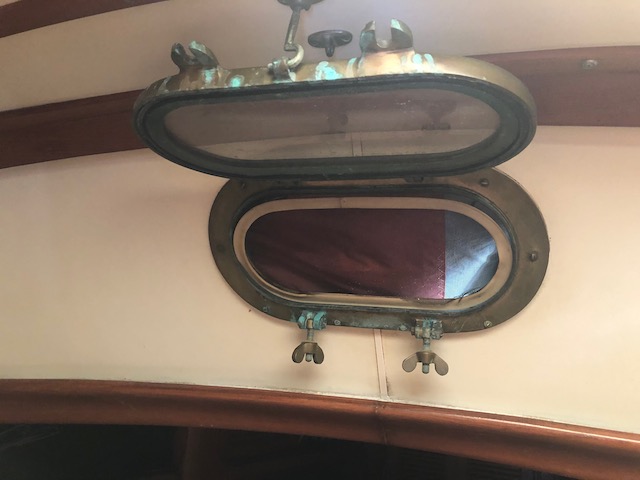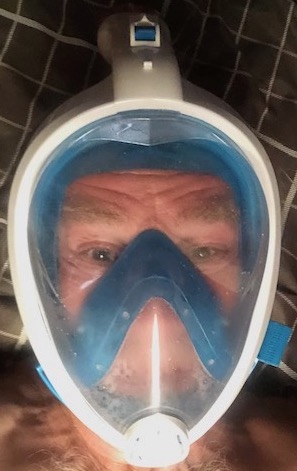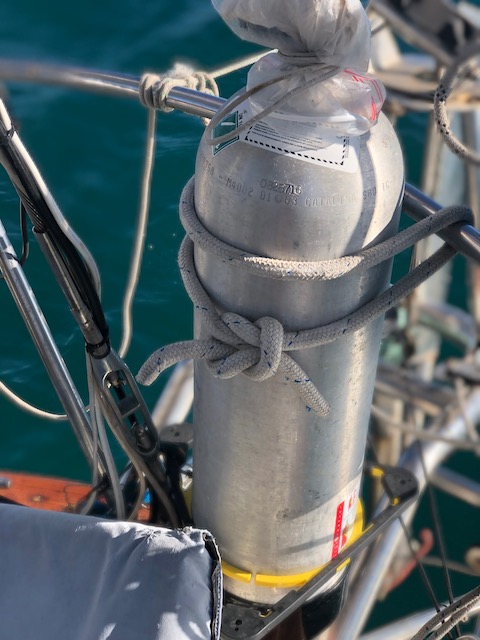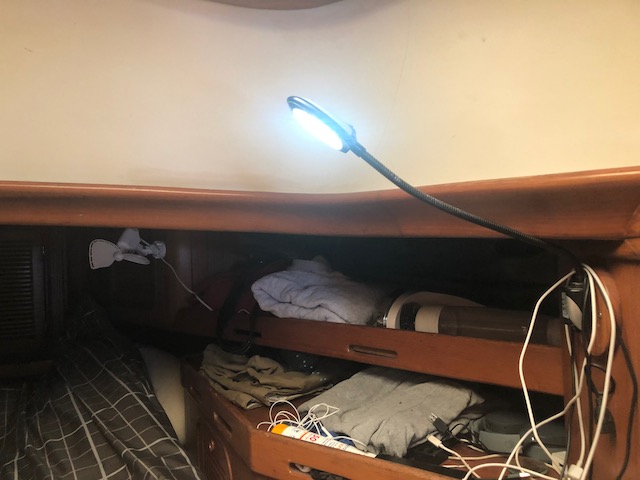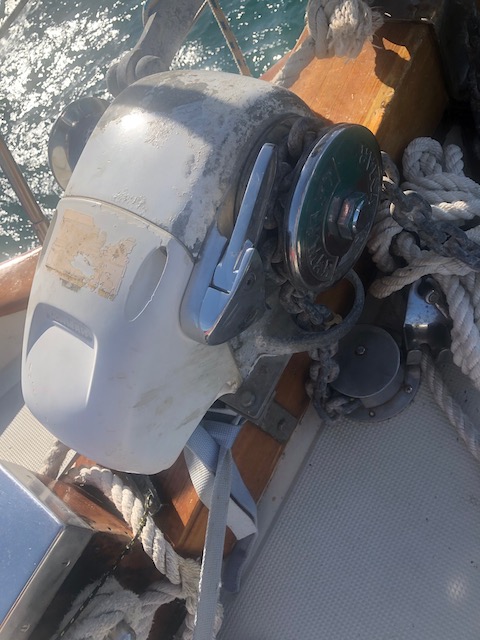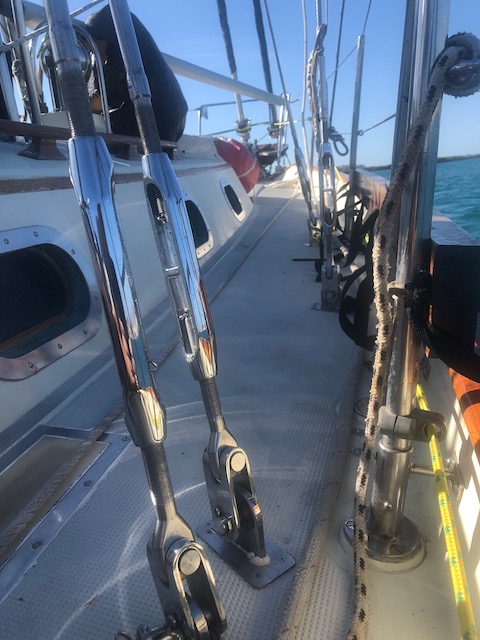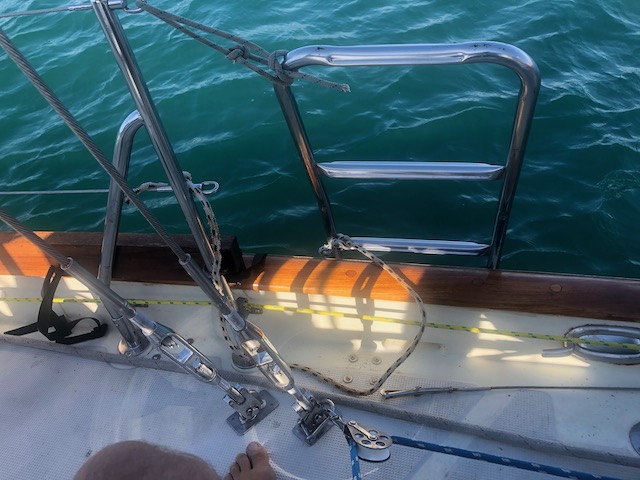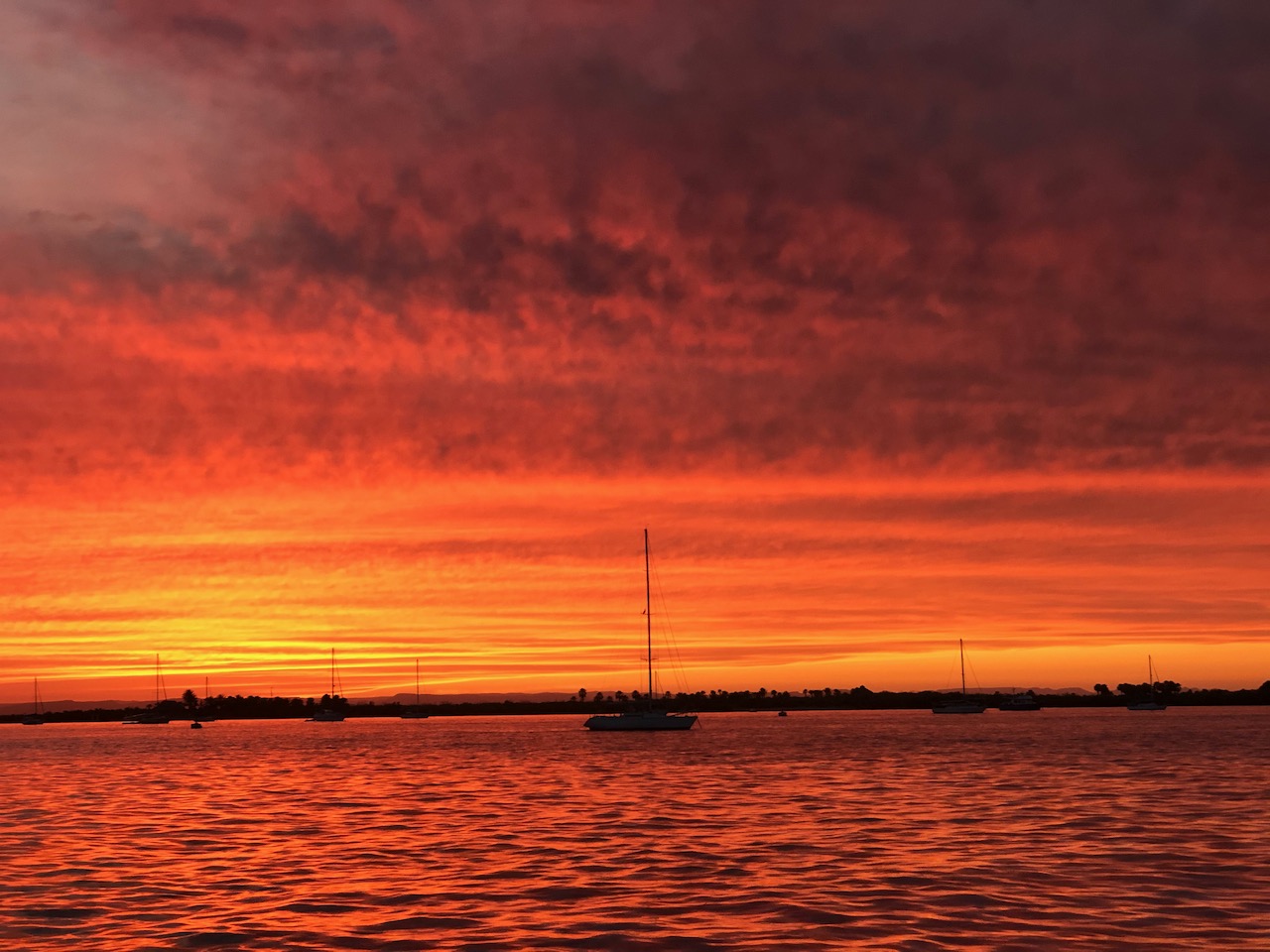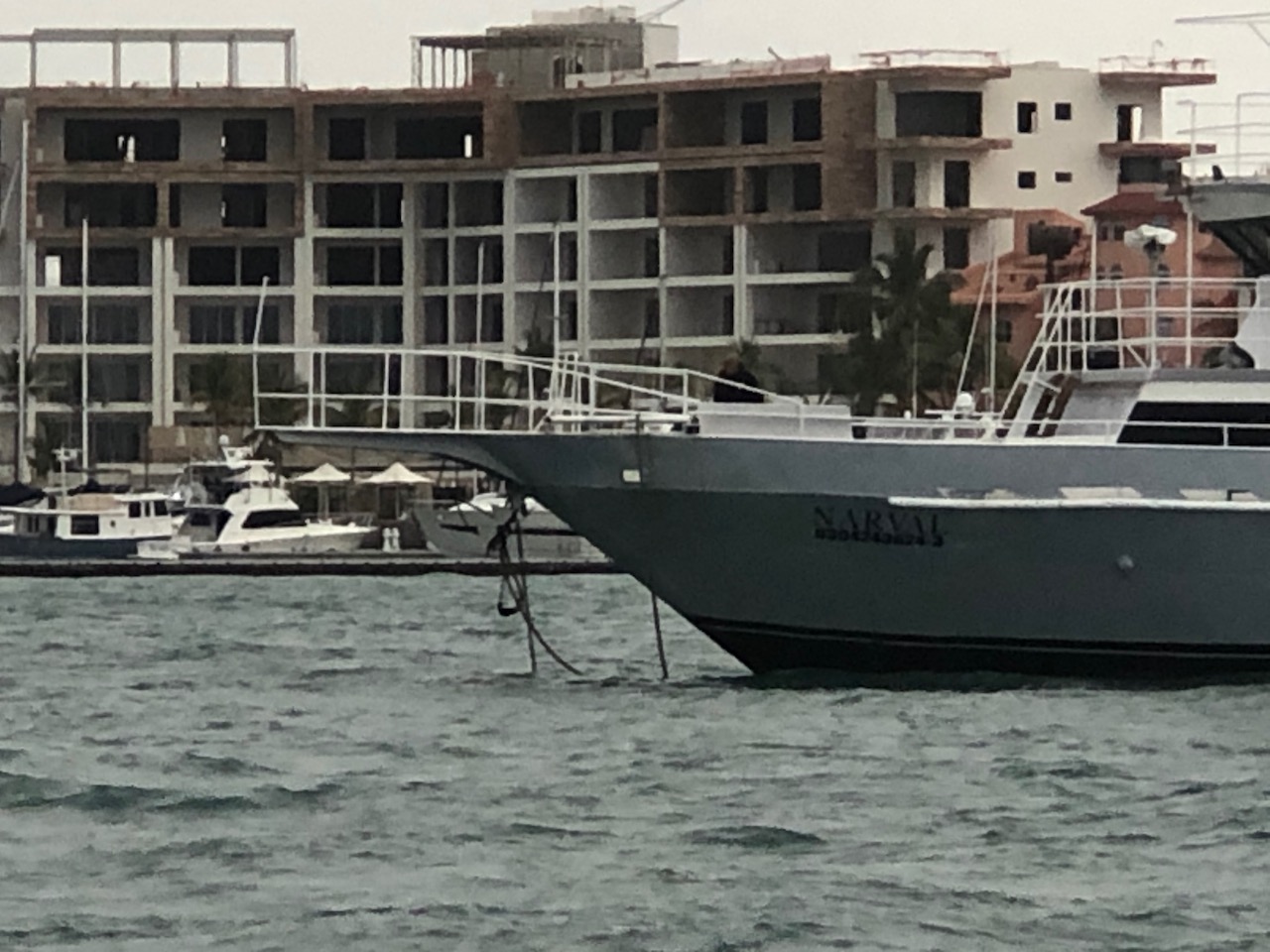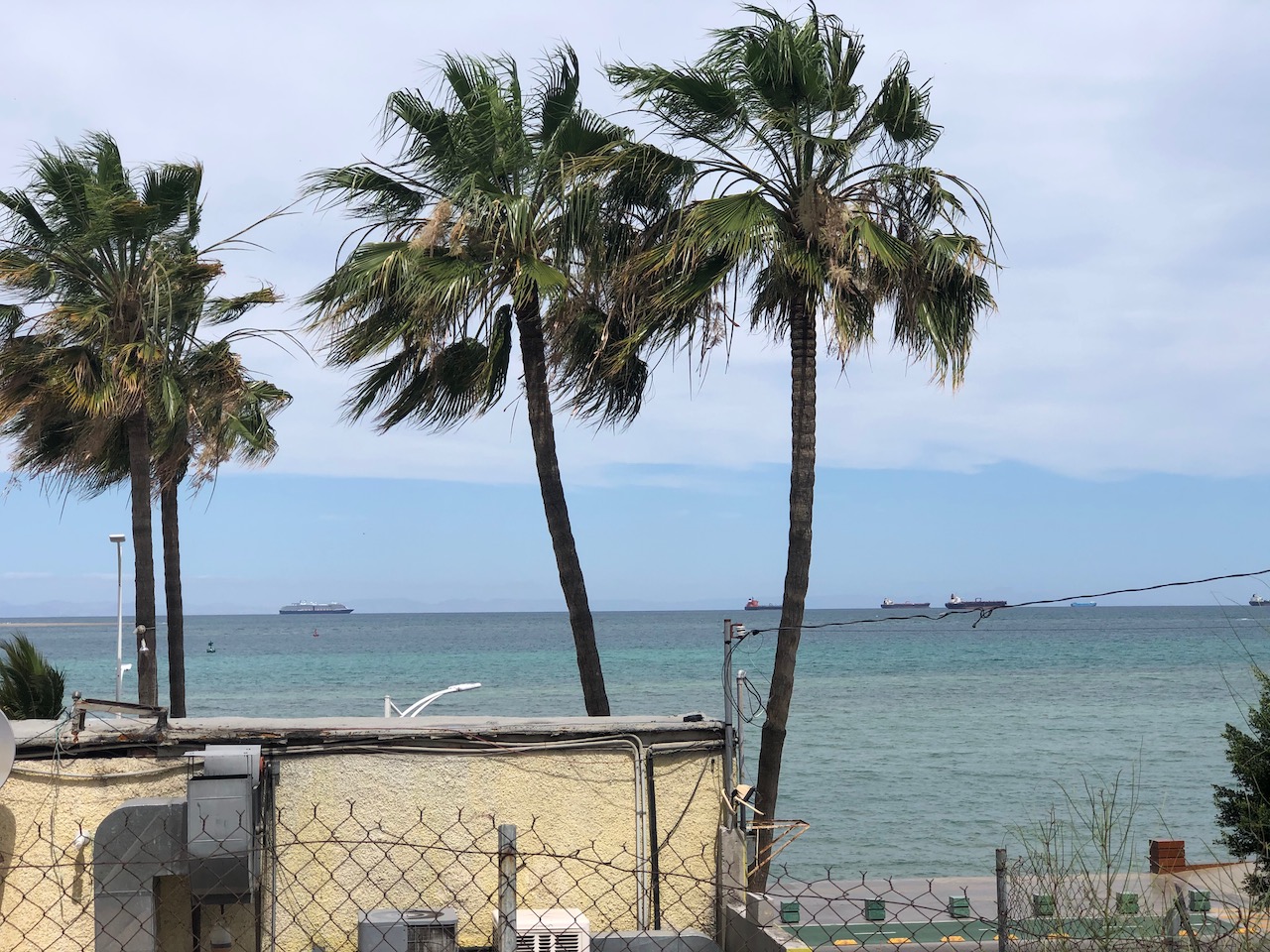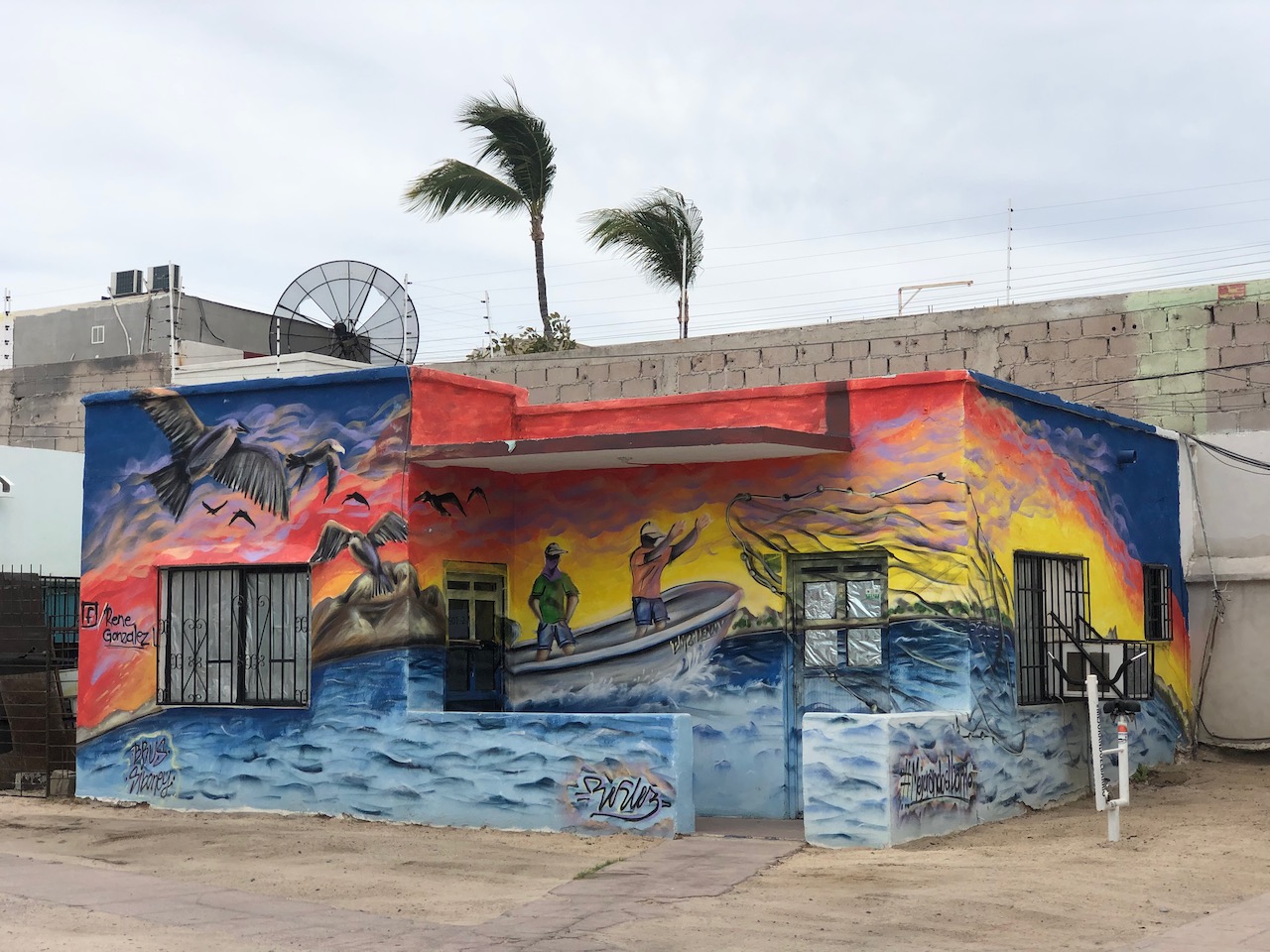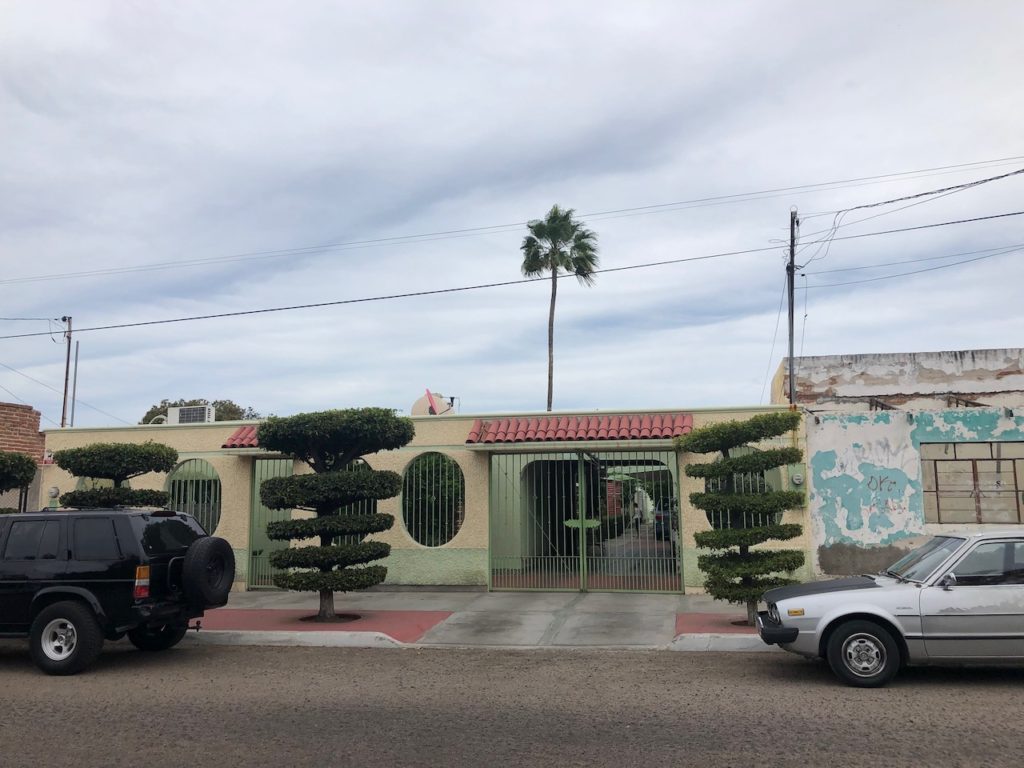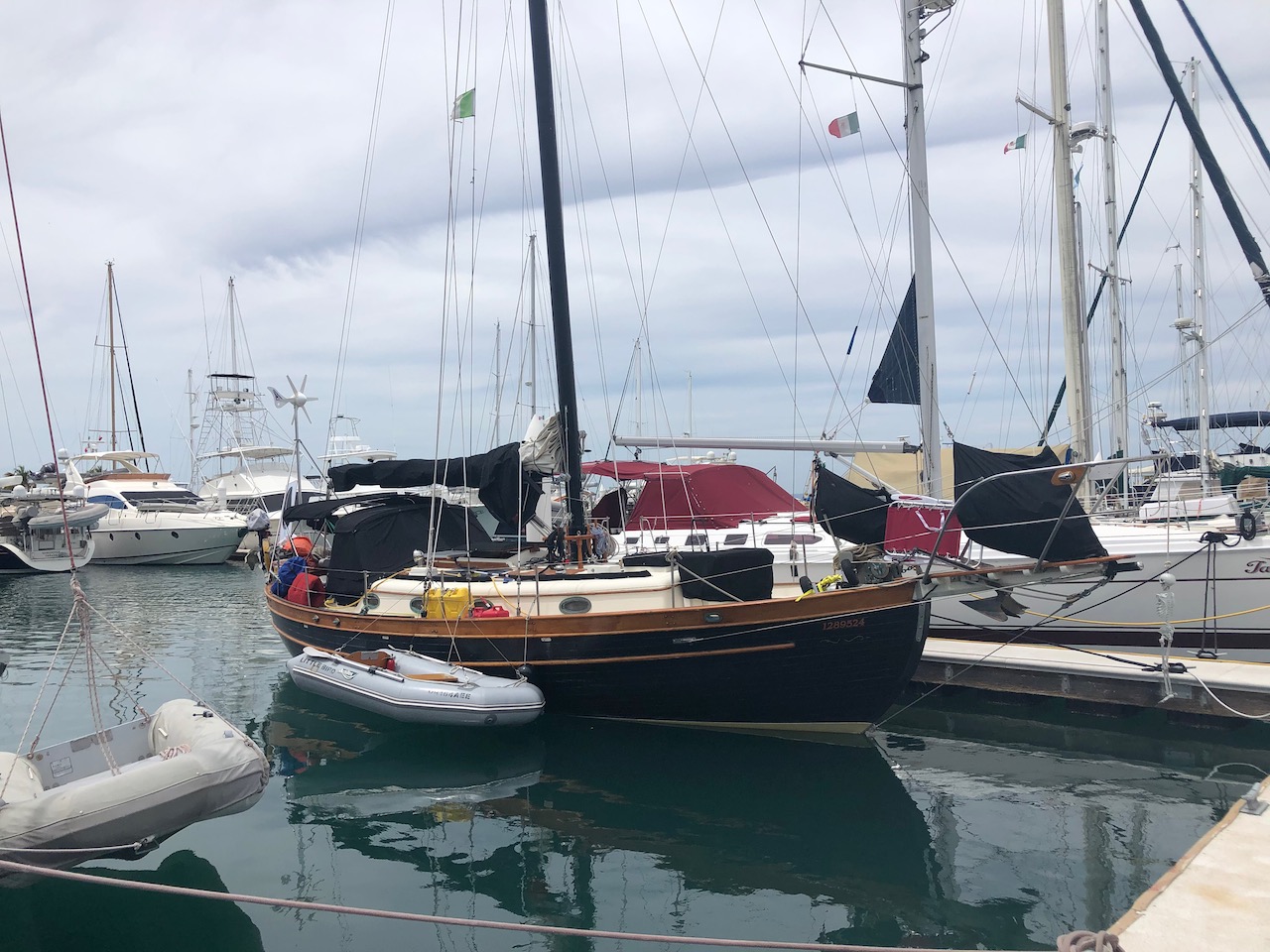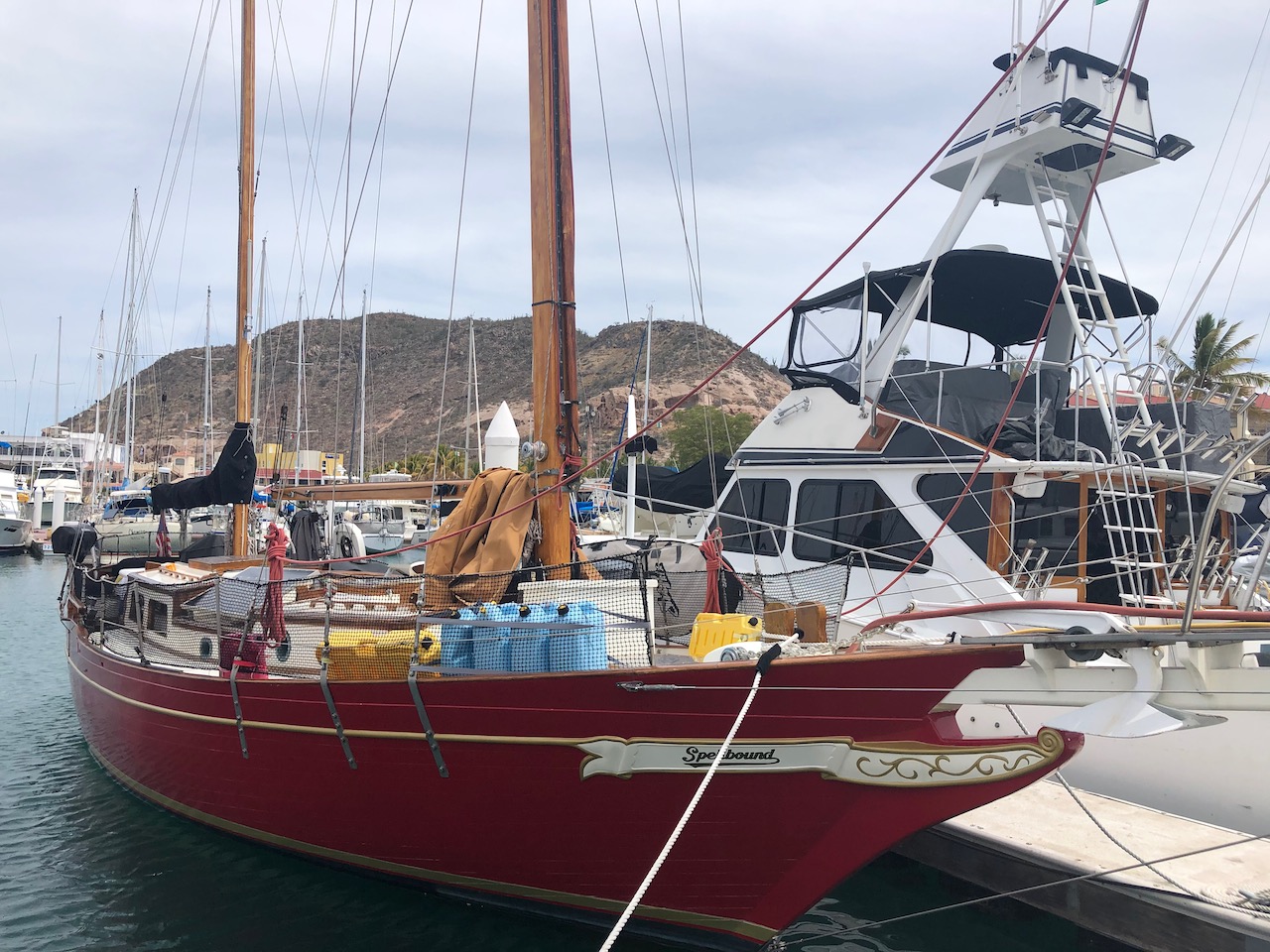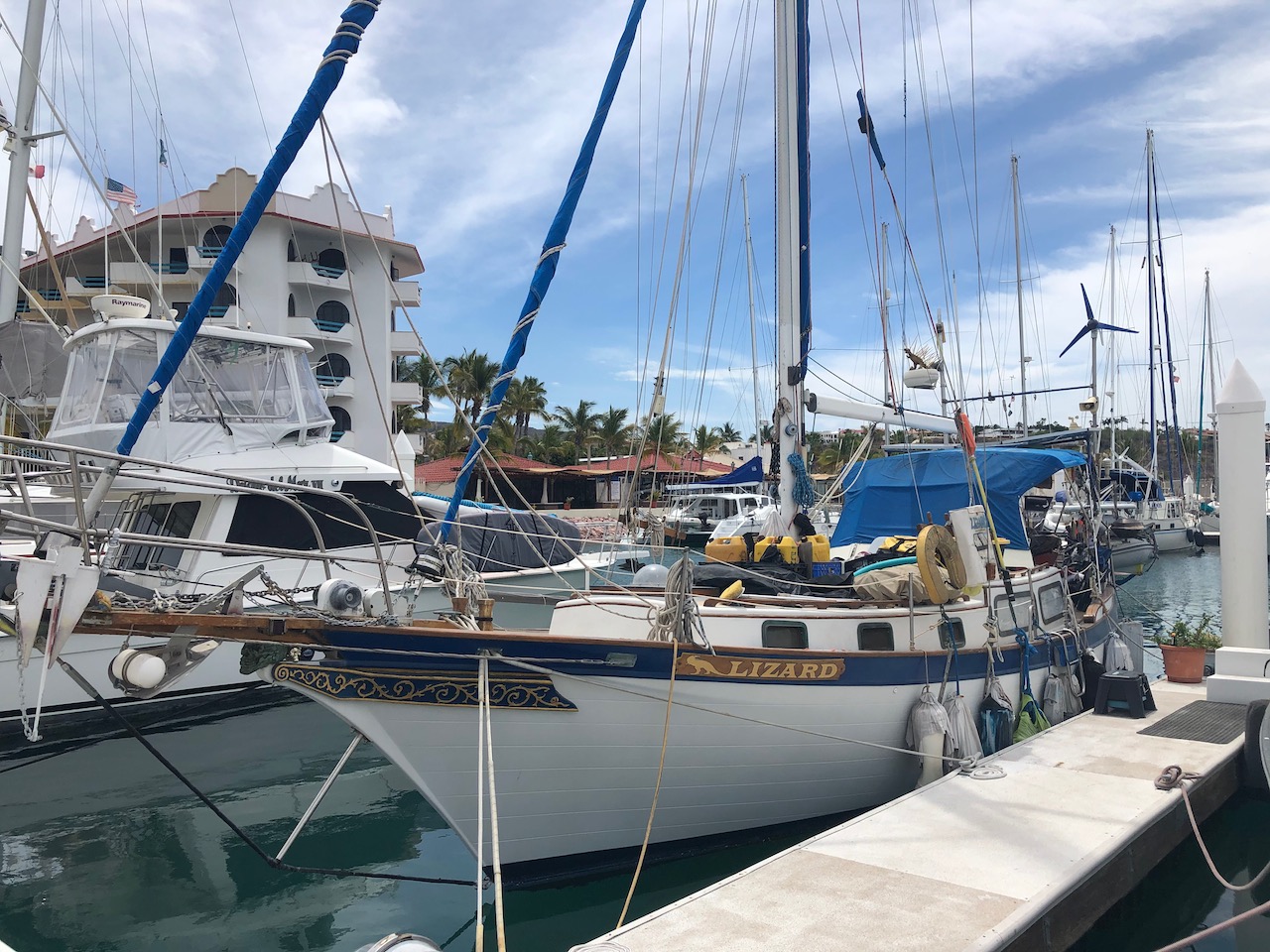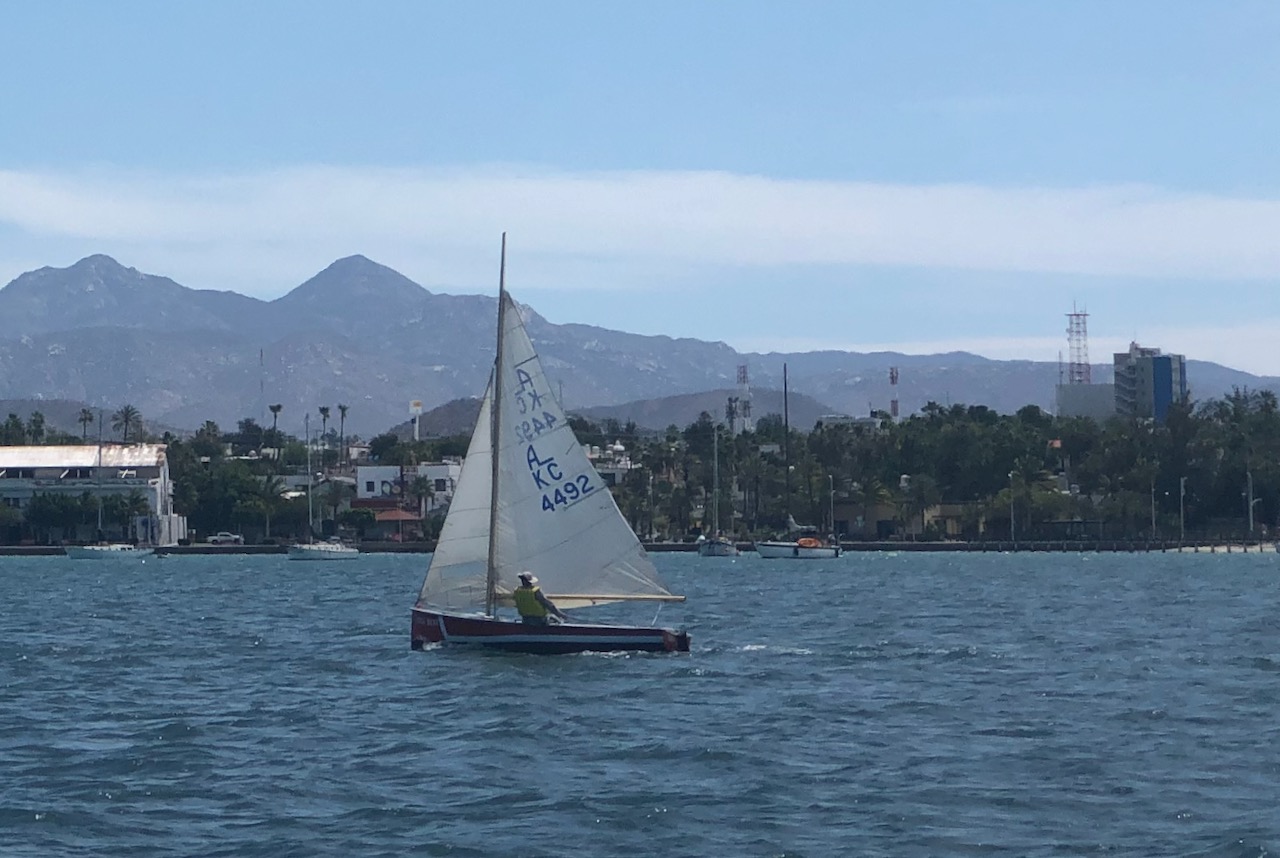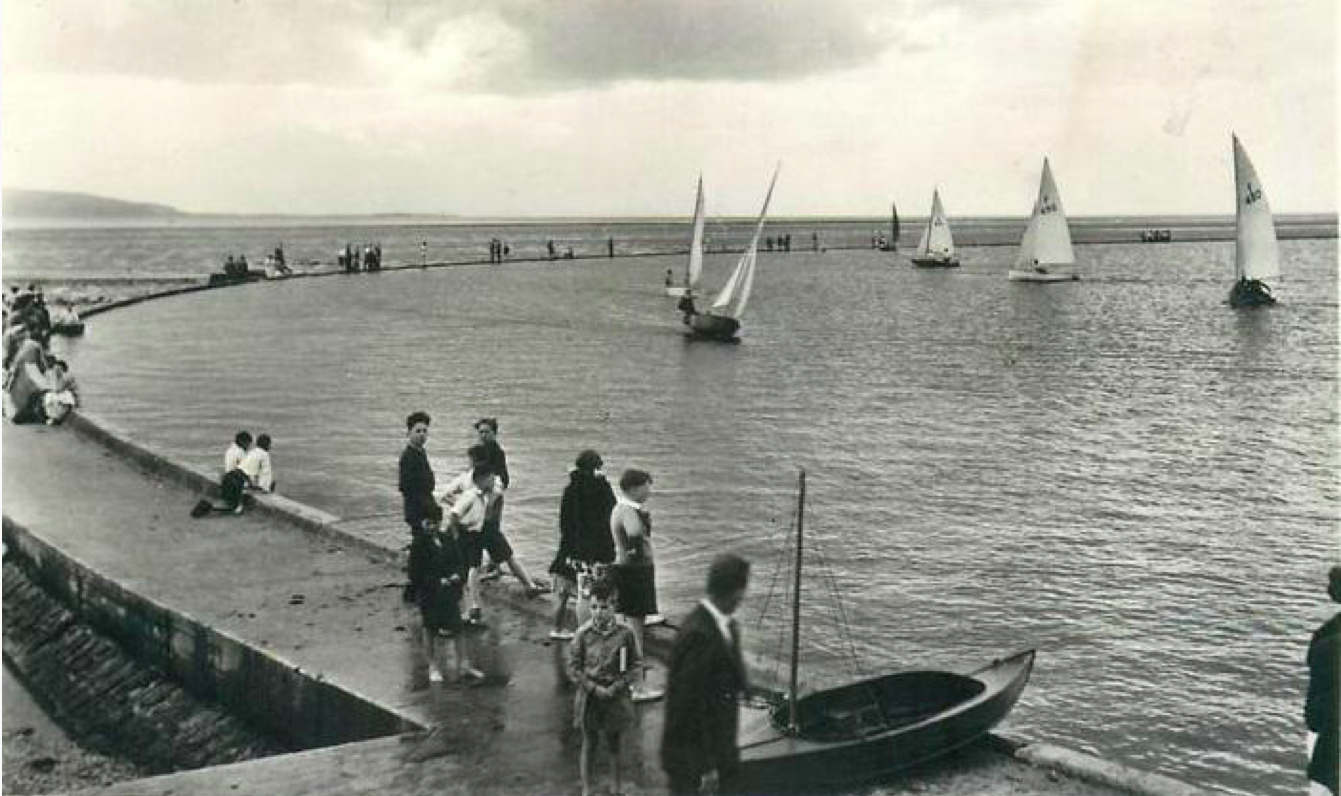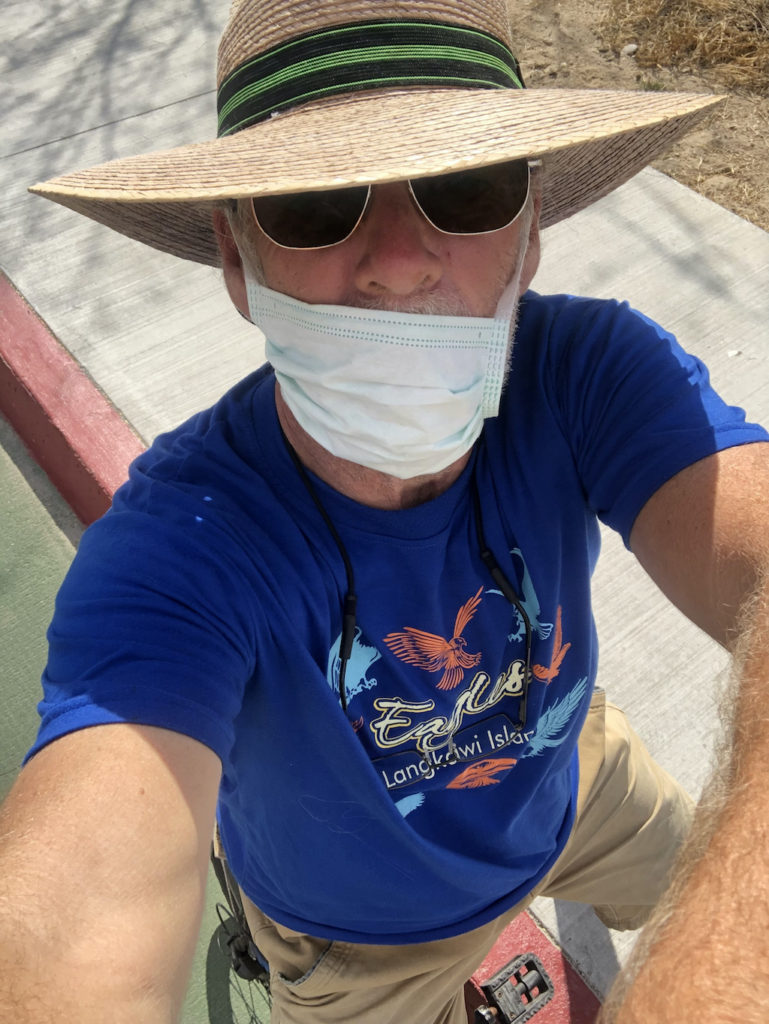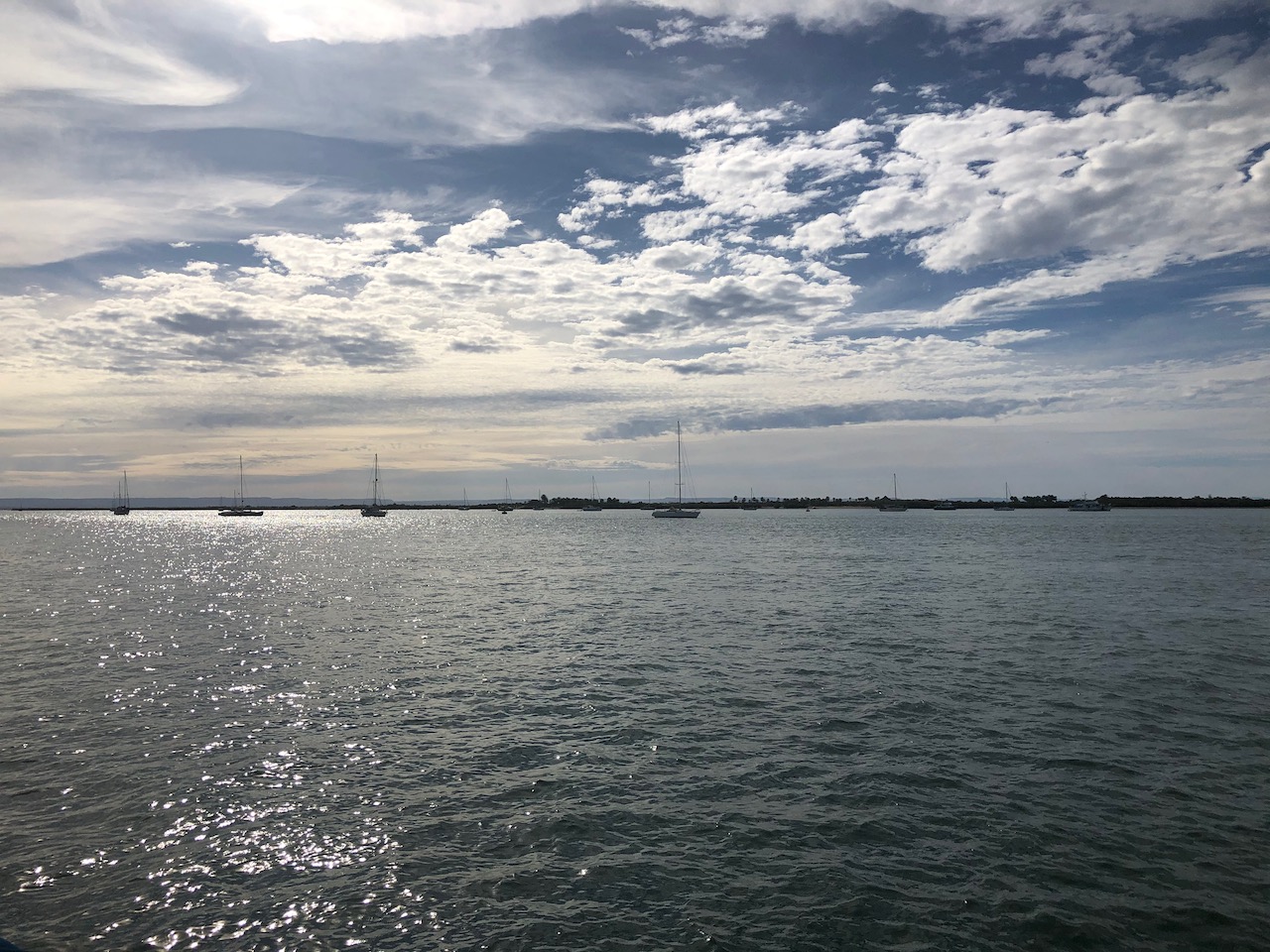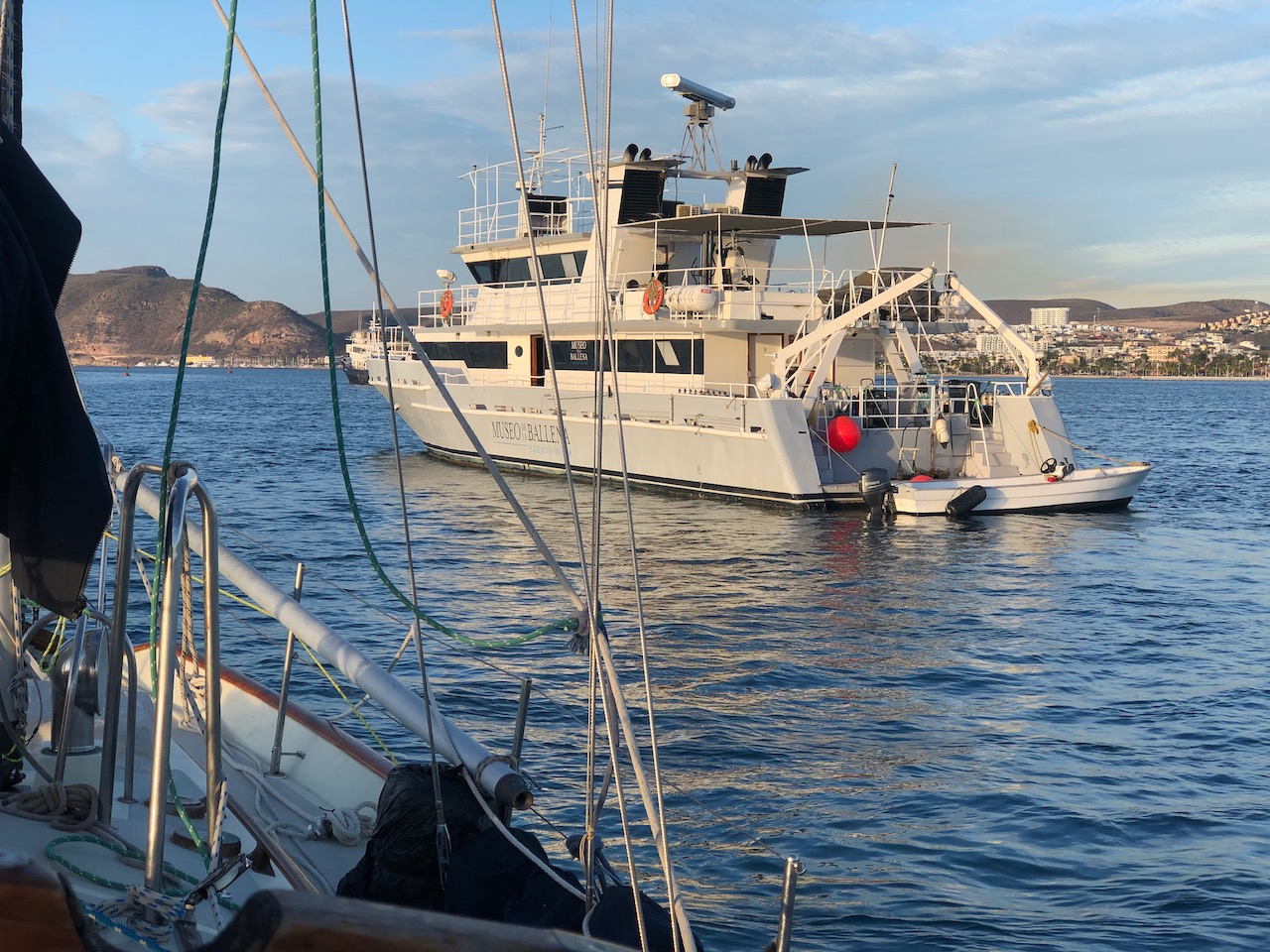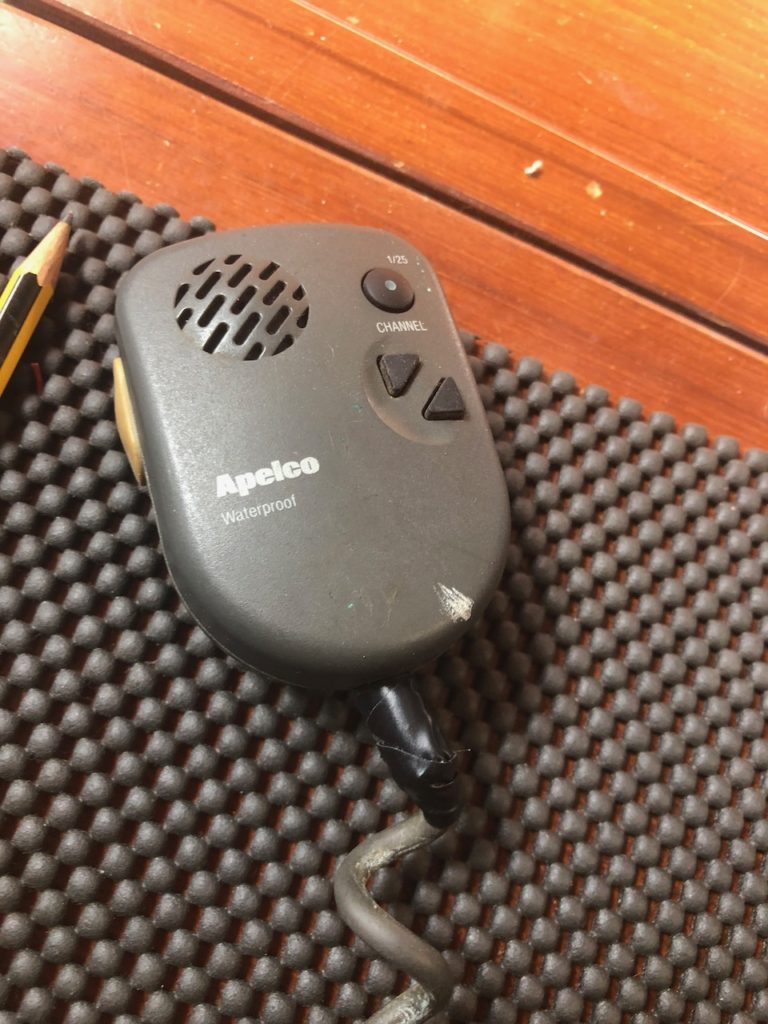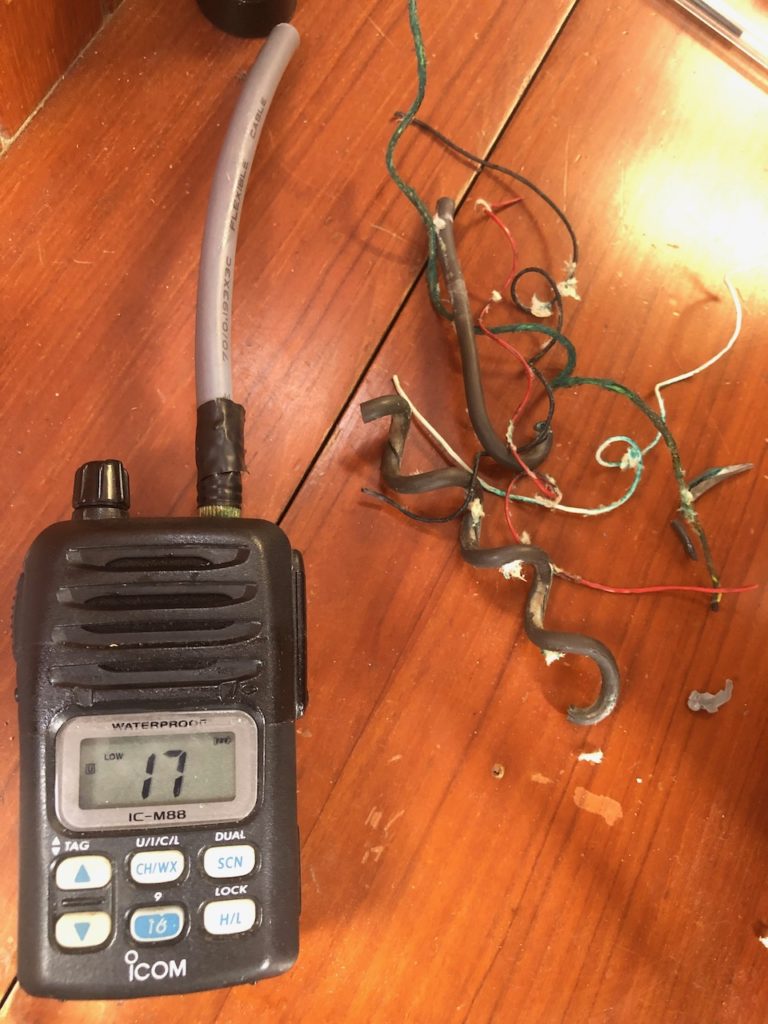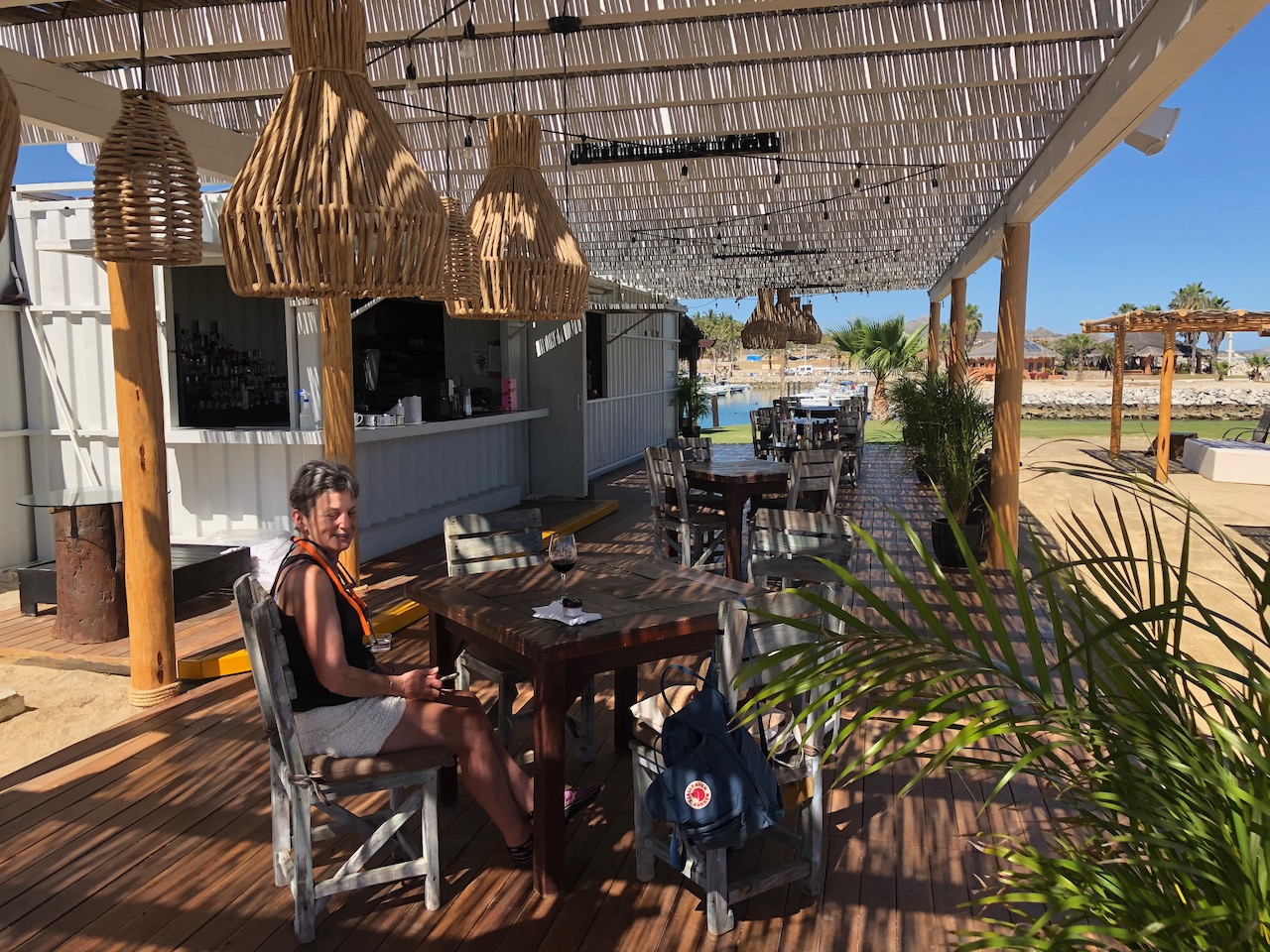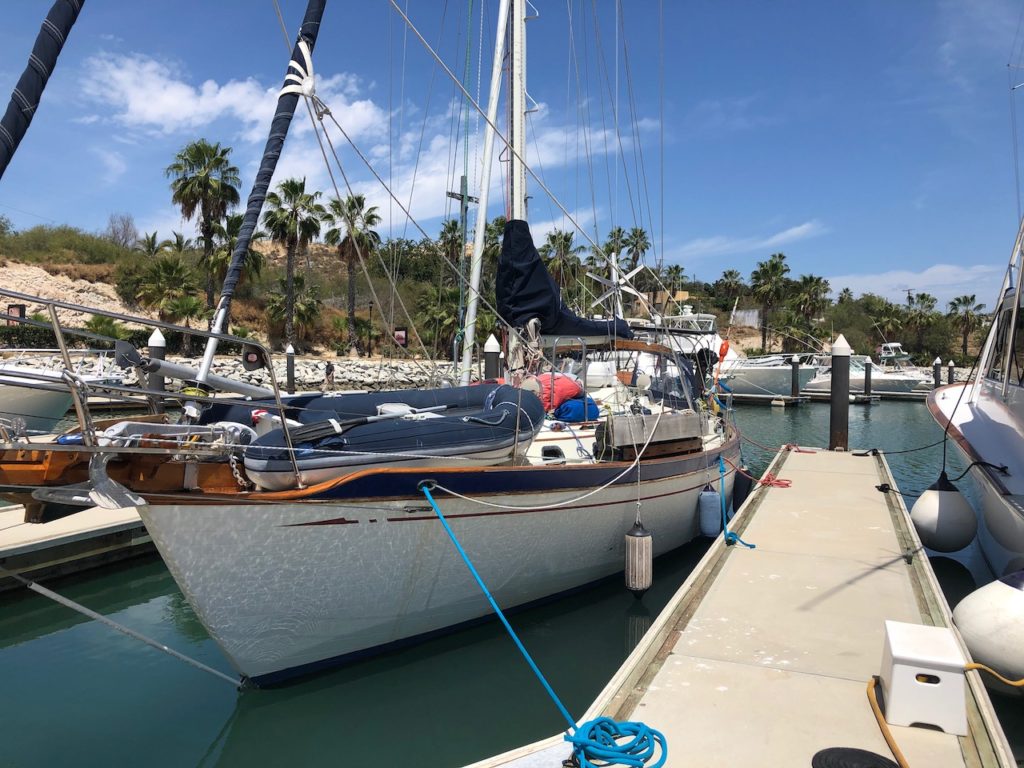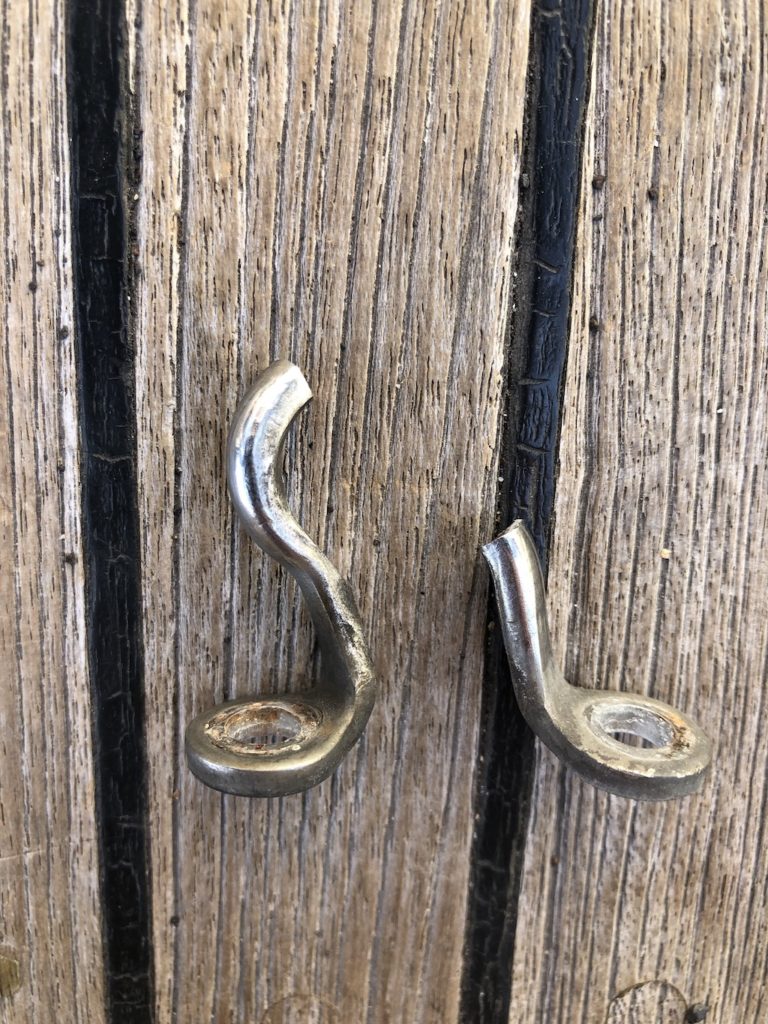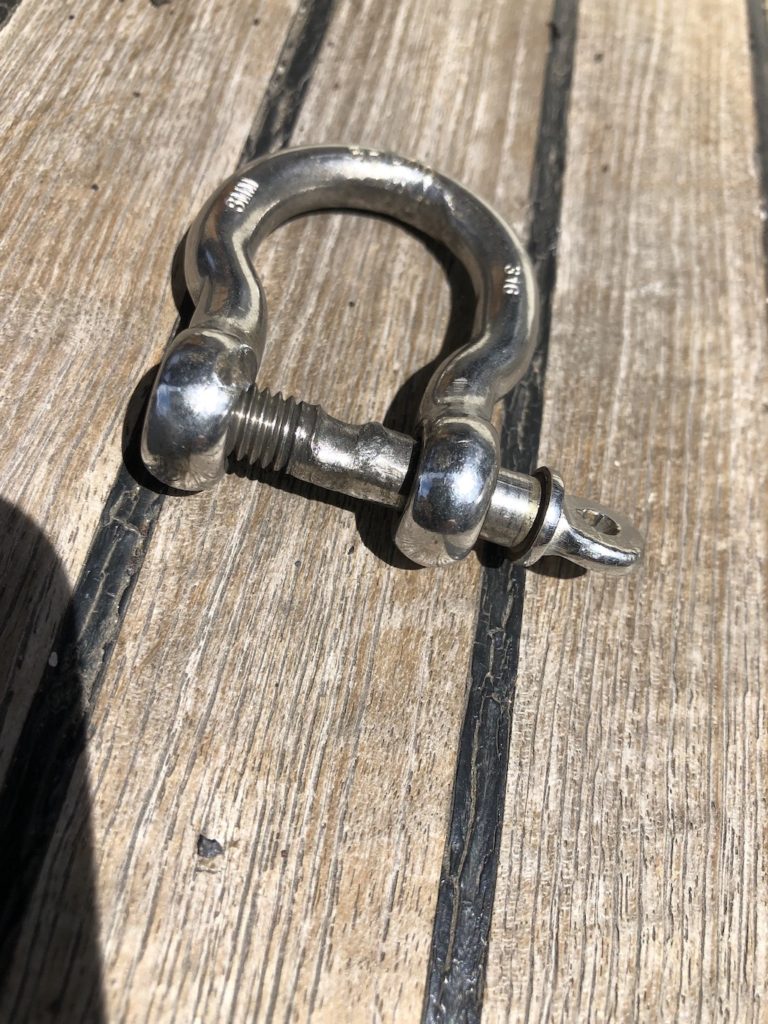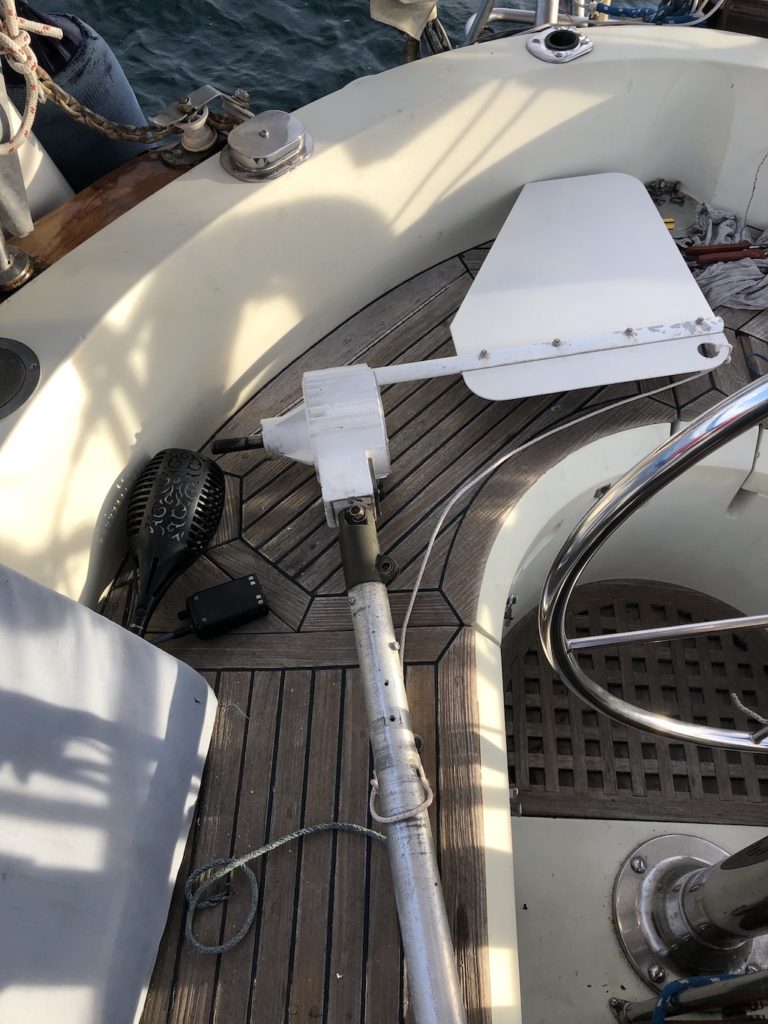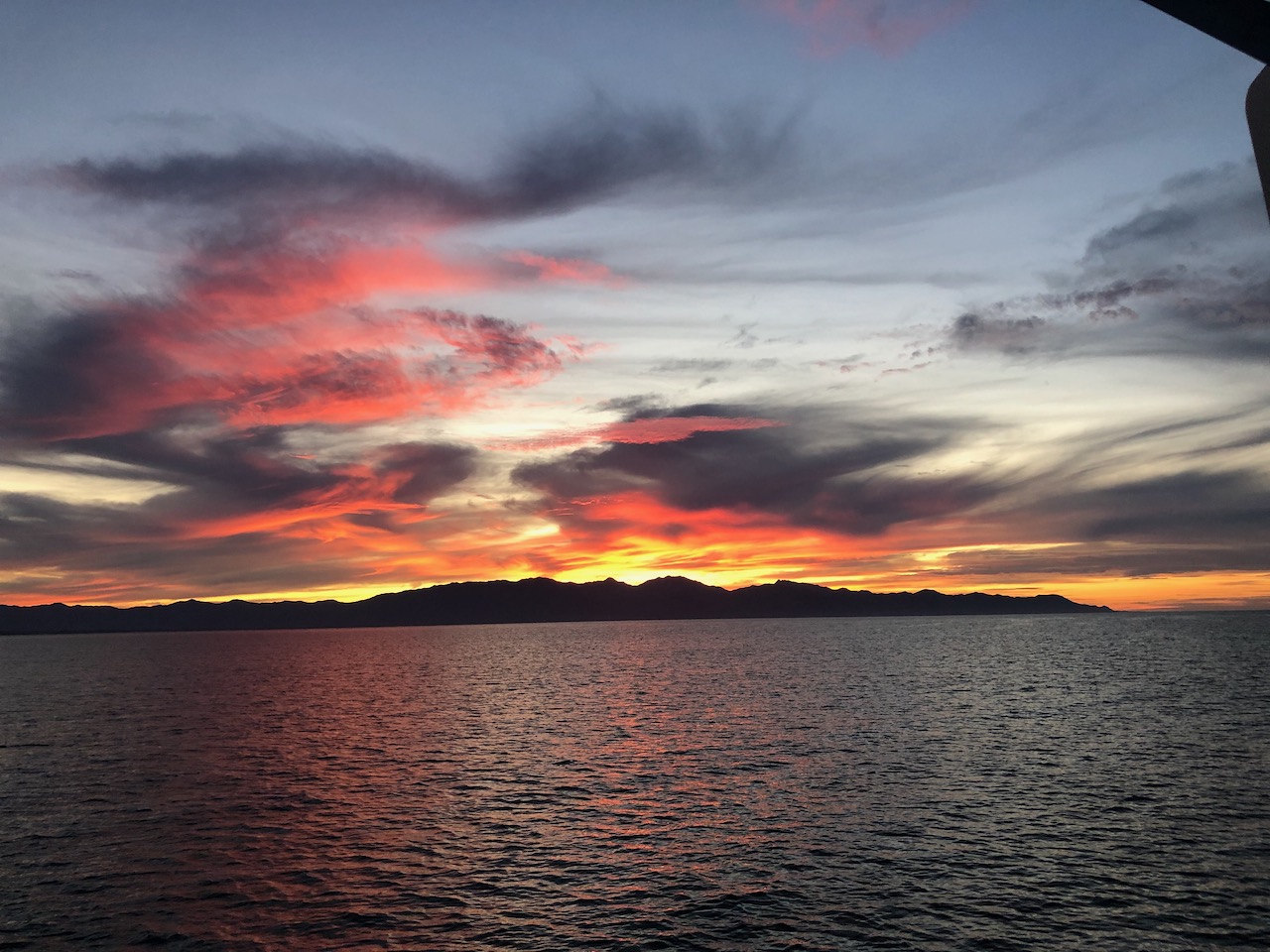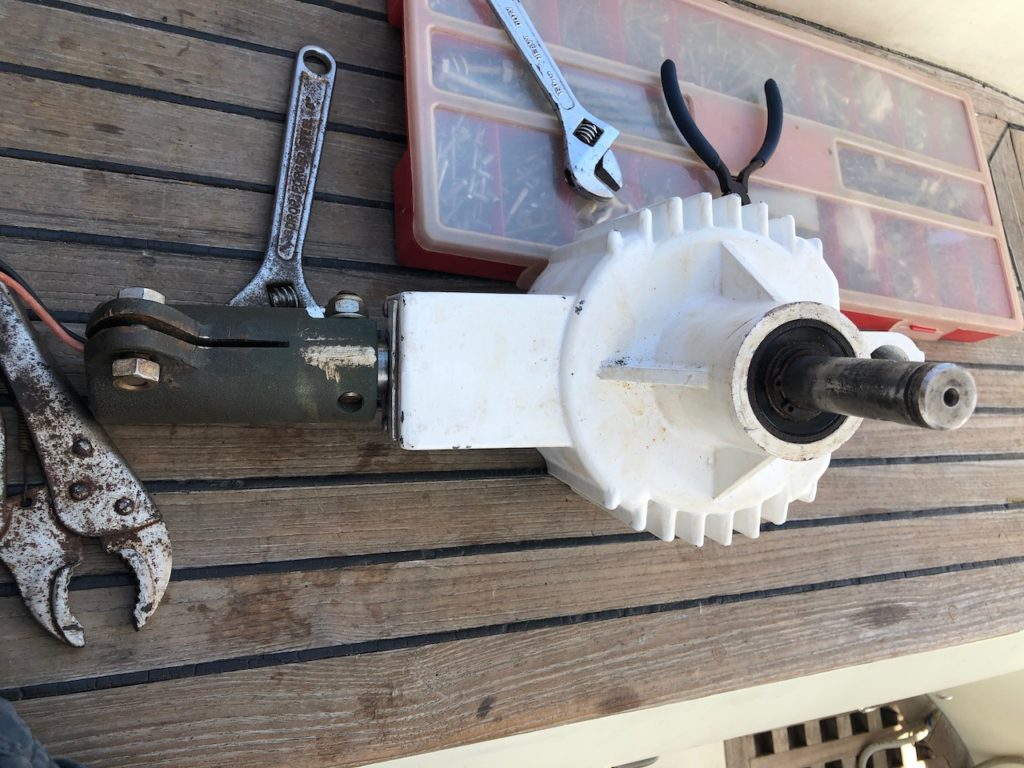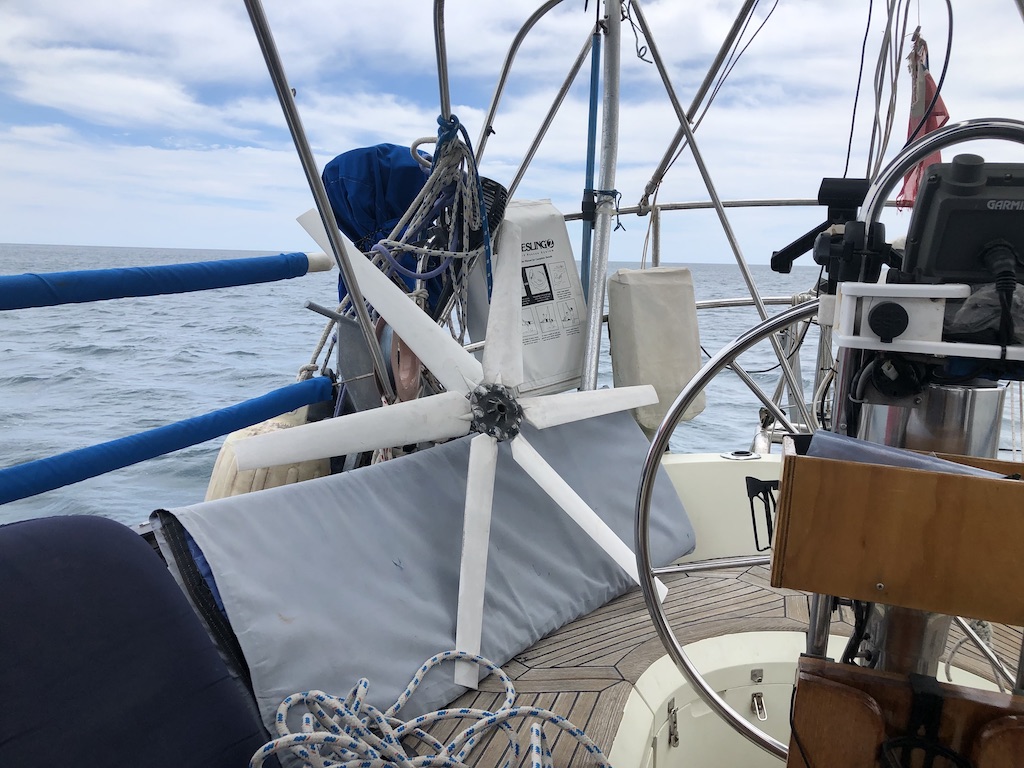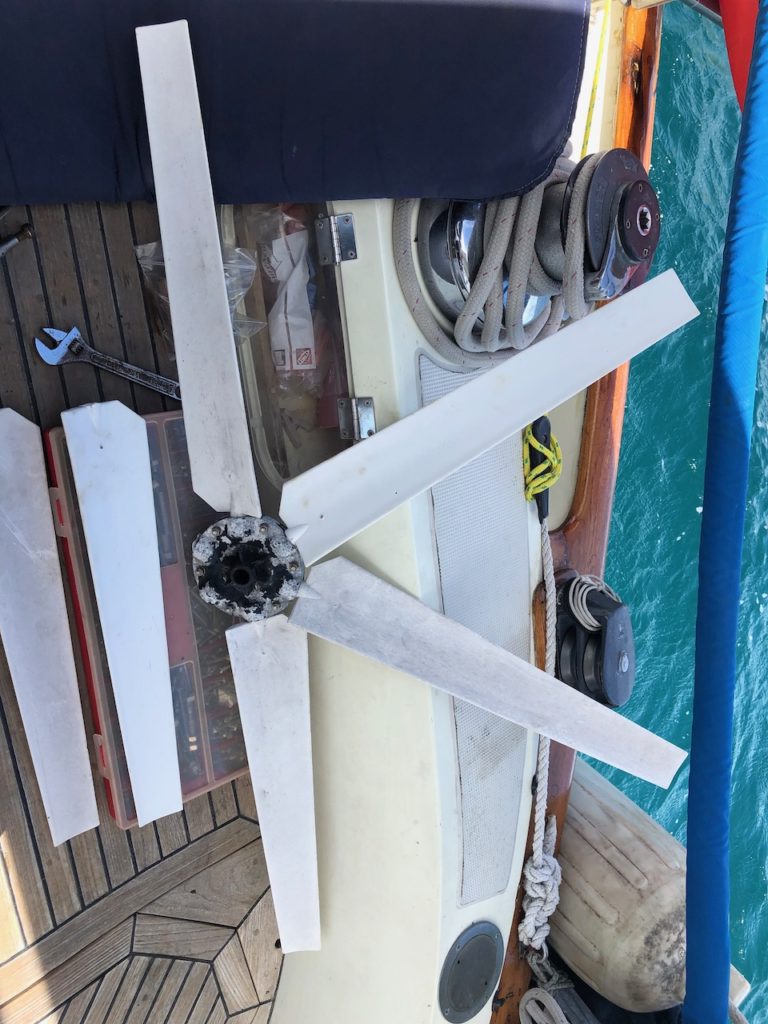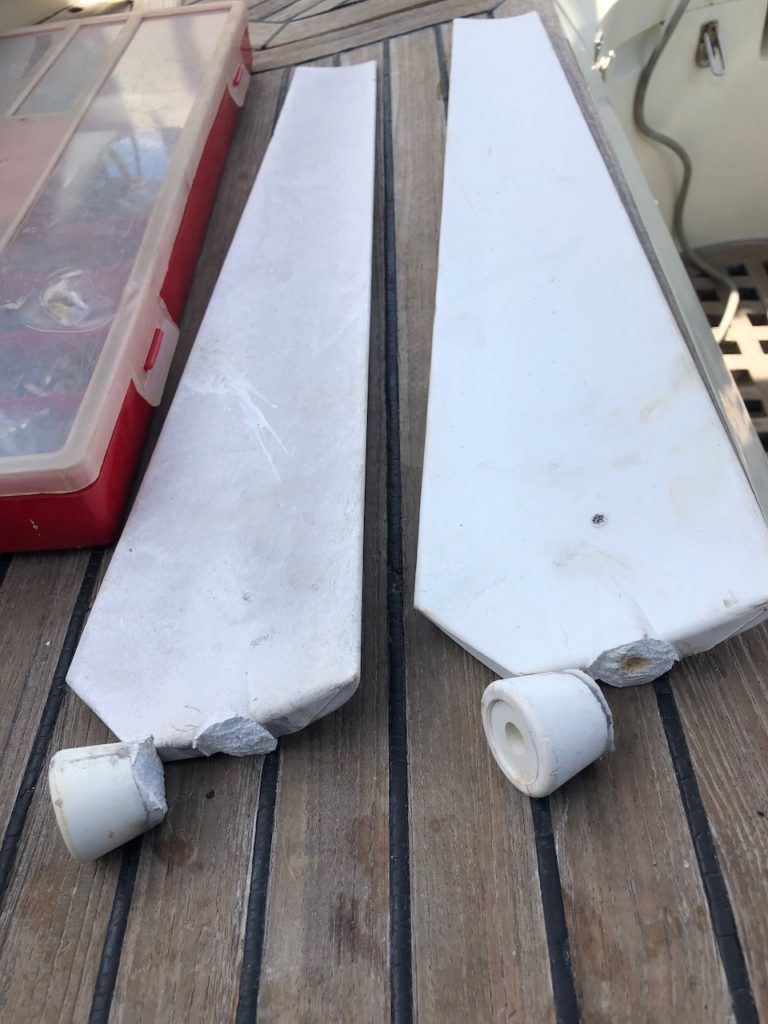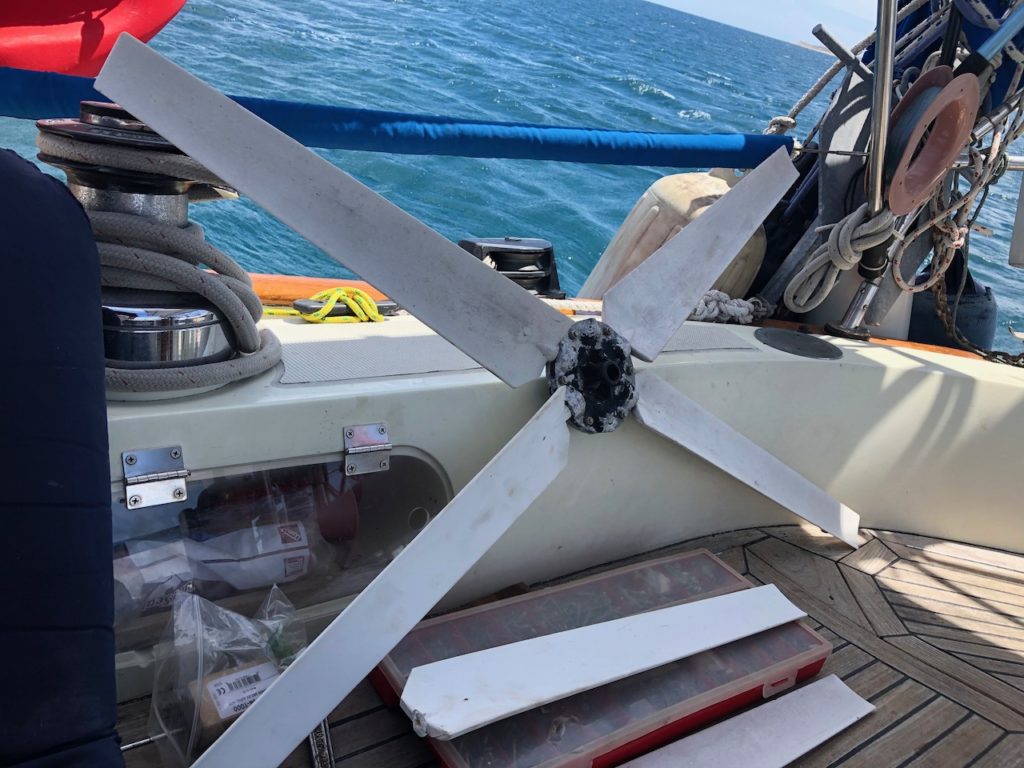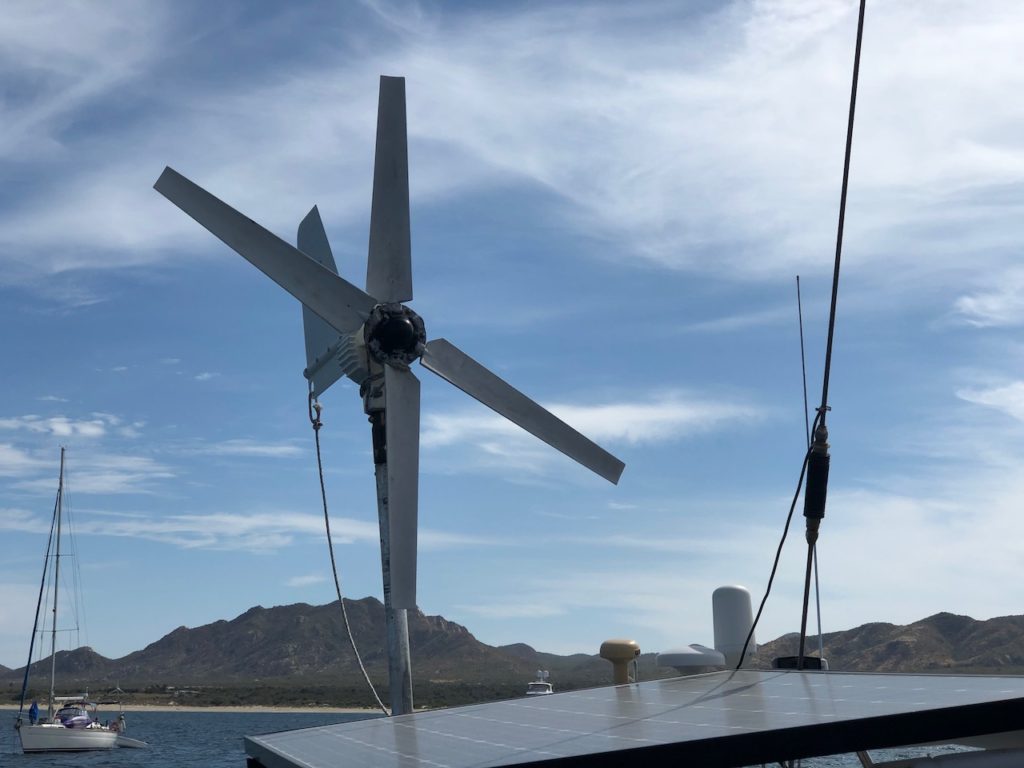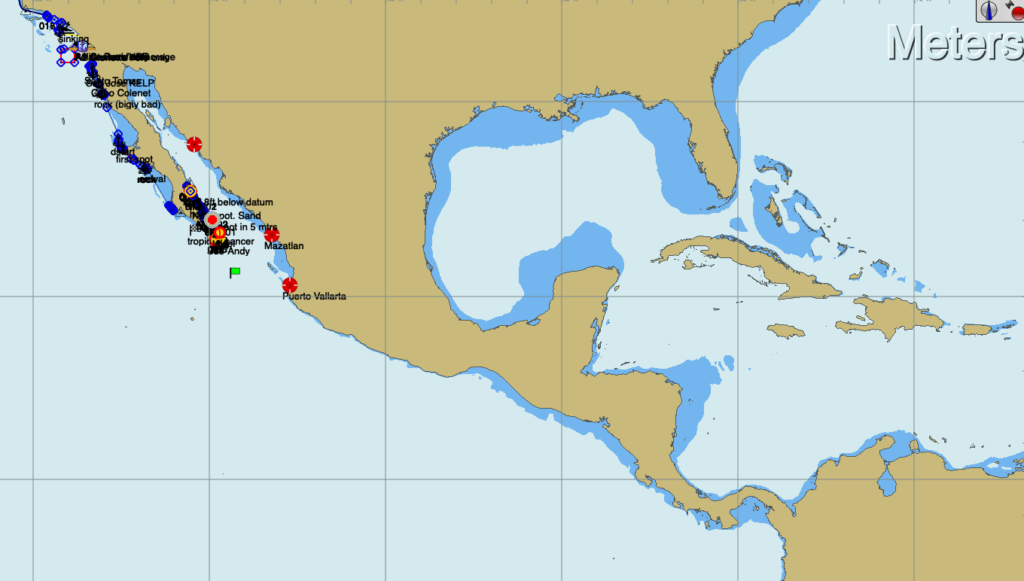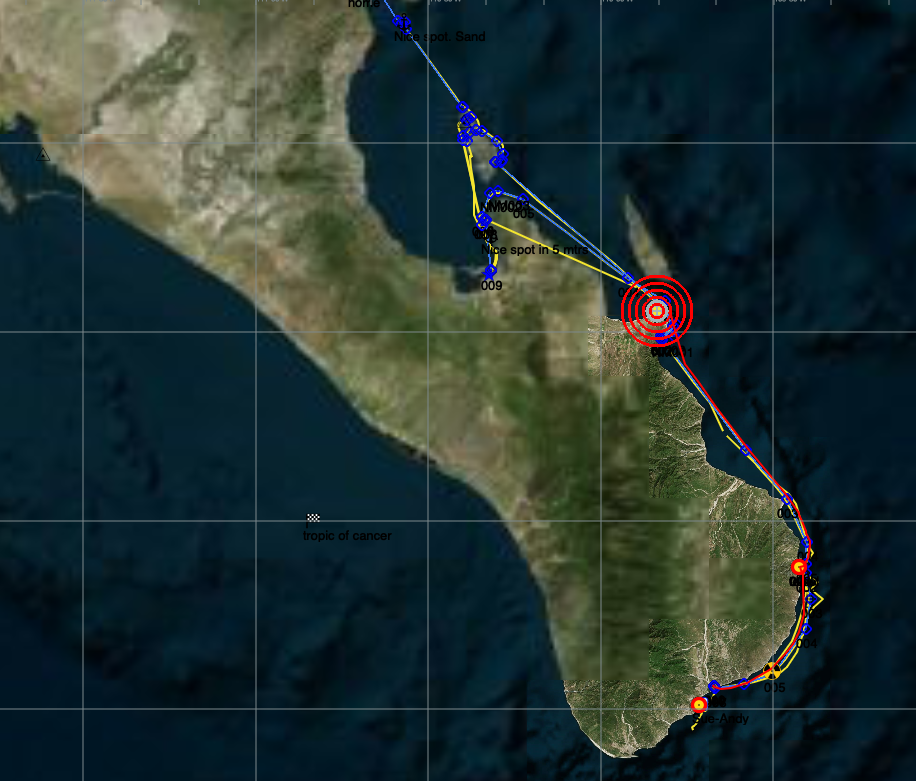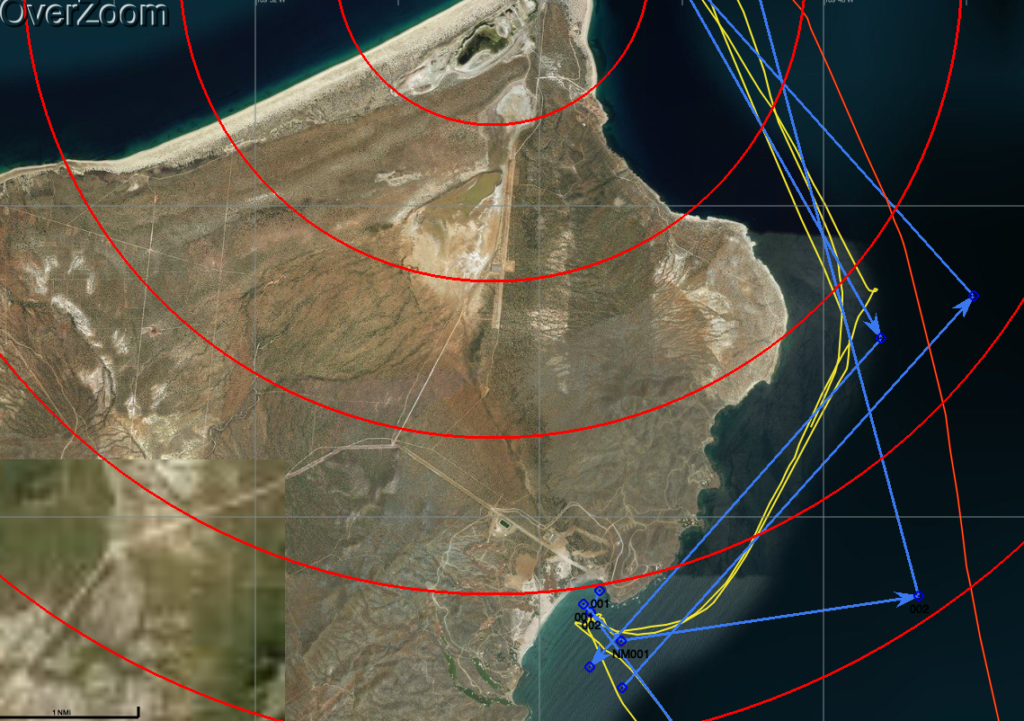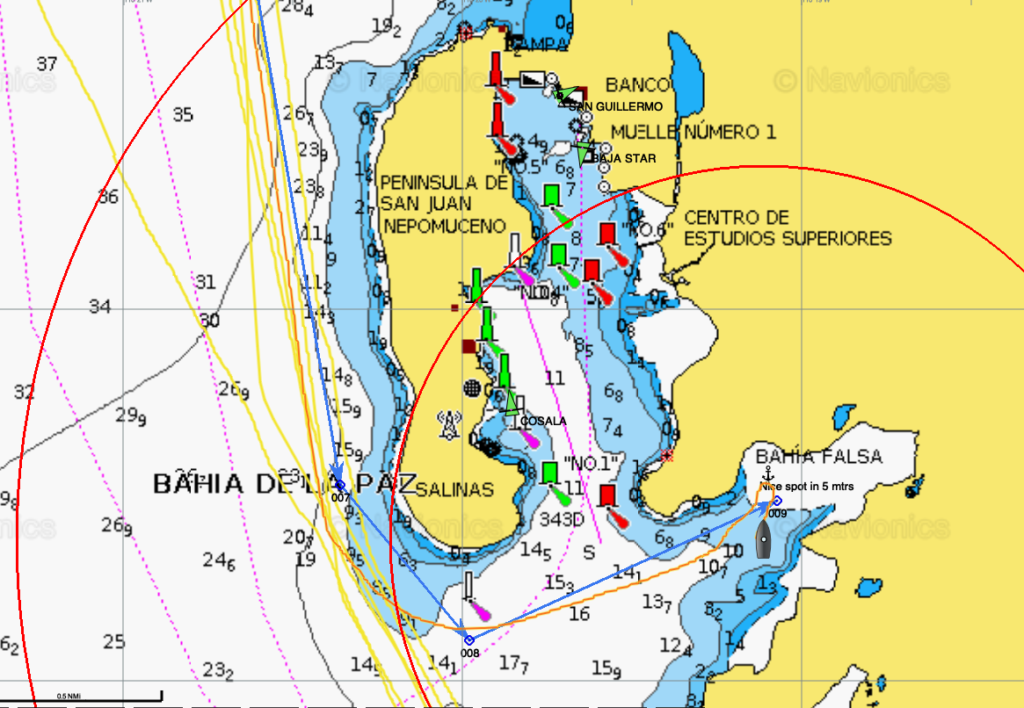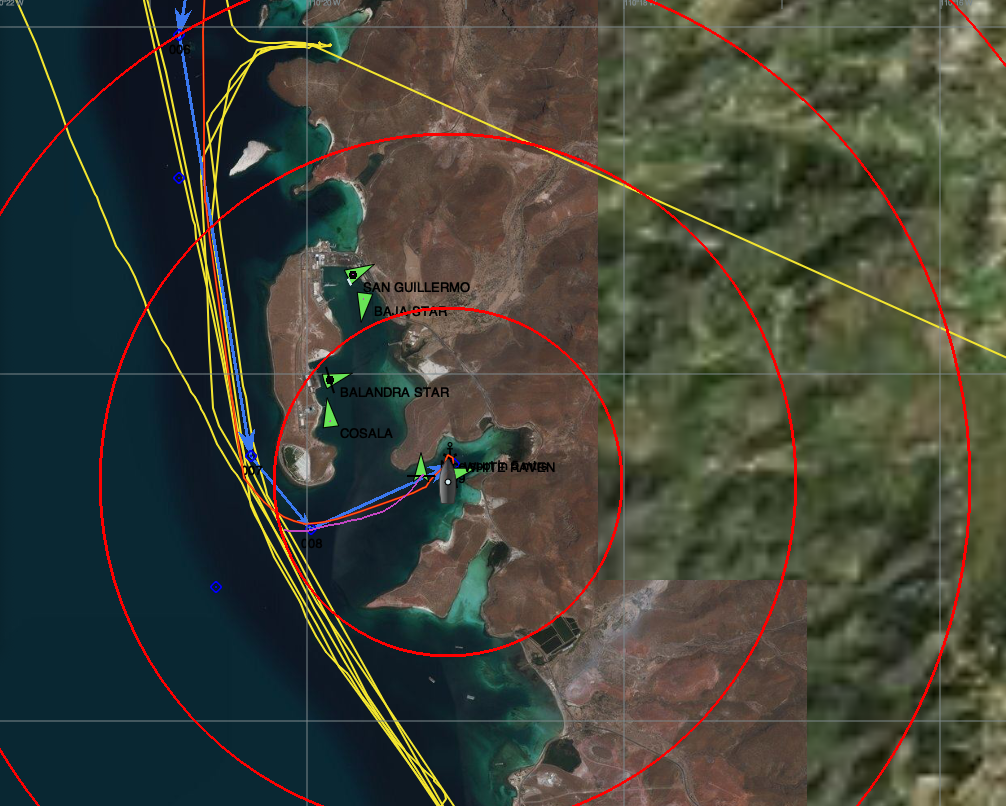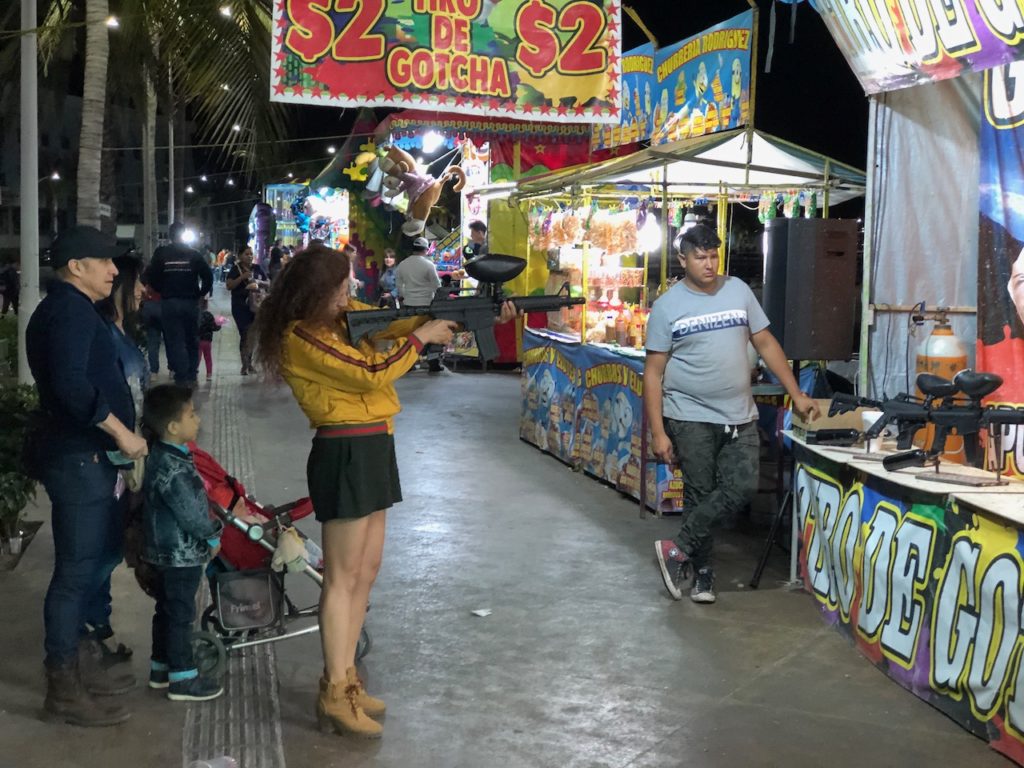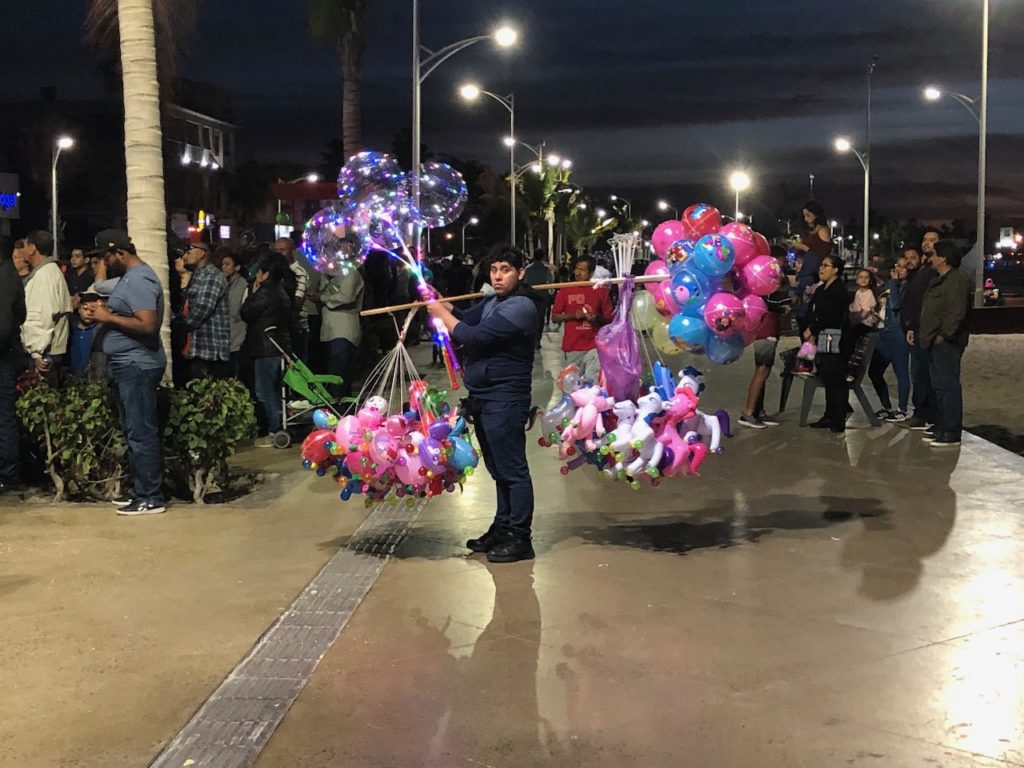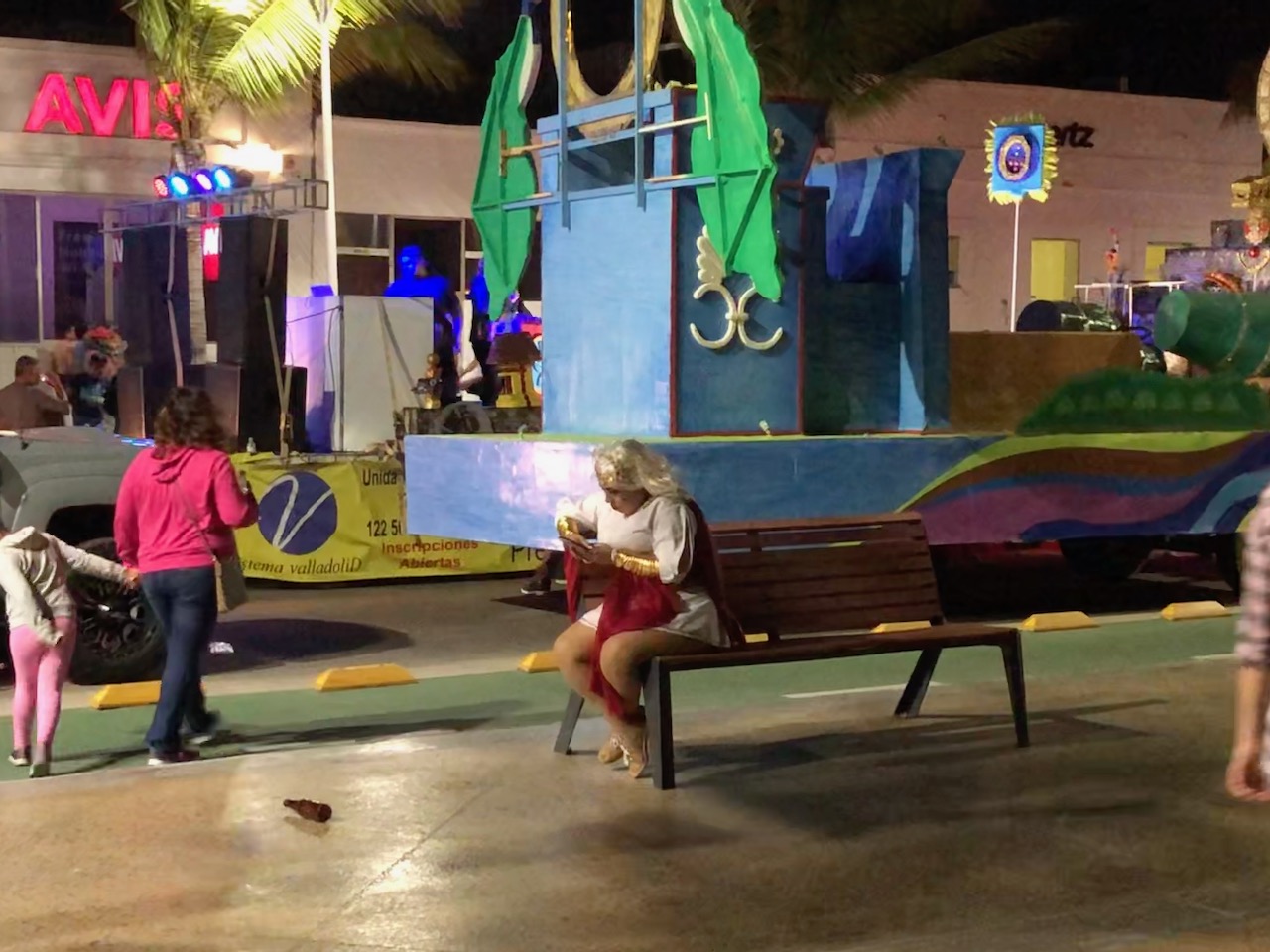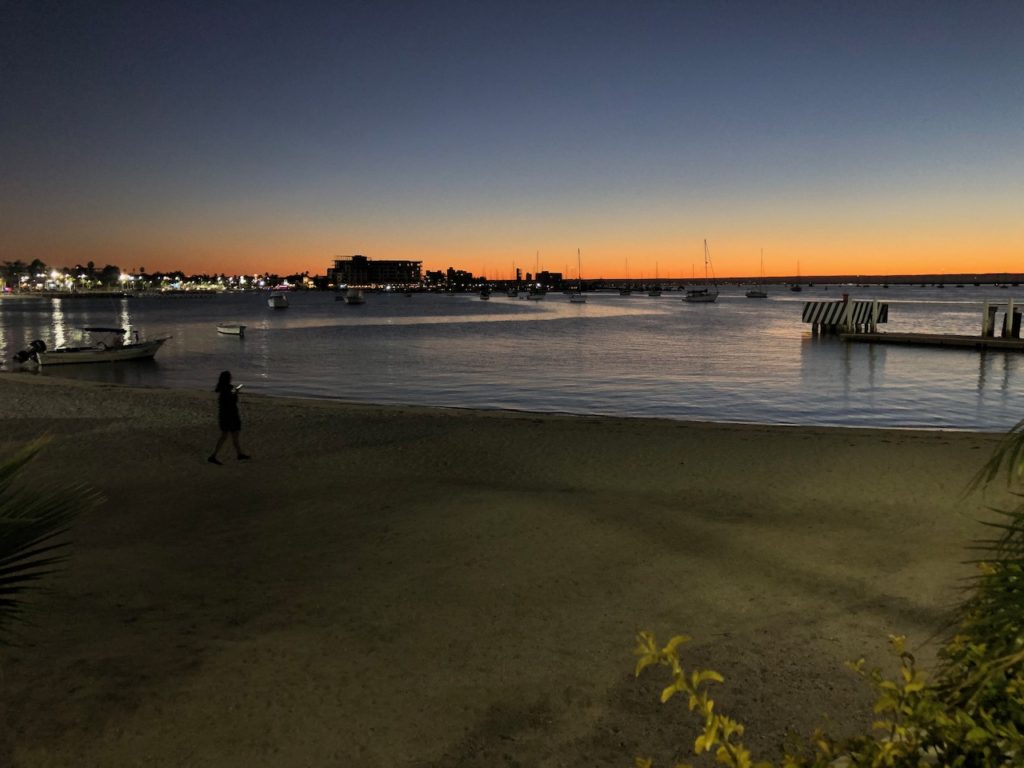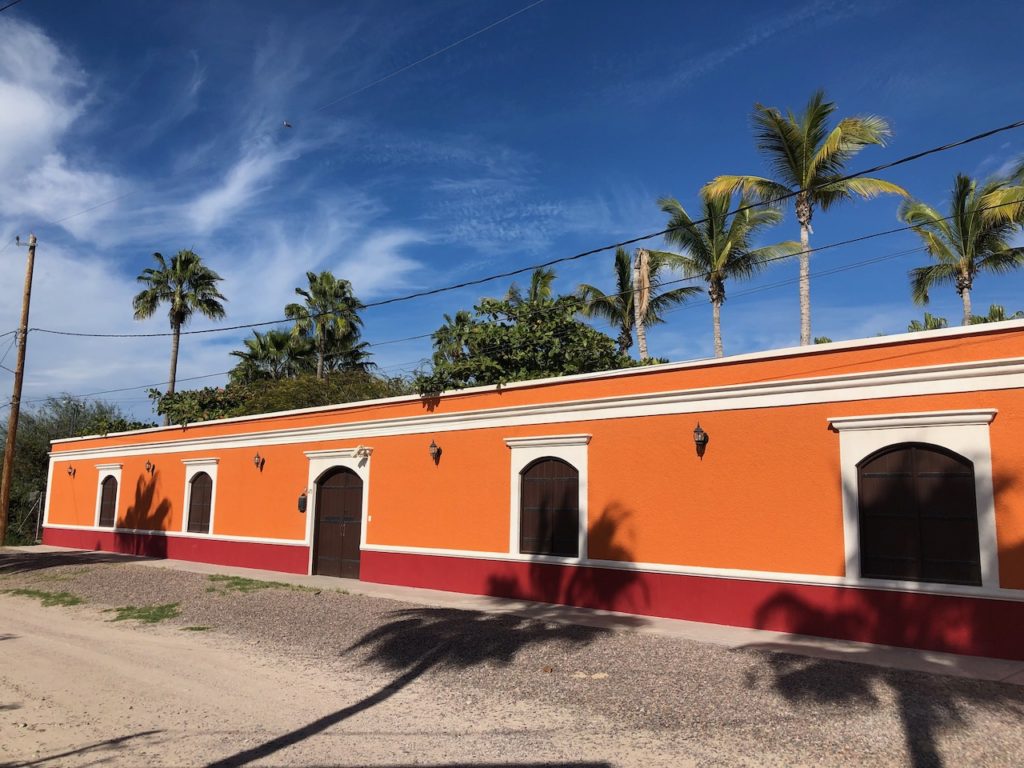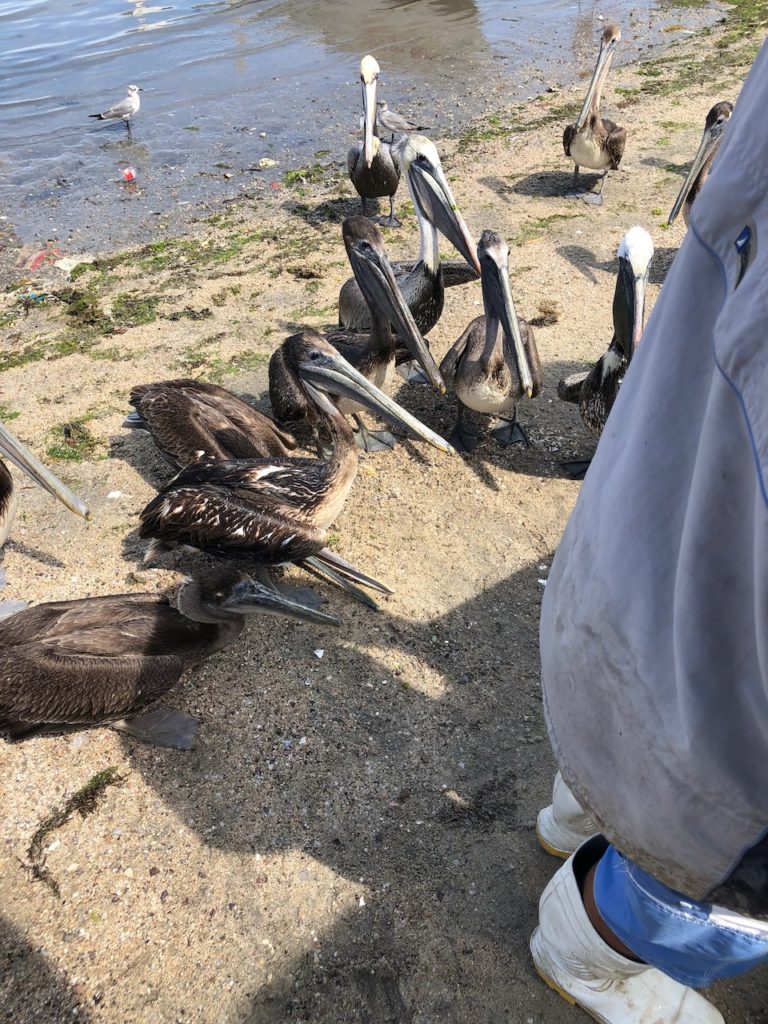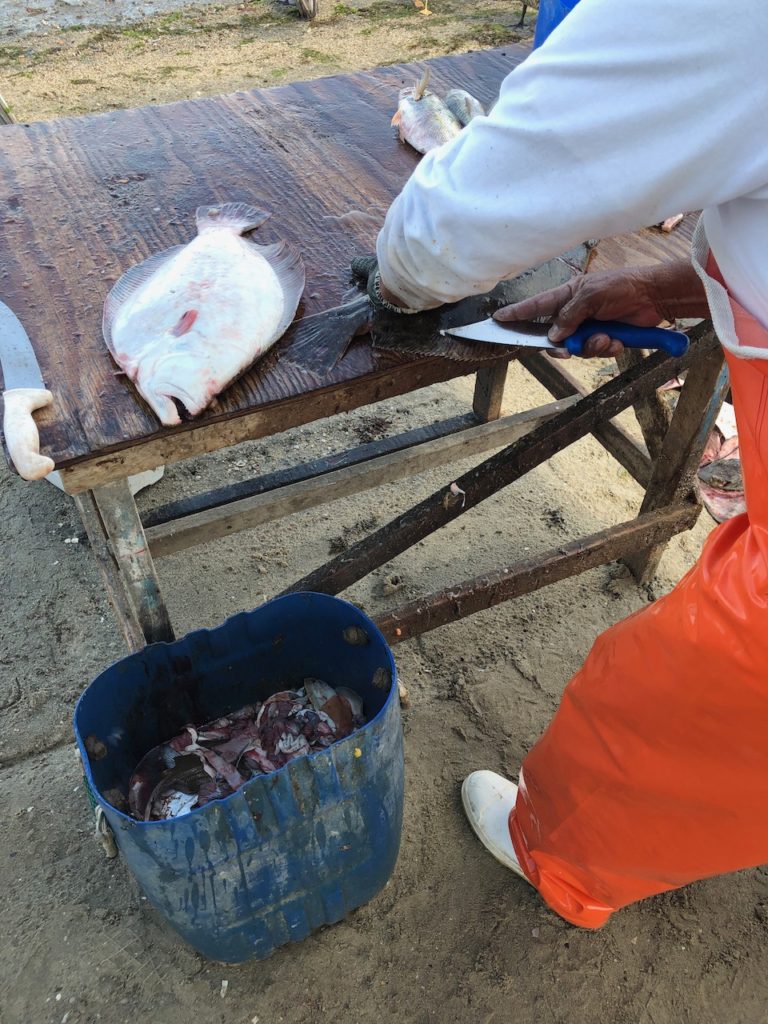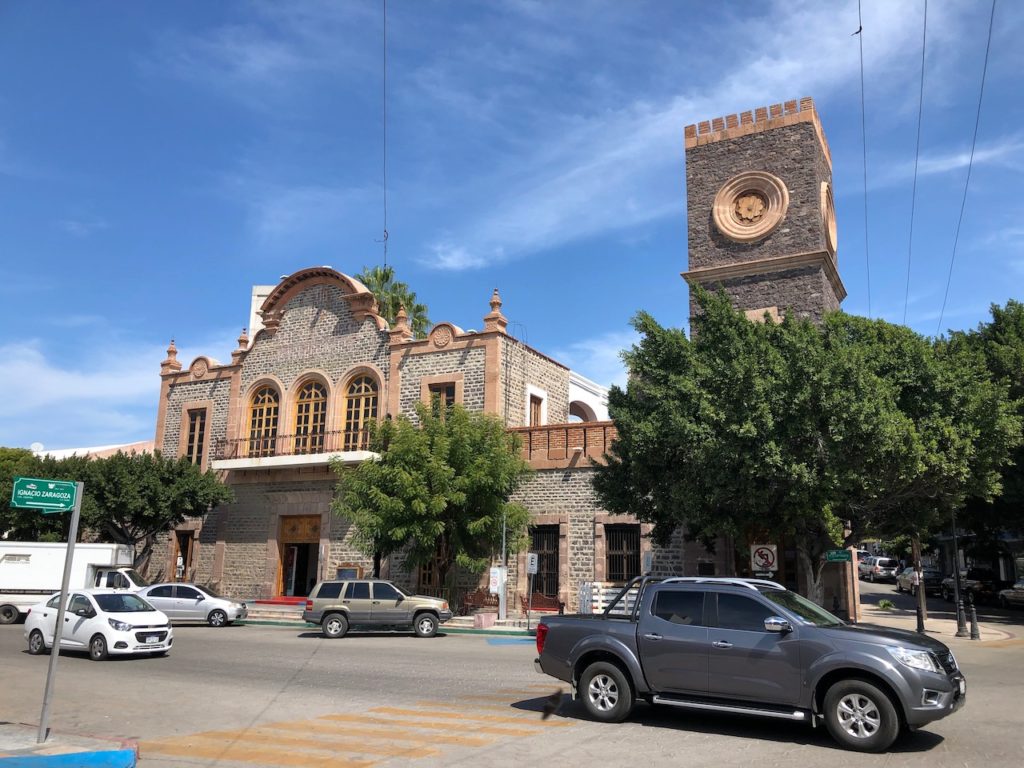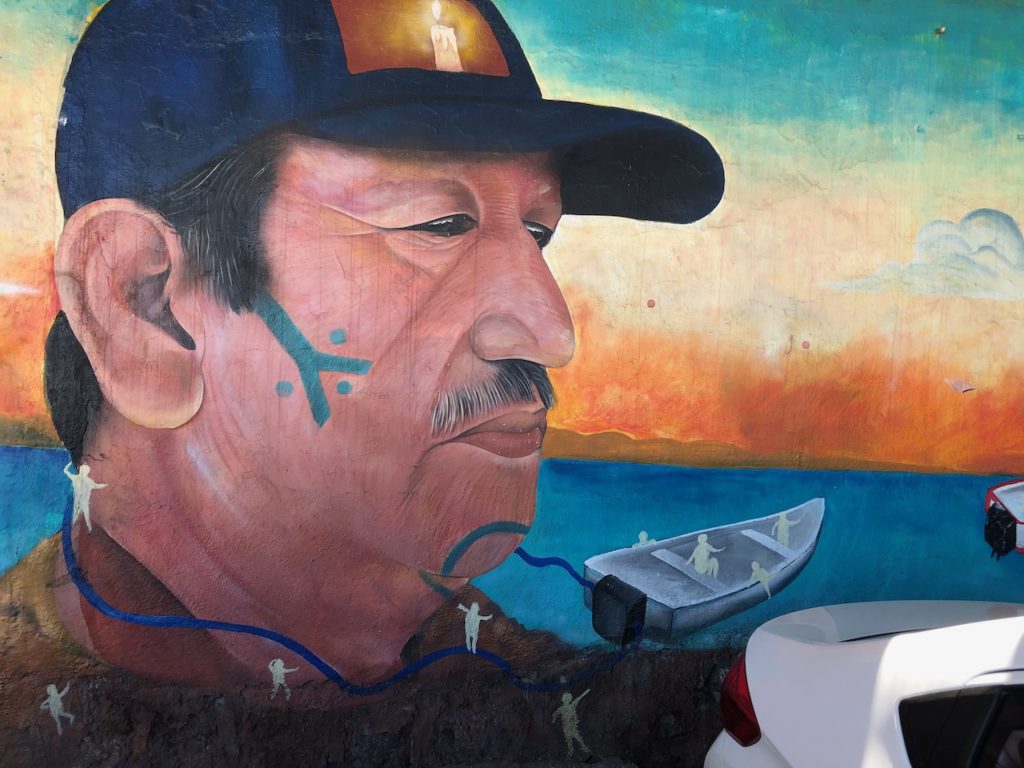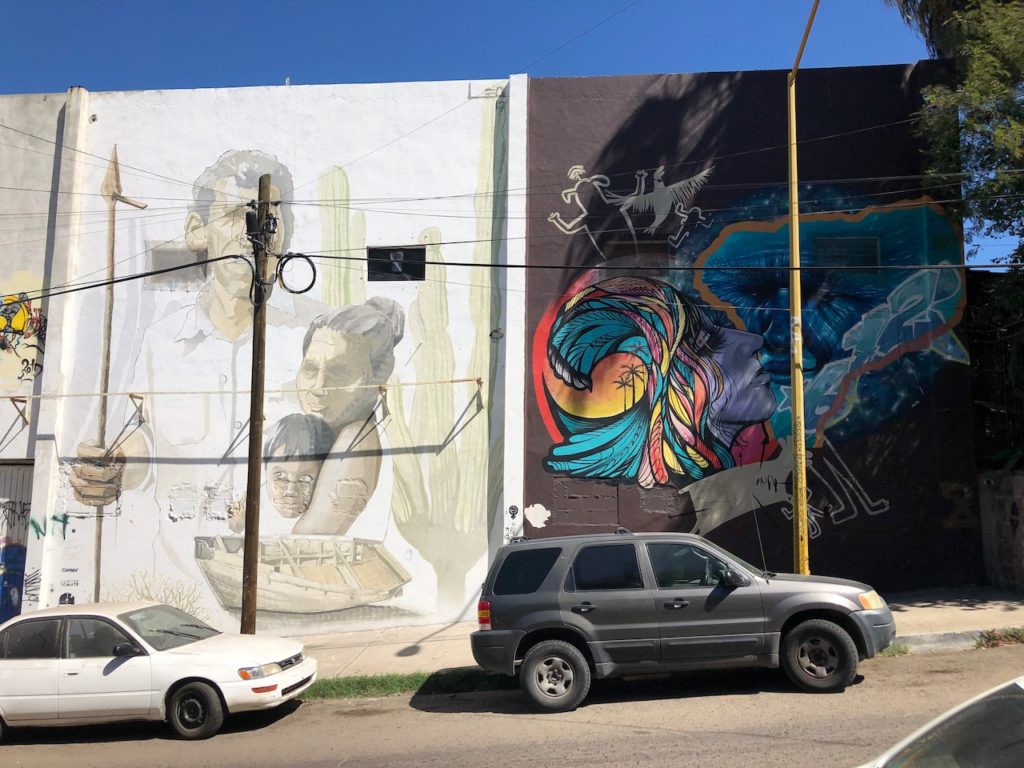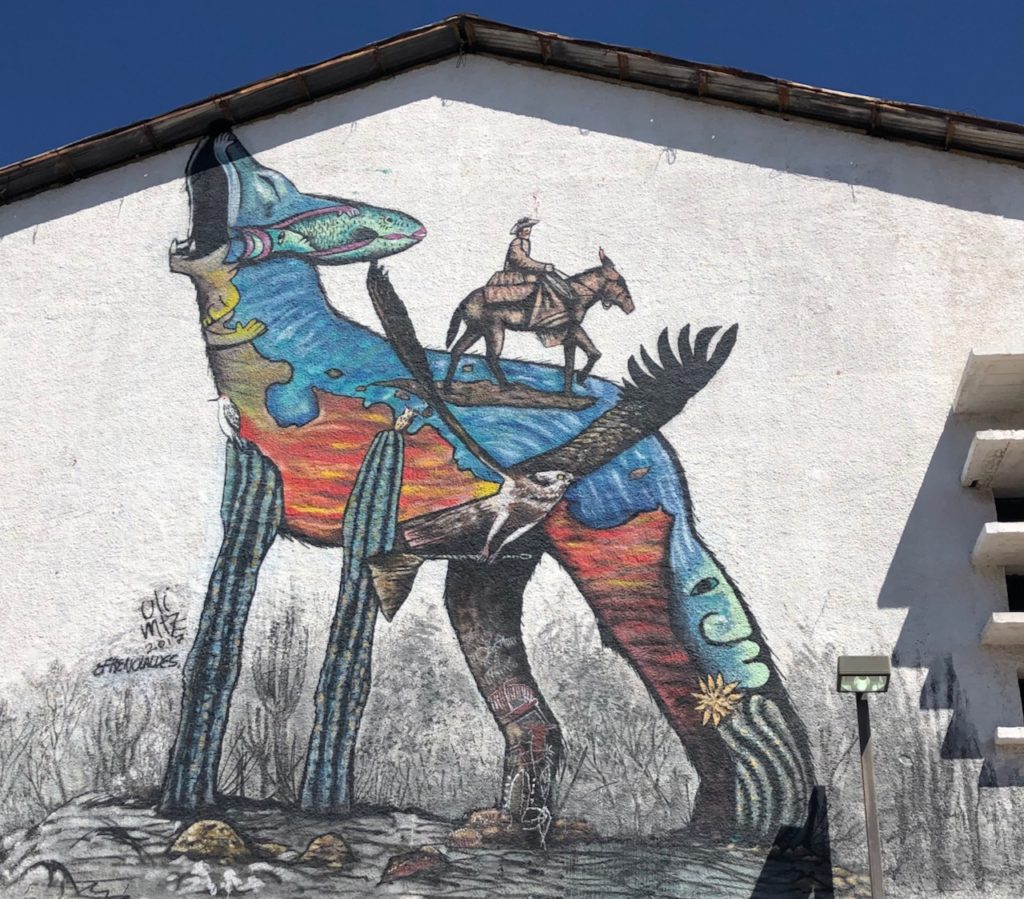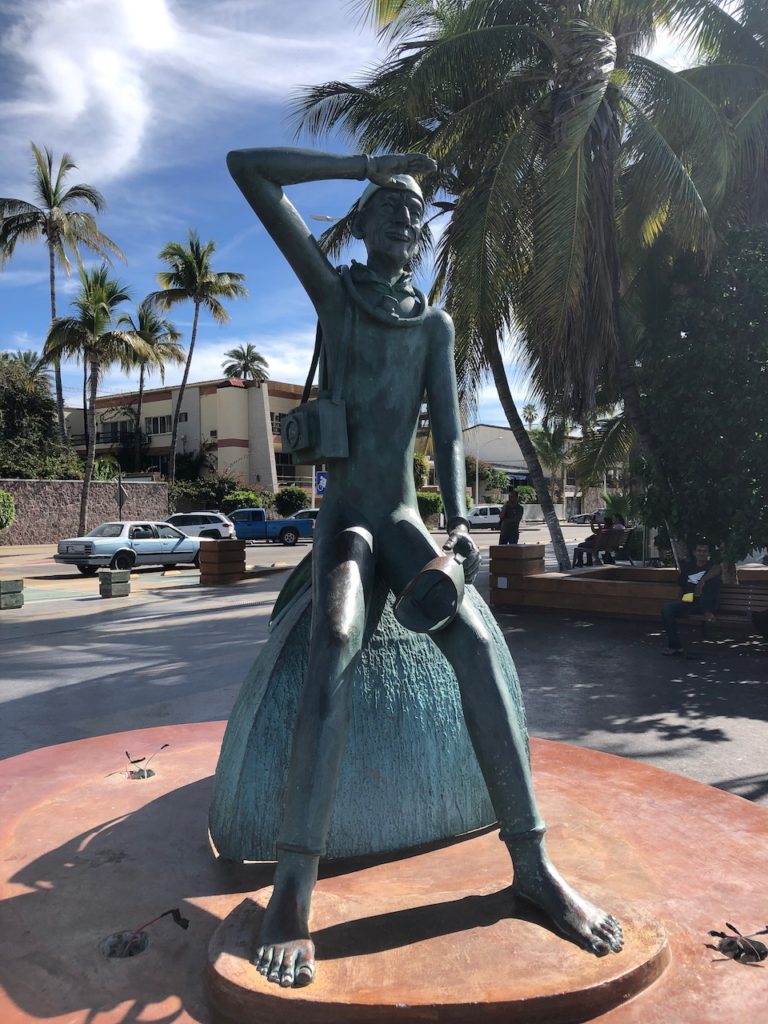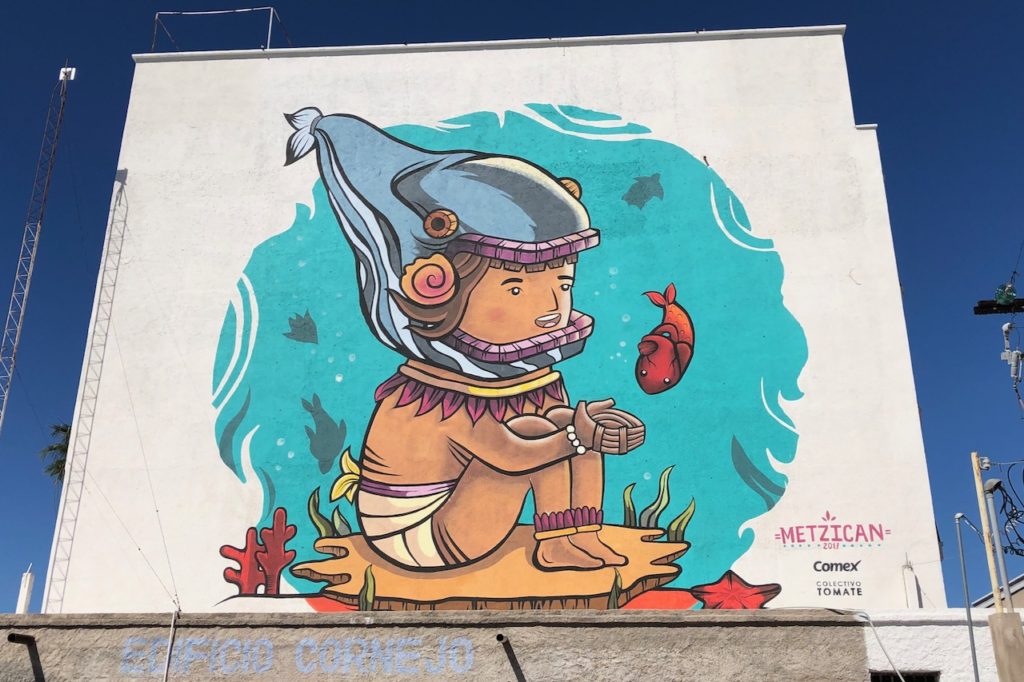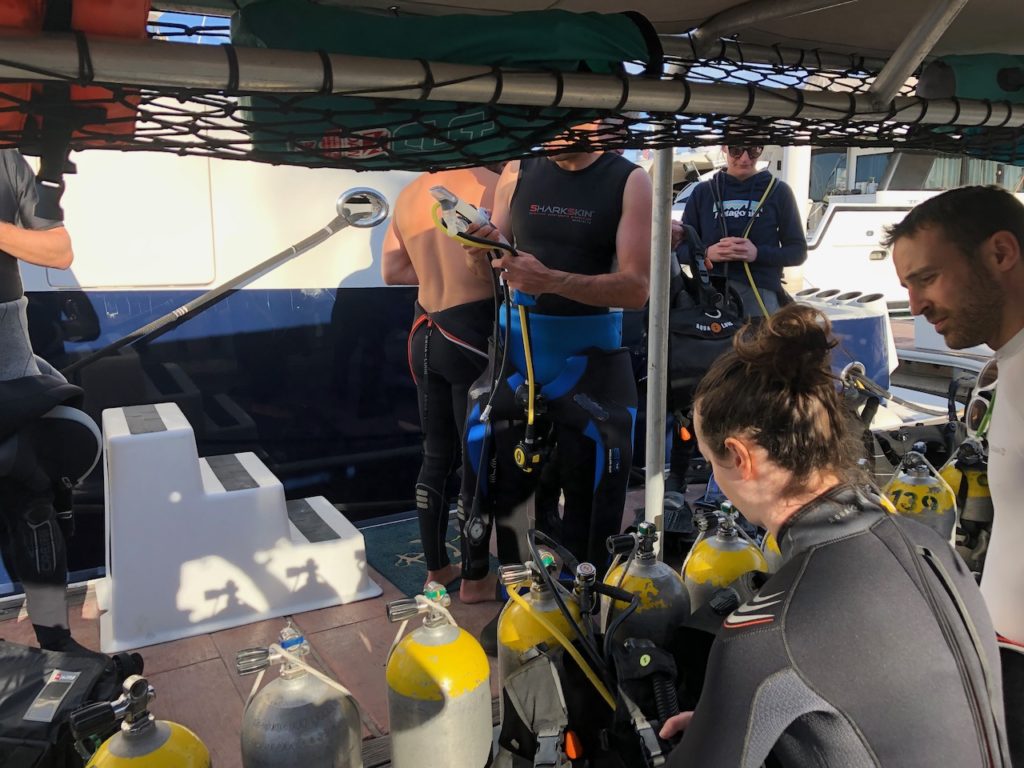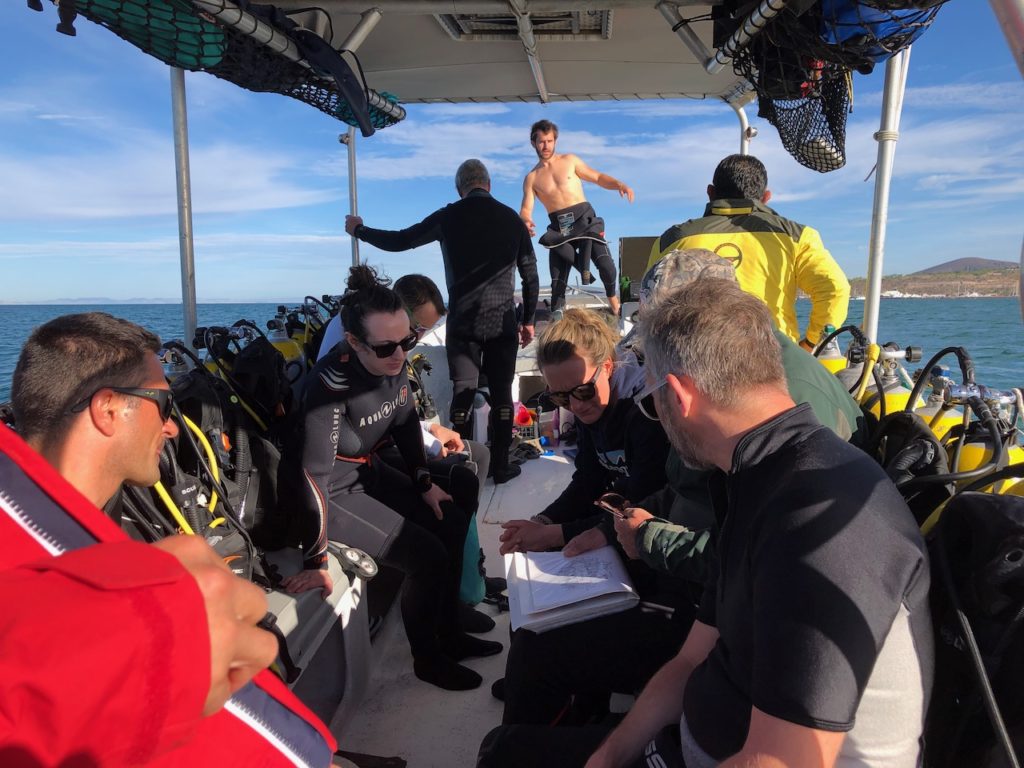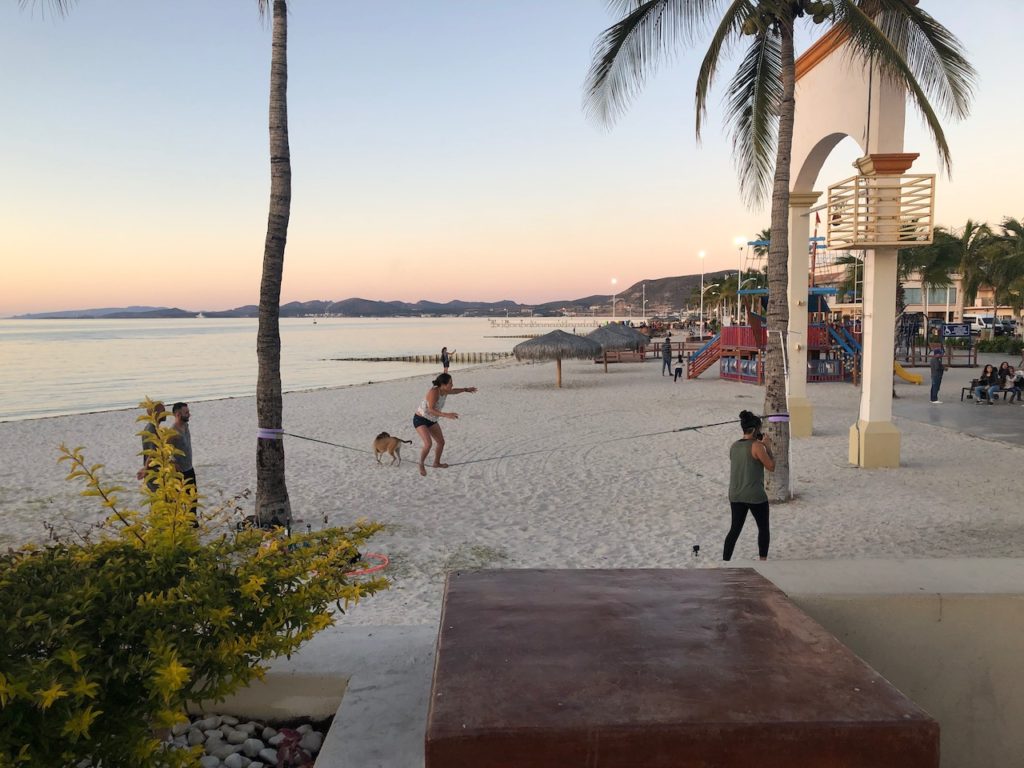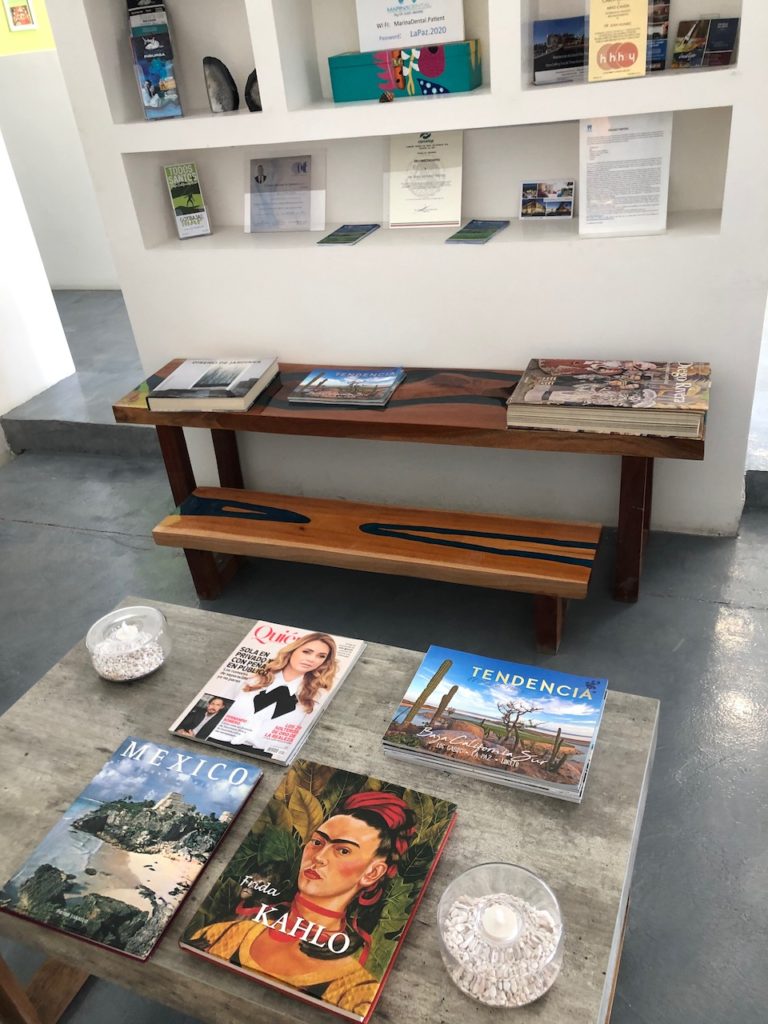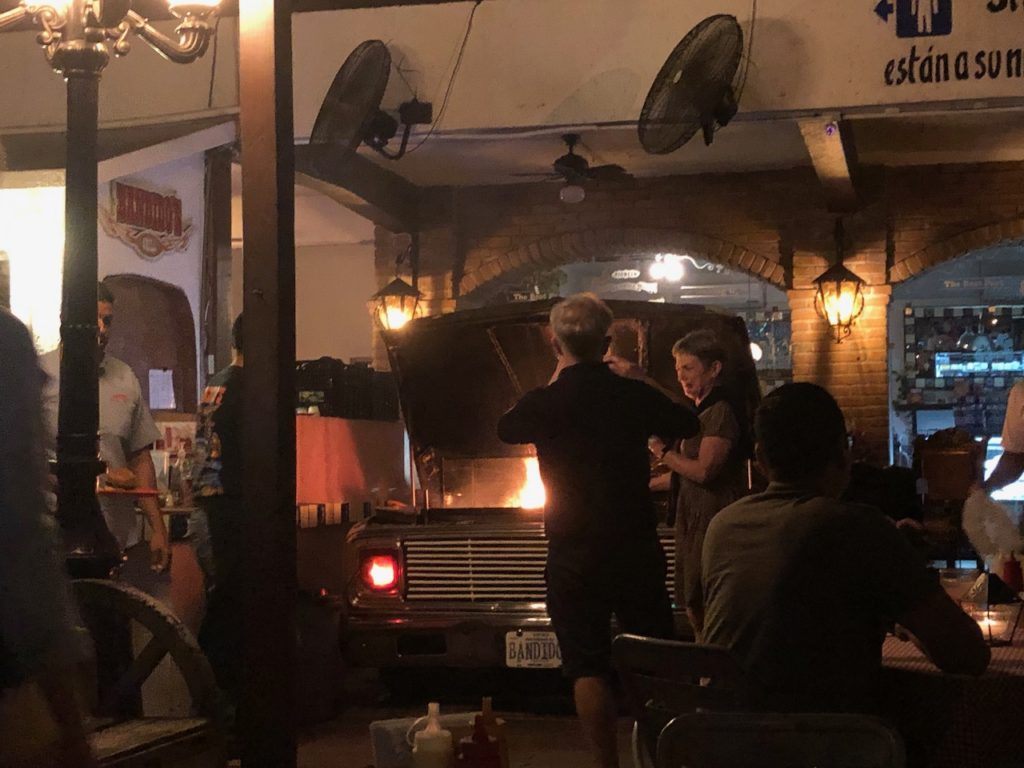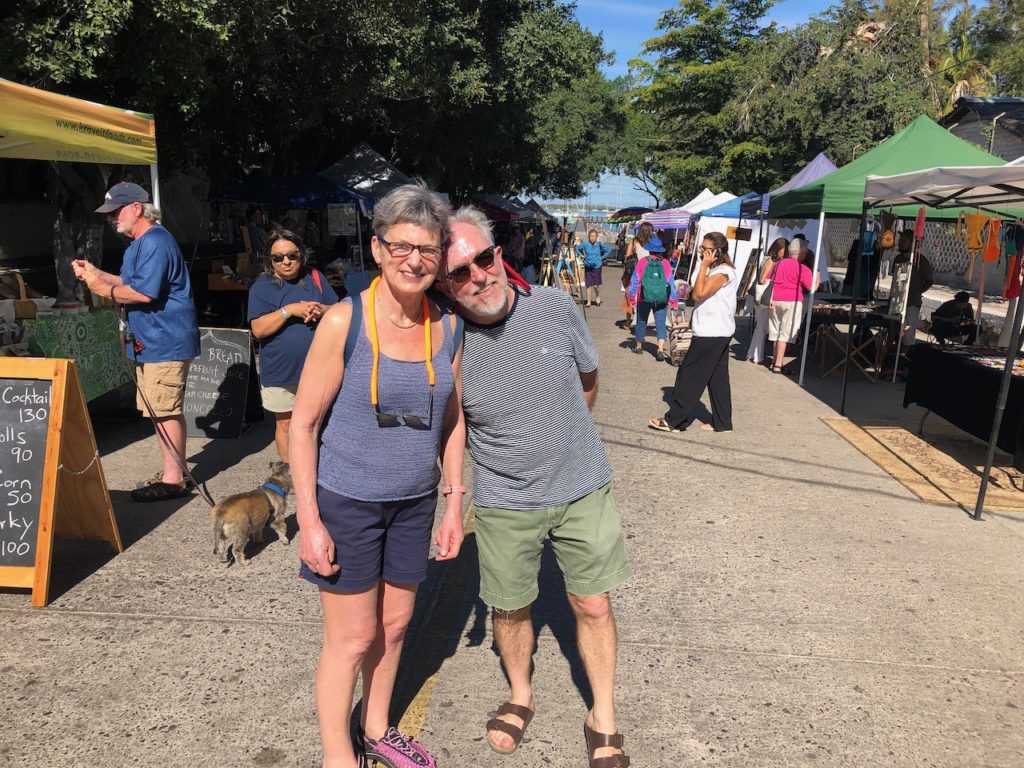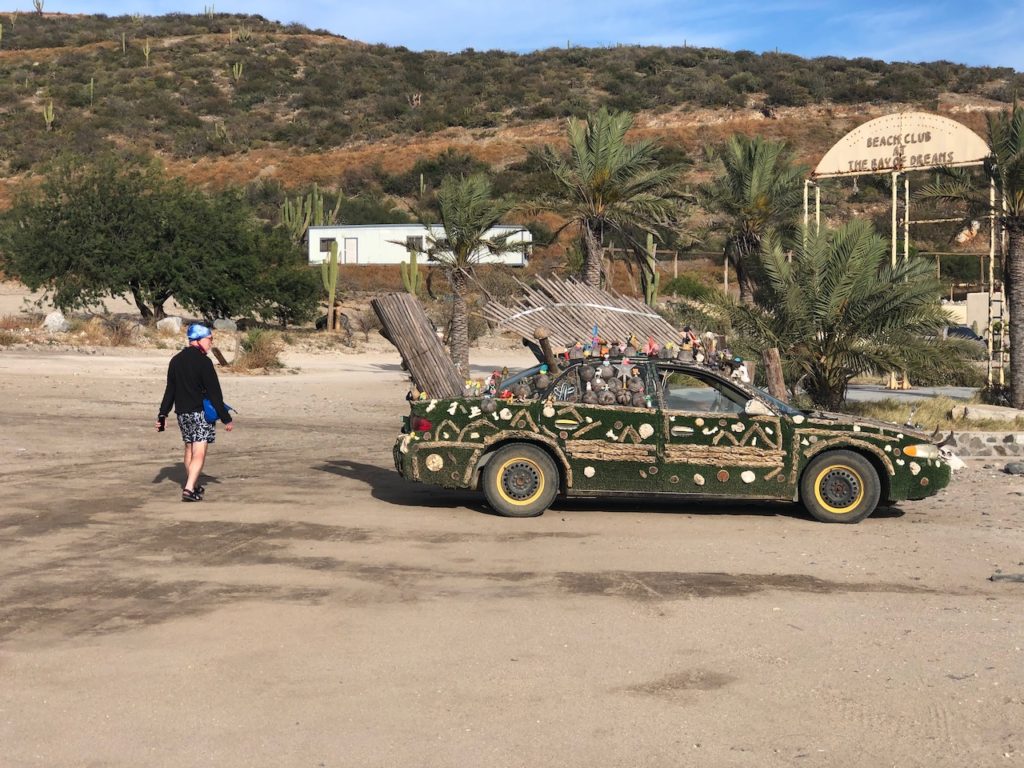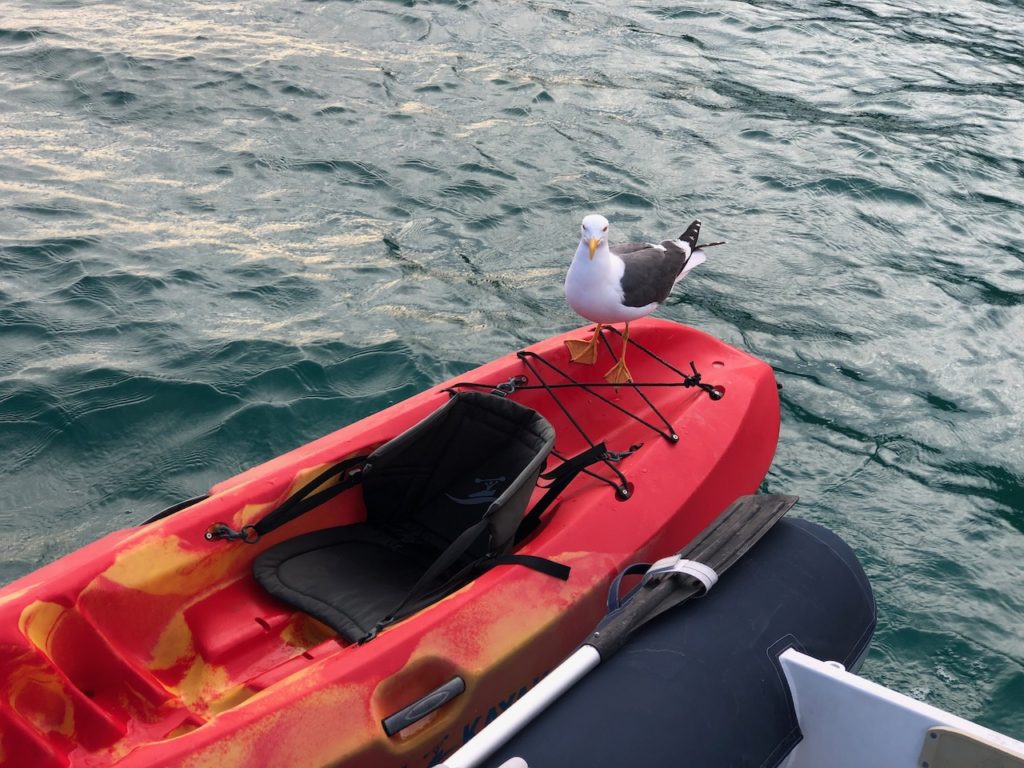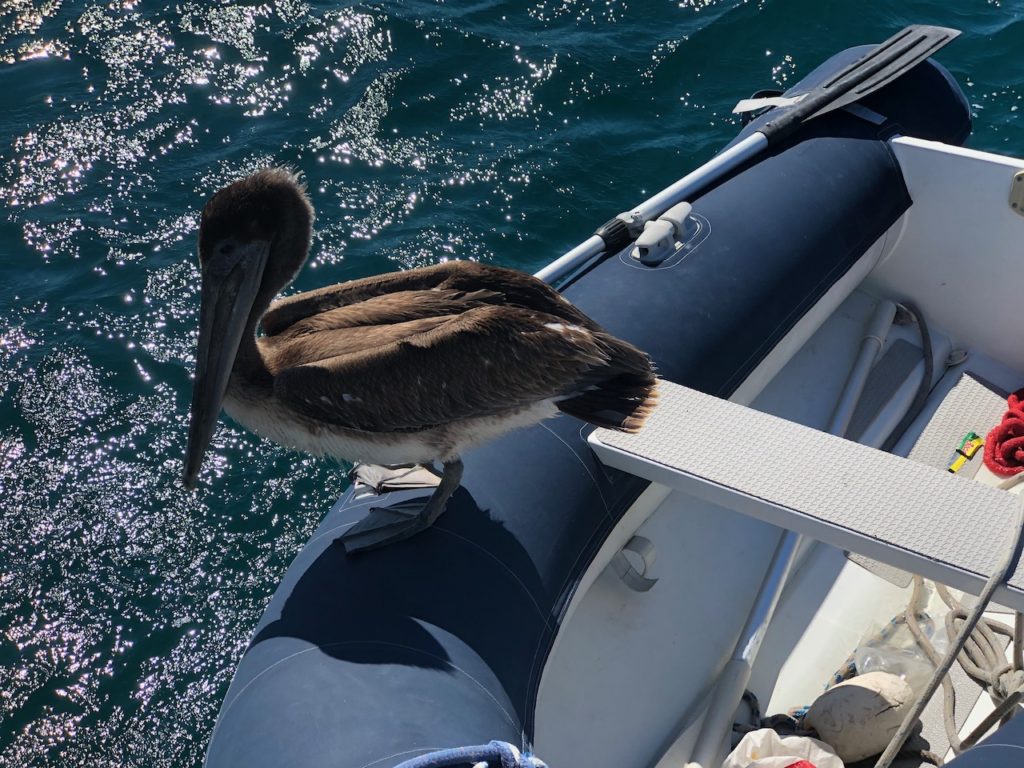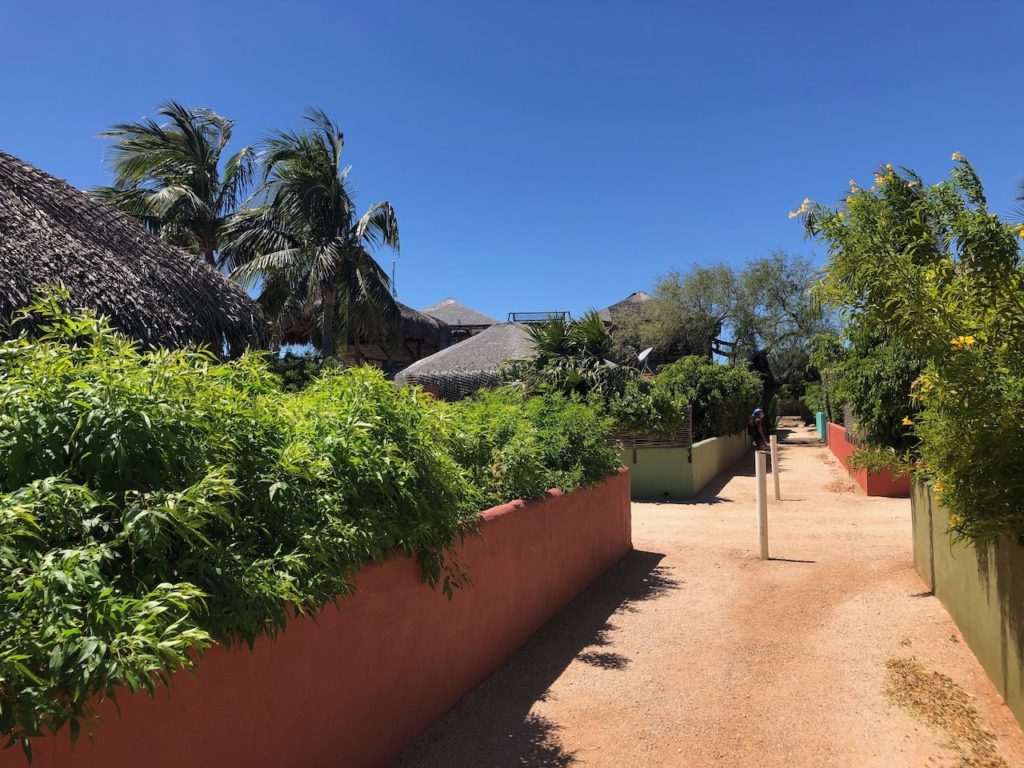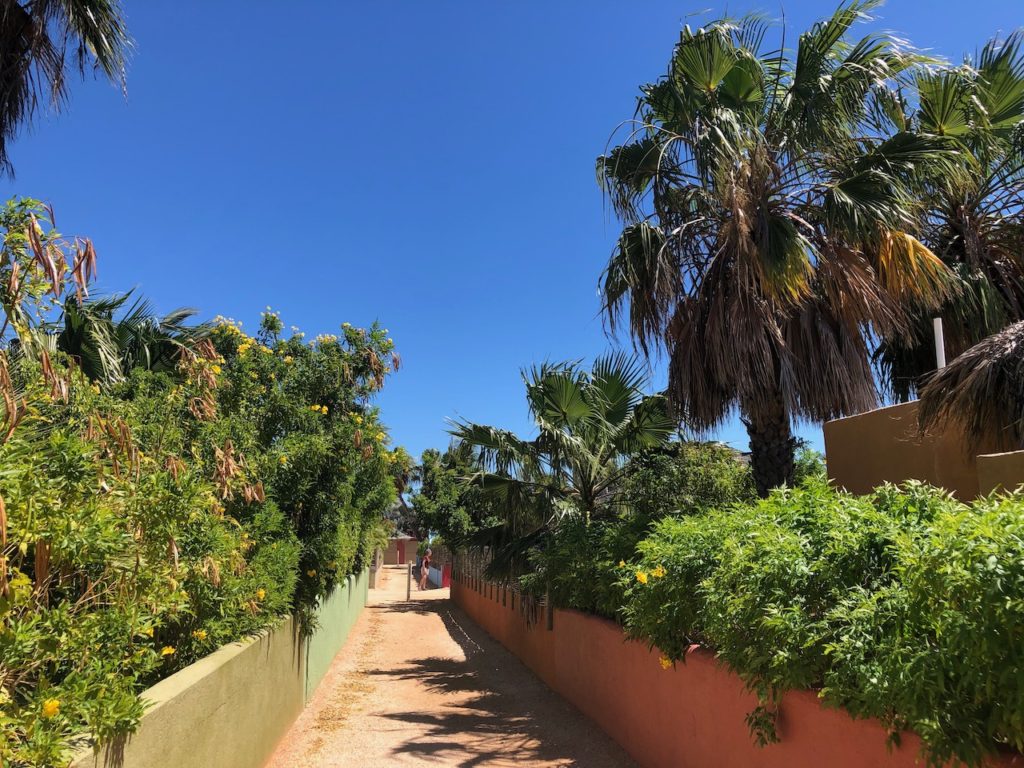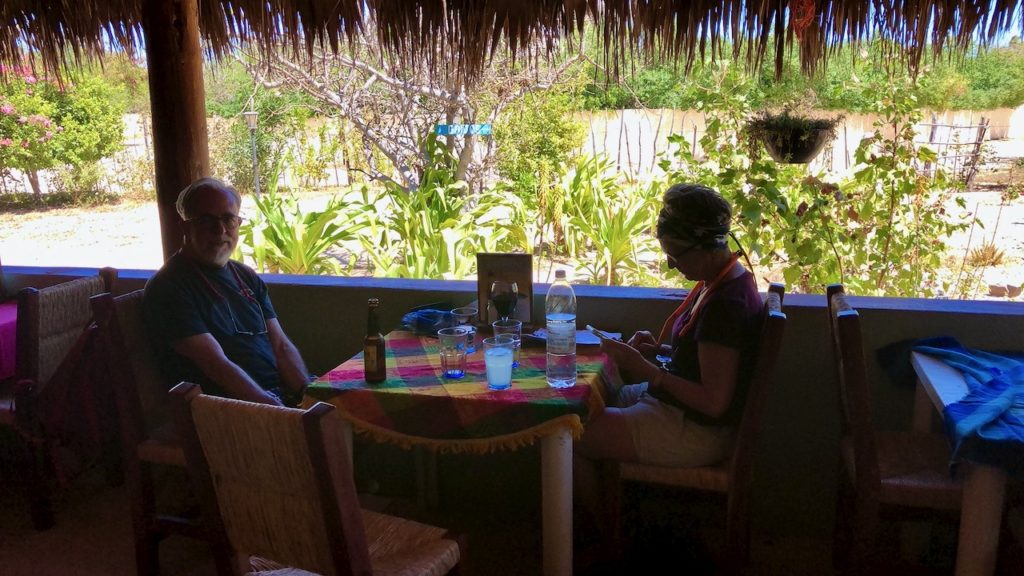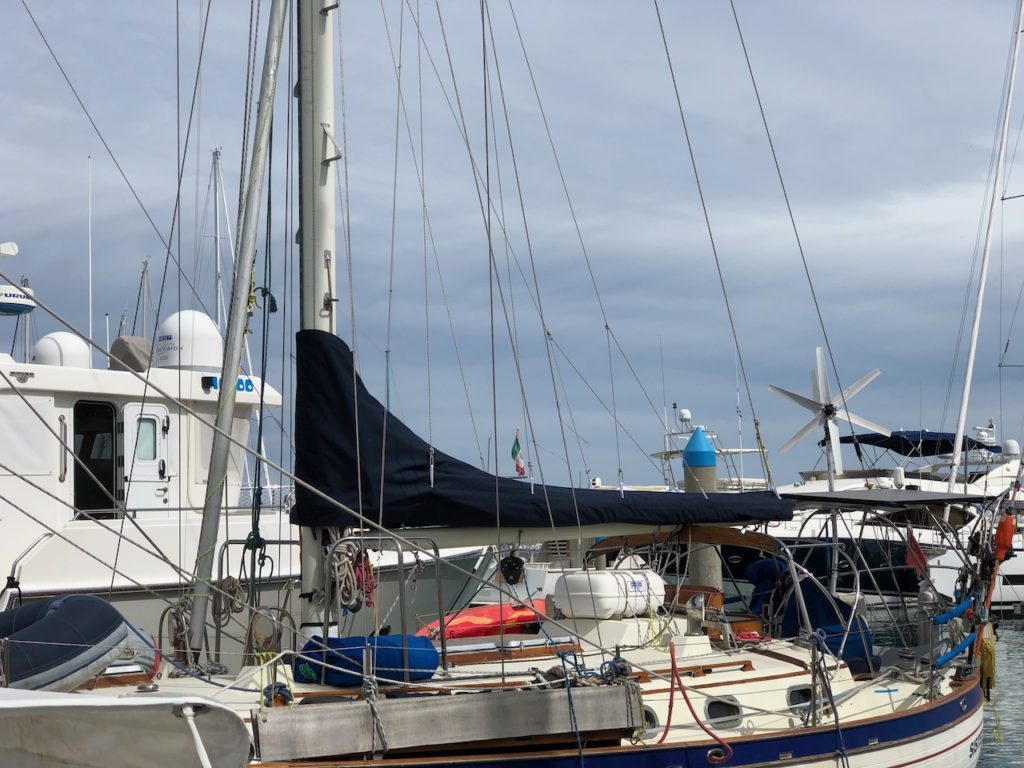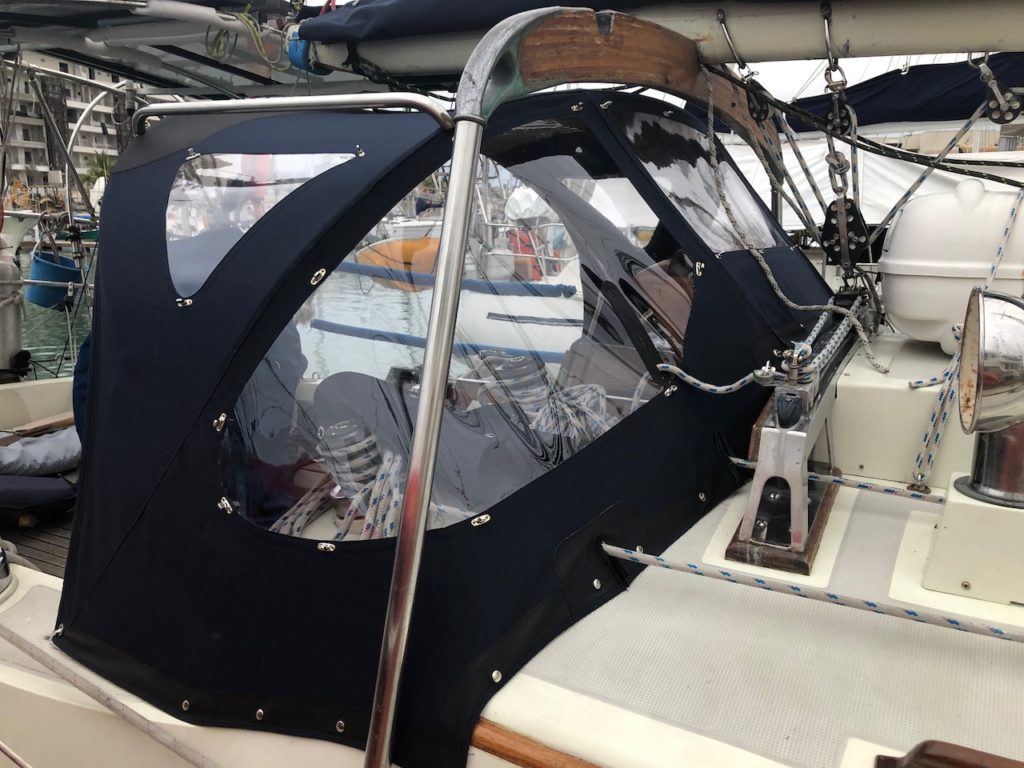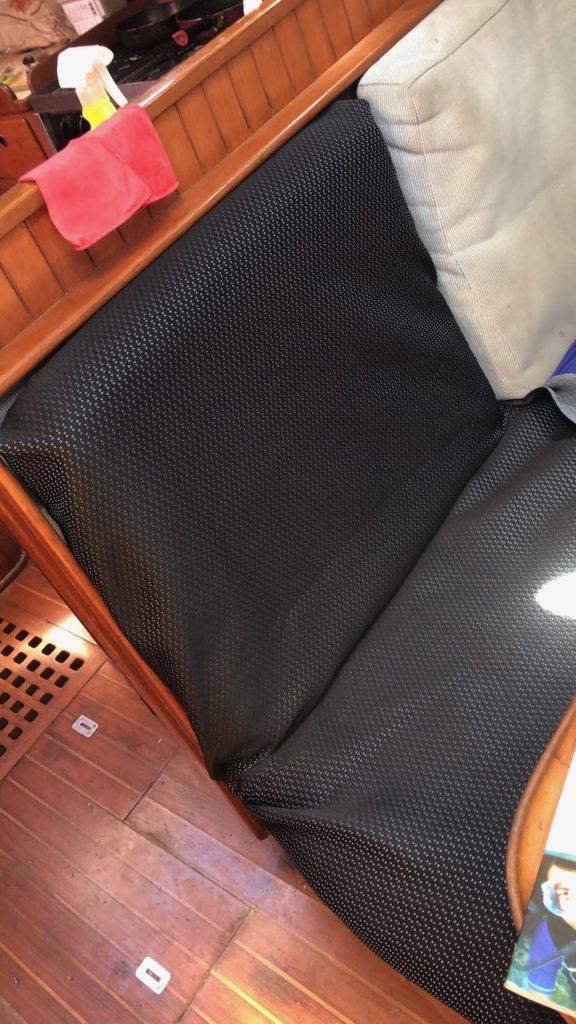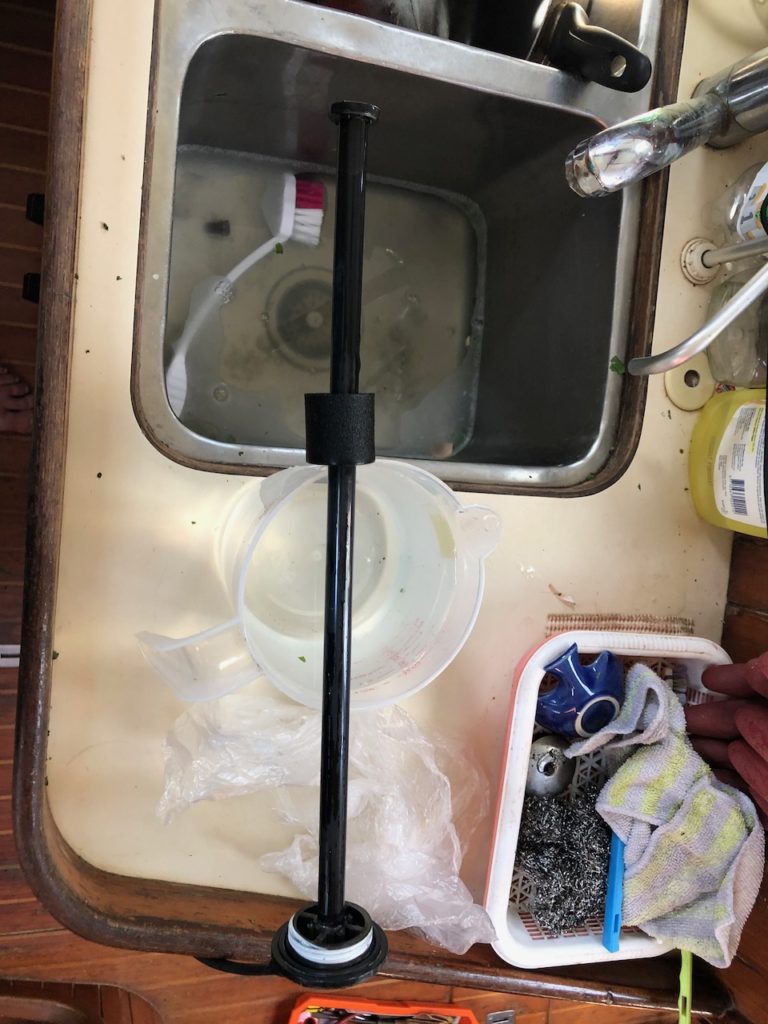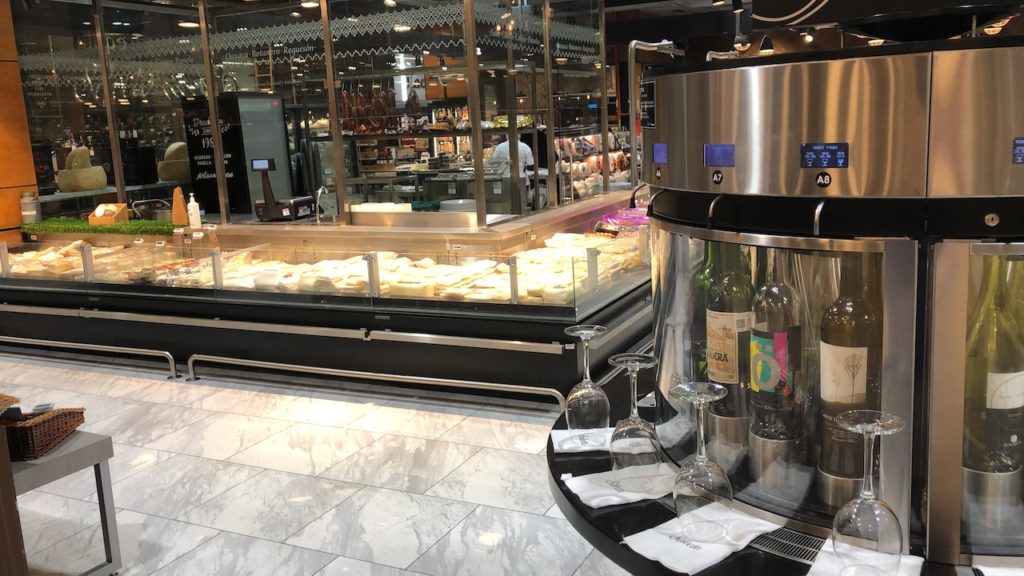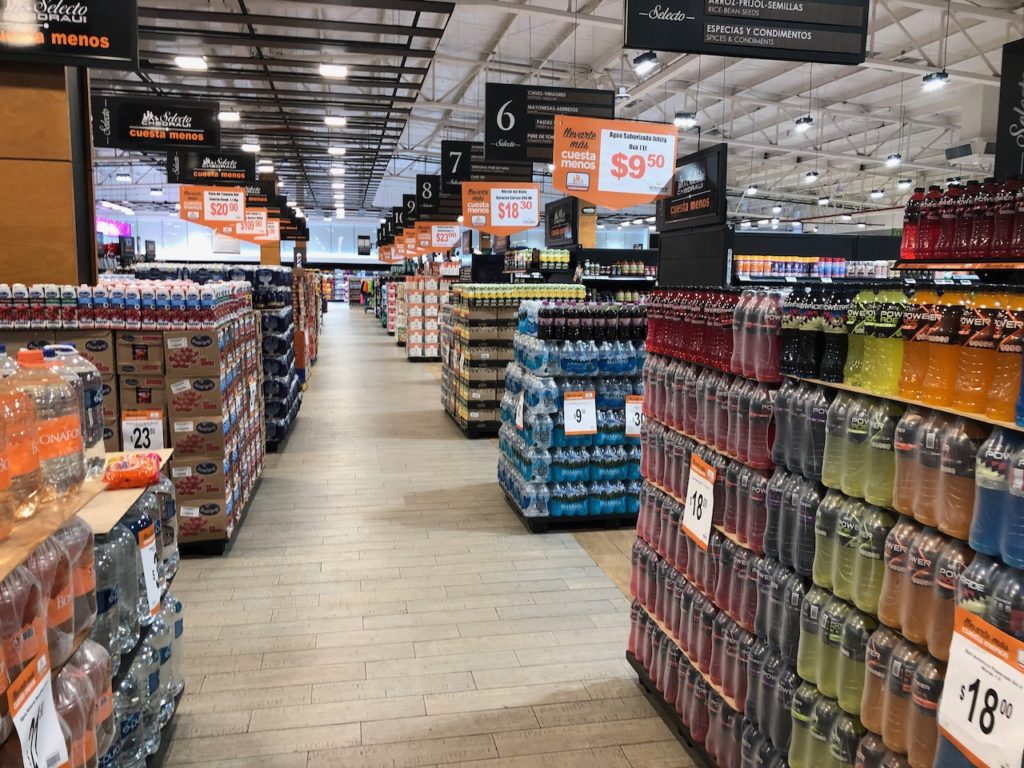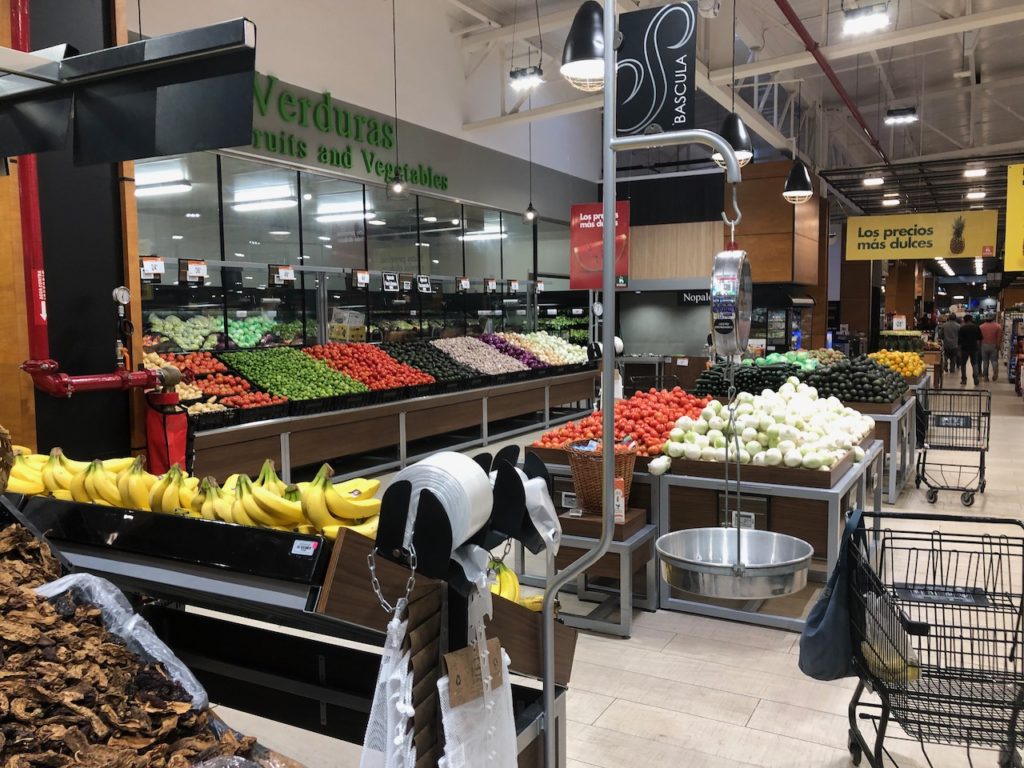Sunday 17th May
Today we hear the lockdown in La Paz has been extended from the 1st June for an unspecified period. This is due to the rate of infections in Mexico not having peaked yet, although it’s still pretty low here in La Paz. The hurricane season has officially started here as well (15th May) so I could be blown away at any moment, although historically not a lot happens until the middle/end of the summer.
I decide to head of to Ley, a giant Mexican hypermarket, in fact the largest Mexican chain of supermarkets in North West Mexico. I hadn’t been here before, but found it much busier than the supermarkets closer to the Marina. It’s a little bit further out of town, so good exercise.
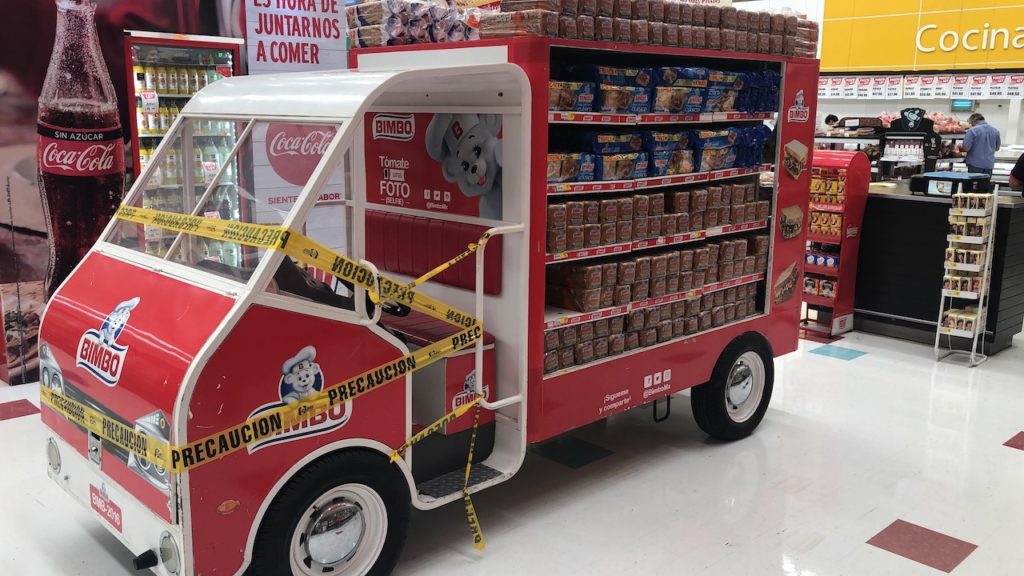
There wasn’t much difference in the goods on offer, but I did manage to buy some Mexican made vegan chorizo and hamburgers which actually tasted quite good.
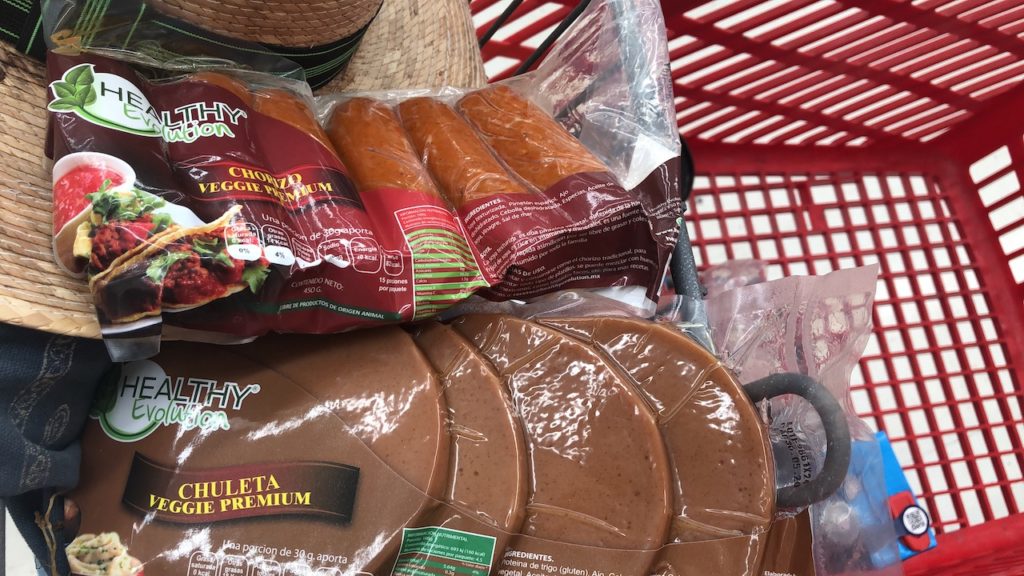
Back on the boat the last of the cushions was fitted, and I retired for the day not wanting to over exert myself.
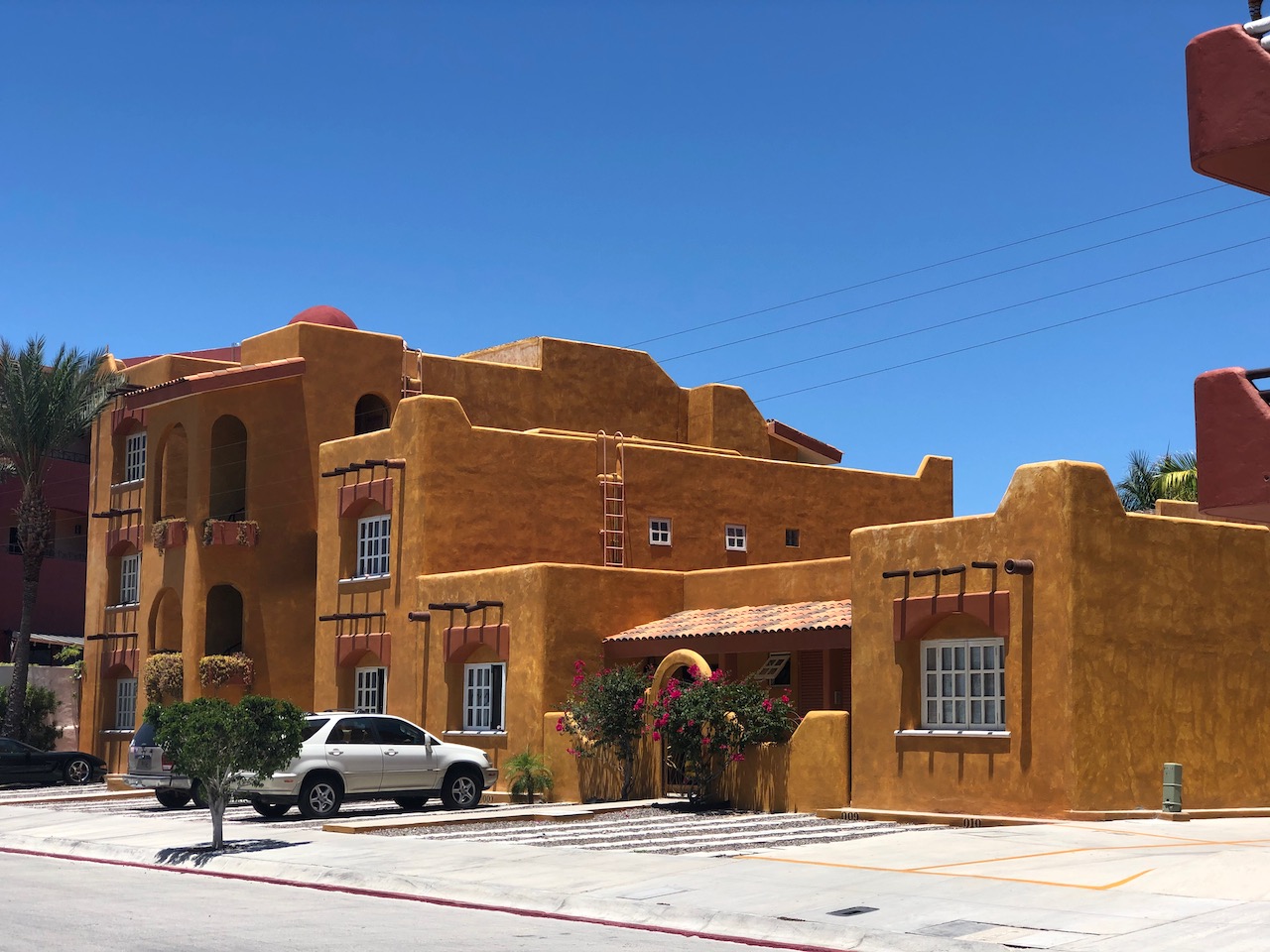
Monday:
I wake to several emails asking why the systems I built to monitor wind and solar installations are failing. A quick check reveals the server has run out of disk space, this is an oversight on my part and a warning system needs to be put in place. I spend an hour deleting log files and archiving off old data. I now have 30% free space, but will need to work on this to ensure the problem doesn’t repeat in a few years time. The system, which is mission critical(ish) only has 50GB Storage. This might have seemed ok at the time it was built, but I now have memory sticks with more capacity.
It’s too hot to be outdoors, so I set to work on decoding the data from my ancient ST50 Speed and Depth instruments. They talk a secretive language to each other over a single wire network. I have no idea about the electrical or data protocol, but decide to put a scope on the wire and see if I can work something out. I don’t have a scope so set about using the sound card on my laptop to act like one, only trouble is the macbook air doesn’t have an audio in jack, so I move onto using a USB audio stick to capture the signal. I don’t know if this will work but it should be fun.
The previous night I had sent an email off to a guy who makes a hardware device that converts this SeaTalk 1 protocol to the more open standard of NMEA, asking for any tips, and just as I’m rummaging around for hardware bits to start my project he sends me an email with stacks of data on the electrical signals and the data content. Just amazing, I realise I can interface the SeaTalk to my raspberry pi with just two resistors and a FTDI USB serial adapter, which I have. They only cost peanuts to buy. A few hours later and I’m pulling in the depth readings and the Speed over water. Tantalisingly I’m getting data packets showing the water temperature, but it’s always 0xFF which makes me think it’s not reading it. Brits of my generation and older often have a fascination with water temperature, as we spent all of our childhood holidays at beaches were the temperature is generally in the hypothermia generating range. Water temperatures above 20 deg C tend to over excite us.
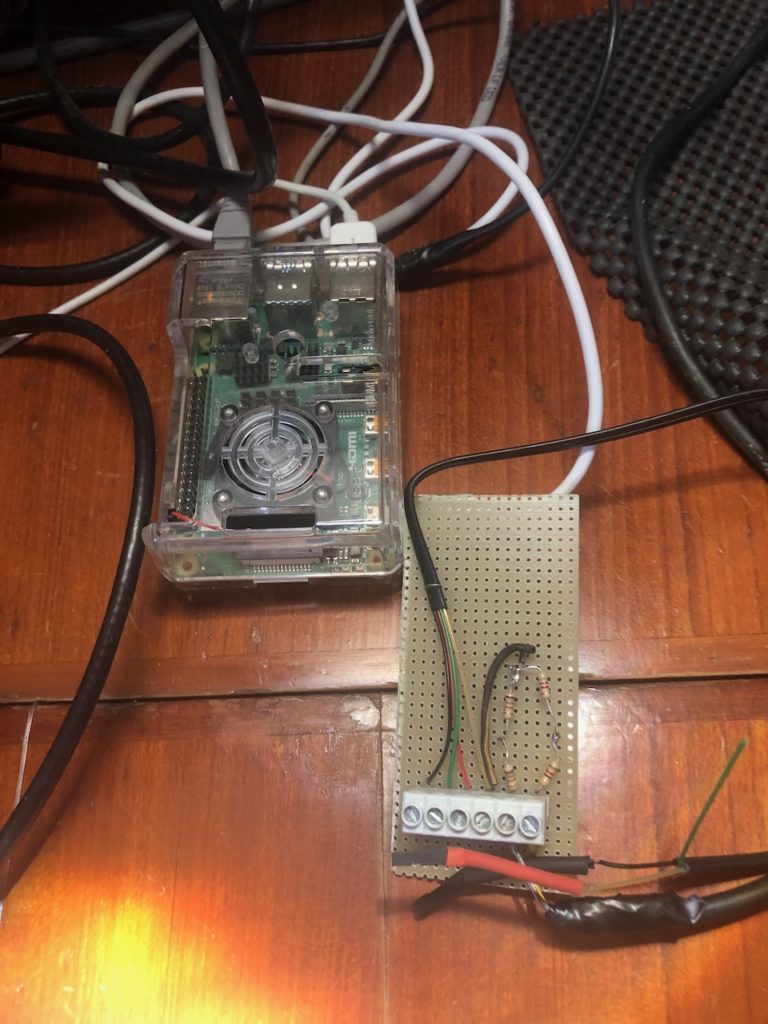
Now I can log location and depth as I travel around and use this information to generate my own chart data, It’s like having my own black box data to analyse, next time I go aground!
Arturo, my new Mexican friend I met at the airport some months back phoned and we agreed that I will pay him to teach me Spanish via Skype for an hour each day, starting on Tuesday.
Tuesday:
I had a disturbing dream last night based on a report I had read about Prime Minister Johnson just before I retired to my bedchamber.
He was at a meeting when a quite complex process was being laid out and he said, “crikey, that’s a lot of work, and quite complicated, who’s responsible for seeing that through then?, he said looking around his ministers”. Ministers looked around awkwardly in silence until a civil servant spoke up and said, “Well Prime Minister, I think it’s you”.
Then the Prime Minister was on the TV reading from a todo list, and he was saying how much he had to do, he reached an item, ‘Pay Europe several Billion pounds as promised’, which he read out and said, “Crikey, I forgot about that one, bugger”.
I will leave you to work out which one was real and which one was my dream/nightmare.
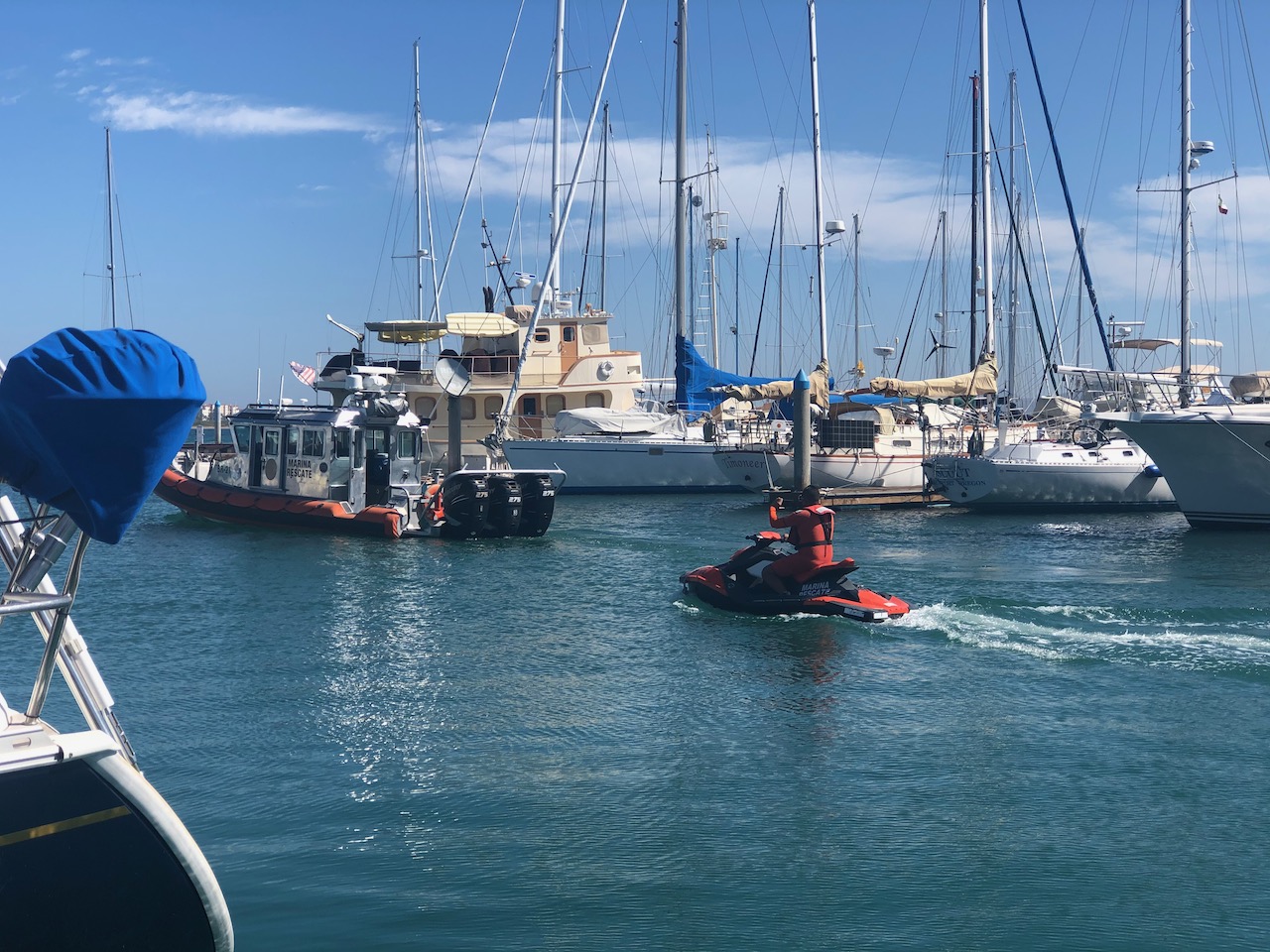
Come the afternoon I hooked up for a video call with Arturo for the first of my daily 1 hour Spanish lessons. I was rather apprehensive about how this would go, Arturo isn’t a teacher, but has recently qualified with a degree in language studies and speaks good English and French, so he knows a lot about language structure. He is also a very enthusiastic clever guy. I needn’t had worried, it was a great lesson and we firmed up my understanding of conjugating AR verbs, which was nice. Later I firmed up his bank balance a little, which was under strain as there is no work in town for him at the moment. So a win win situation.
Wednesday:
I took off on my cycle this morning to find a Ferrateria (Hardware store) to buy some lamp oil for an old battered lamp I had found in the locker in the shower. It was rather rusty, but should clean up. In the UK these lamps are expensive, if you can find them, but I remembered they were only a few Euros in Nidri, Greece the last time I was there. I found a store that had the oil and it had shiny new lamps for just £4, so I bought one and threw the old one away.
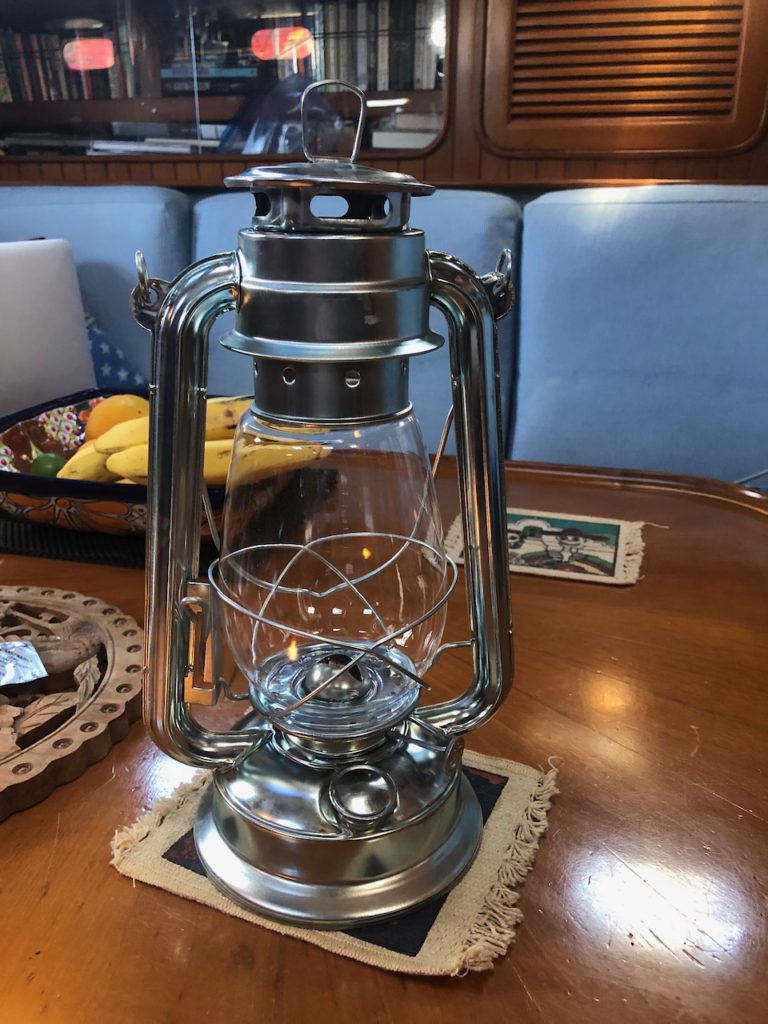
I like to read in the cockpit as the sun sets, but the cockpit has no lighting since I replaced the spray dodger/canopy and I thought this lamp would be nice. However as it turns out, the flame burns very low. I don’t know why this would be, other than the fuel isn’t up to par. Most strange, it looks great though.
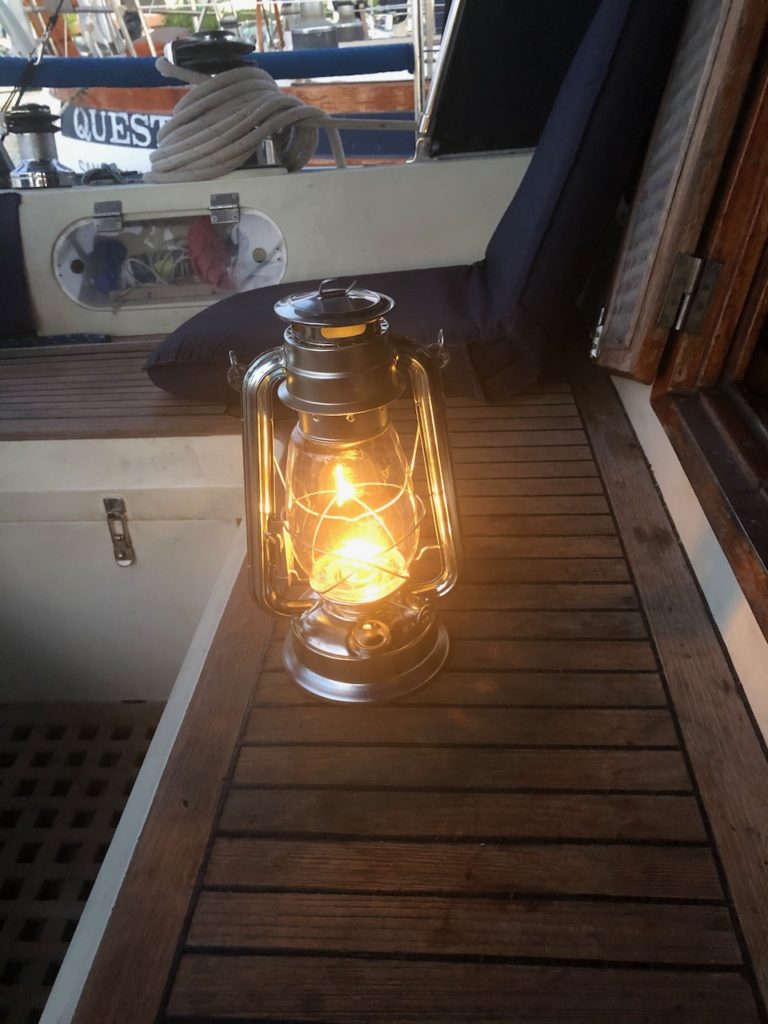
I’m going to have to wire up some LED lighting for the cockpit.
I cycle around a bit as it’s such a nice day and I need some exercise. The blossom is lovely right now.
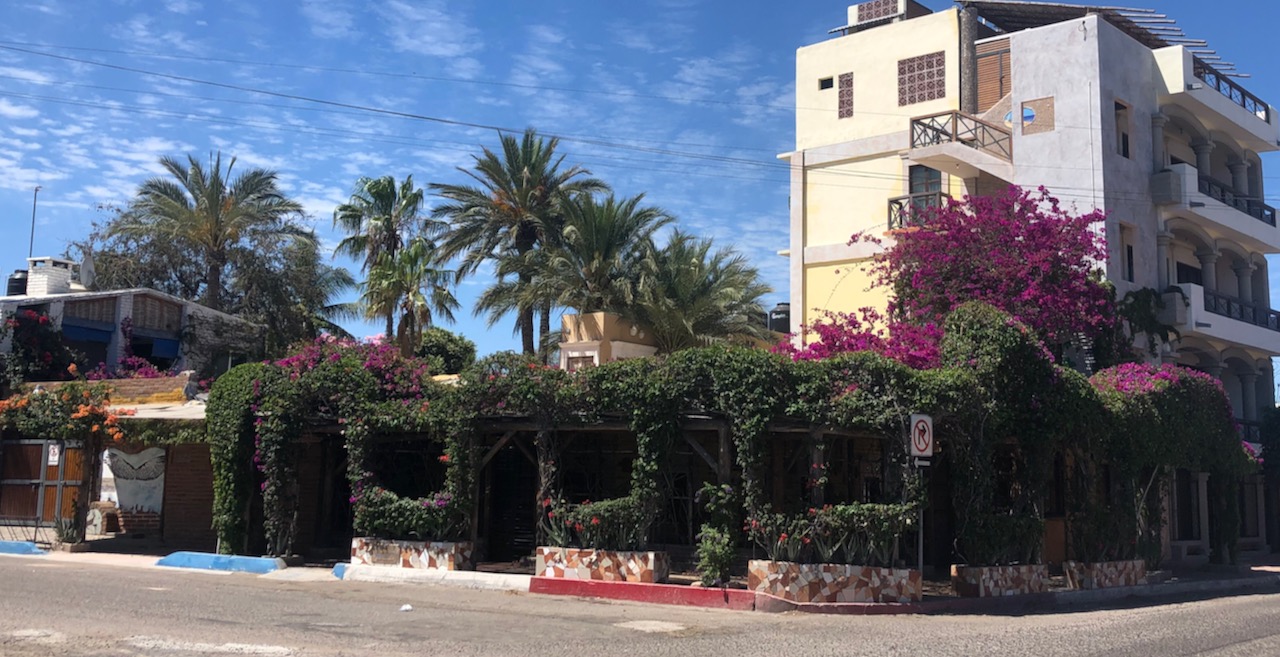
After a delicious fish & salad dinner I set about writing software to process the new readings coming in from the instruments I now have connected to the ship’s computer. It’s really only the depth readings I’m interested in. I had thrown together a little bit of Python code to read in the data and display it in a raw format, but Python isn’t a language I’m fluent in, so I started again in C, this is my bread and butter language. However, reading from devices like USB sticks on Linux isn’t something I do often and had to read up on that. Eventually just after midnight, I managed to get the packets in and decoded ready to store in a database. This will be more fun, I’m expecting Facebook and Cambridge analytica will be banging on my door soon wanting the data, I’m sure they have algorithms ready to turn tide height, speed over ground and wind speed in La Paz, into a ‘prime selling opportunity’ for somebody.
Thursday:
Up early, feeling groggy, and off to Chedraui for some fresh bread. The weather is lovely now, cool nights, and 31 deg C most of the day with a gentle sea breeze.
Another great Spanish lesson where I learn how to use the verb Poder (really useful for “I can not understand you”, “can you speak in english please” etc).
People arrive late in the day and move onto the boat next to me, it’s a fast sailboat, Jeanneau 49 DS I think, fin keel, and they have come to return it to California. They plan to leave on Saturday.
I make Guacamole and sit in the cockpit coding my new Tide height system. By 23:00 I have it working and running on the PI Computer as a task logging the tide depth every minute to the database. In a few days time I will have enough data to compare with the official tide predictions for the area. I bet like me, you can’t wait to see how that turns out 😉 .
Friday:
I wake up at 01:00 after having fallen asleep watching some boat porn, I’m not sure what it was, but I think it may have been ‘Salt & Tar’ stepping their new mast. Anyway YouTube has rolled on to a BBC programme about Sailing in the Sixties, and I would usually switch off and drag myself to bed, but instead I wake myself up and watch an hour of people building kit dinghies like ‘The ‘Mirror’. A lot of dinghies were sponsored by newspapers back then, I actually raced a ‘TV Times Dinghy’ in Portsmouth as a kid. It was cut out of a big block of polystyrene, I’m lucky to tell the tale, it started disintegrating half way through the race, these boats would dissolve in most chemicals, and portsmouth harbour was full of oil slicks back then. Later in the show they move onto Chichester and then Knox Johnson with their ‘around the world voyages’ There’s a lot about Donald Crowhurst, which is a very sad tale, if you don’t know it I suggest you check him out. Sadly there’s little mention of Mottisier, a Frenchman who really stole the show as he was really the first man to sail solo non stop around the world, he would have got the prize but couldn’t be bothered to sail to England to collect it, instead he carried on and did another half a world eventually chilling out in somewhere nice like Tahiti. It seems to me the French have always had the edge over the British in sailing matters, but I wouldn’t expect the BBC to highlight that (Obviously I’m excluding Nelson).
Enjoying breakfast in the cockpit I noticed there are a lot of small birds around right now.
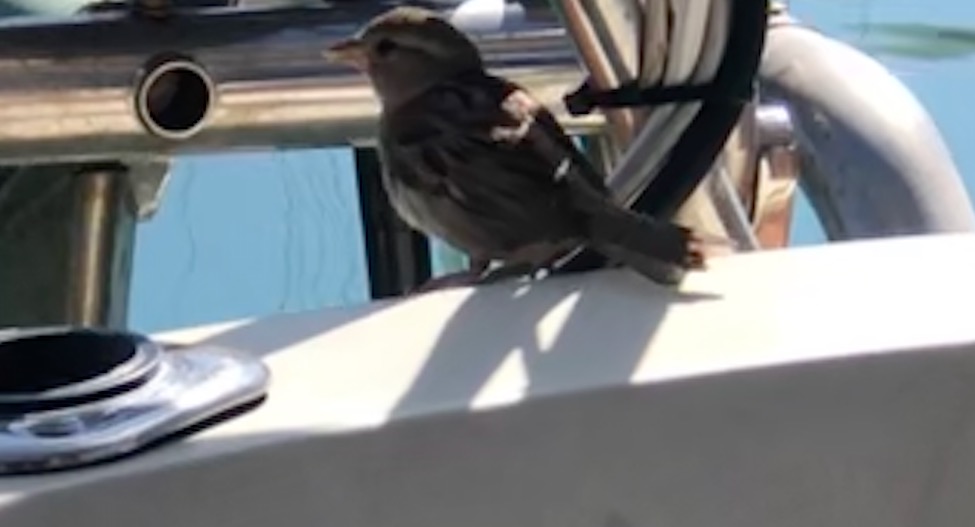
Next door the crew are busy provisioning for their trip and getting all the boats systems ready. I quite envy them, they should have a lovely sail/motor up to the USA.
I pop to Office-Depot for some stationary and take a detour on the way back for extra exercise. I had often spotted a big hotel/apartment block that I assumed was under construction, or maybe shuttered now for the virus but managed to get a bit closer today and was disappointed to see it’s in a bad way.
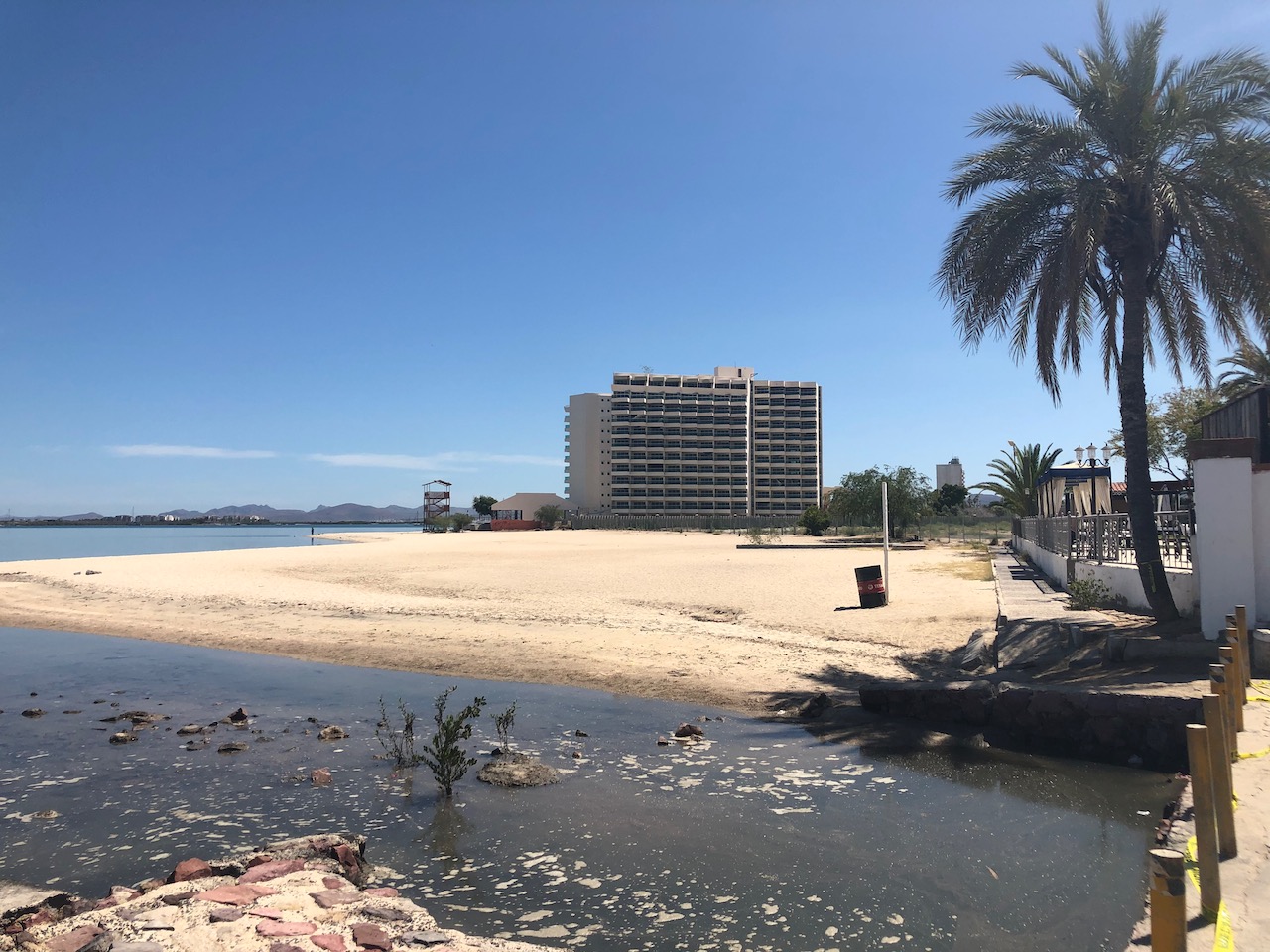
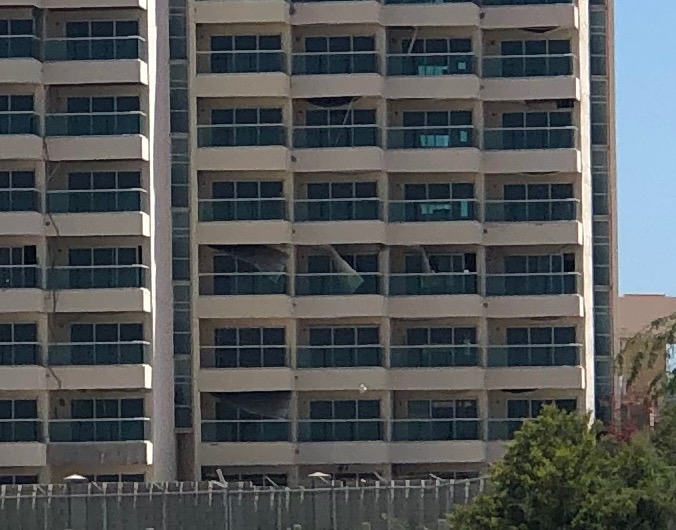
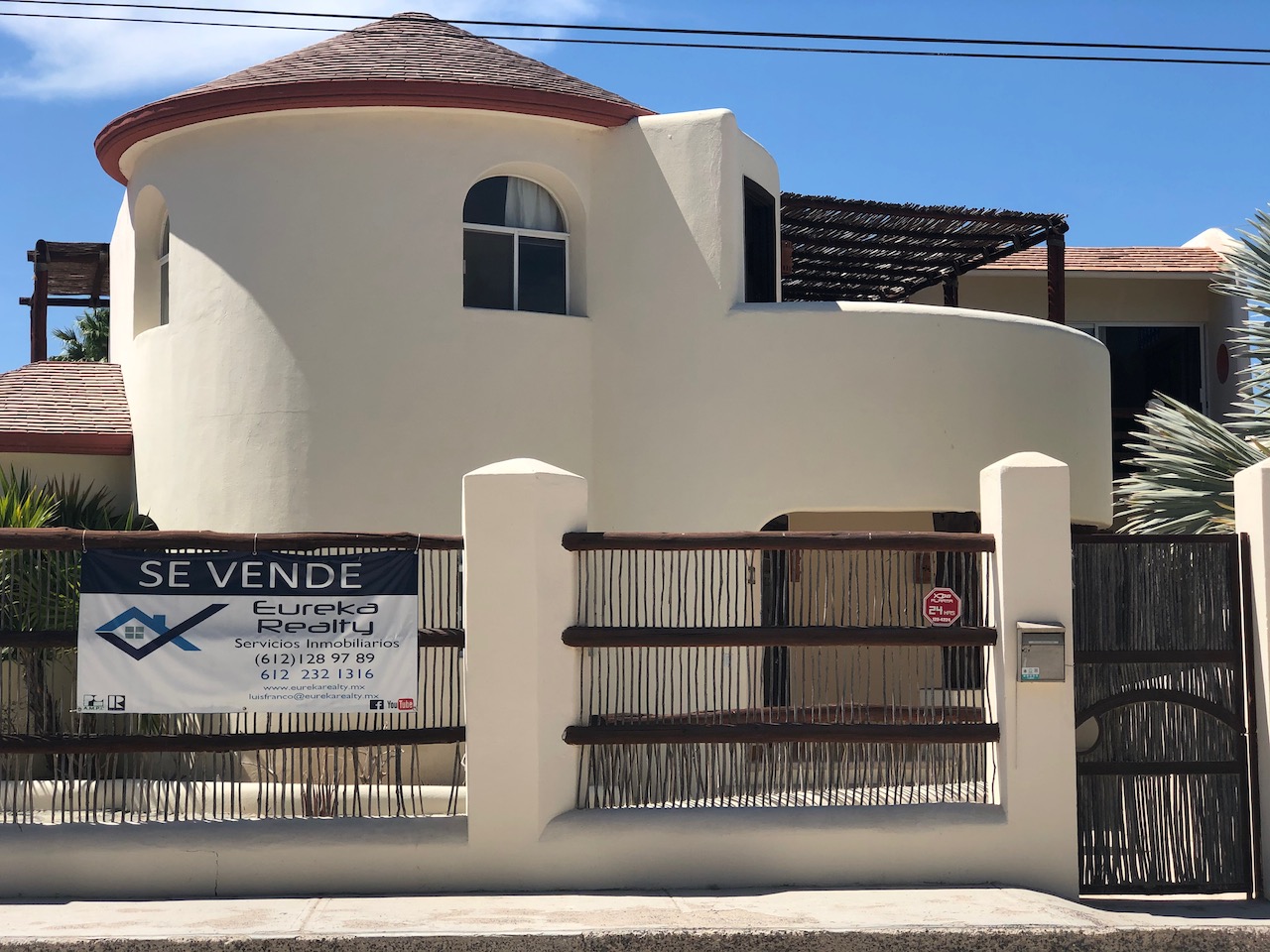
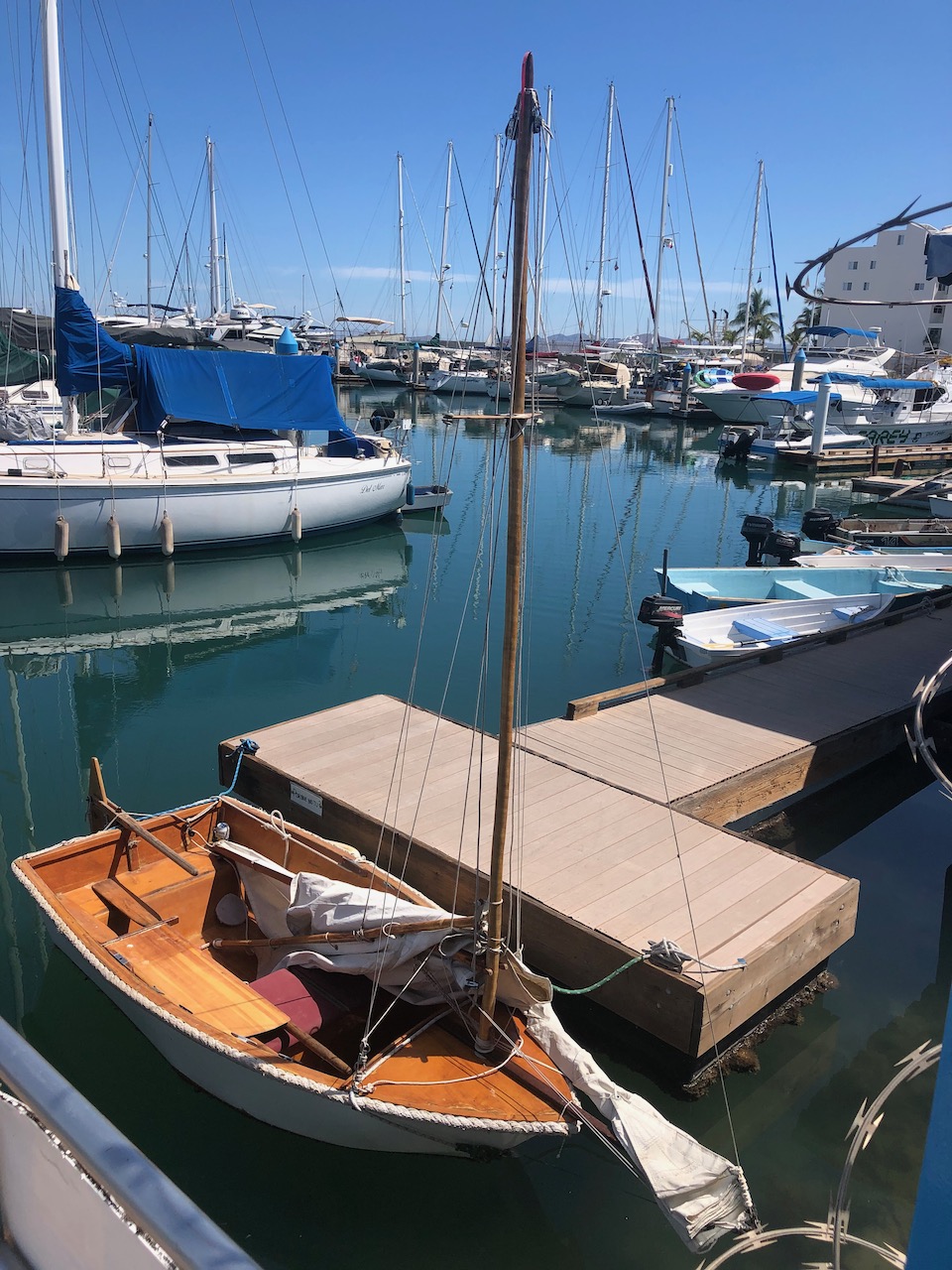
Back at the Marina, I unpack, taking time to wash down all the goods with soapy/bleachy water before they go into 3 day quarantine in the Quarter Berth.
Then my Spanish lesson, I’m just about hanging in there, but I think if I left it a few weeks I would forget everything.
Saturday:
So before I head to bed I get the last of the database entries for the tide height as logged under the boat here in the marina. I now have 24 hours of tidal data from 00:00 on Friday Morning to 23:59 Friday Evening.
I have plotted it below. I have had to remove a few samples which were out by more than 50%, not sure what is going wrong there as I average out 60 samples taken 1 per second for an average reading every minute. You can see the results below.

Then I overlaid the forecasted tide from my tidal prediction software app. This uses a formula which is based on the effect of the orbiting bodies out there, mostly the moon, and some local parameters. As far as I’m aware it’s not table driven. The overlay is in white. I was very impressed at the match.
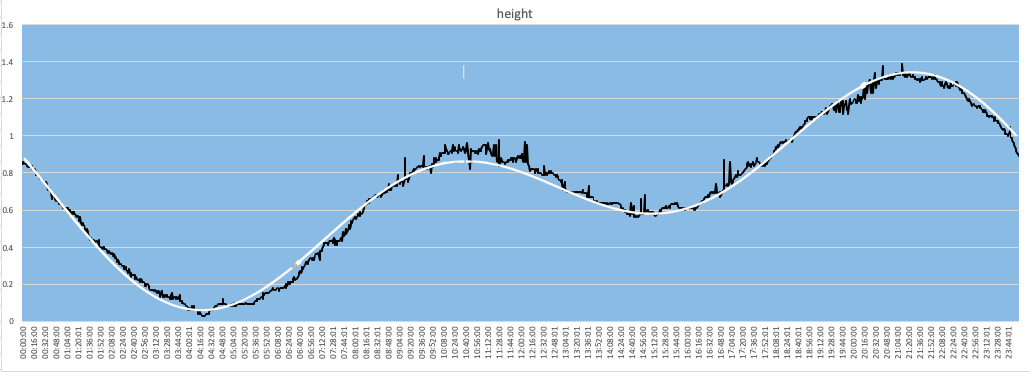
‘Exit Strategy made their exit this morning. I now have a lot of space to starboard.
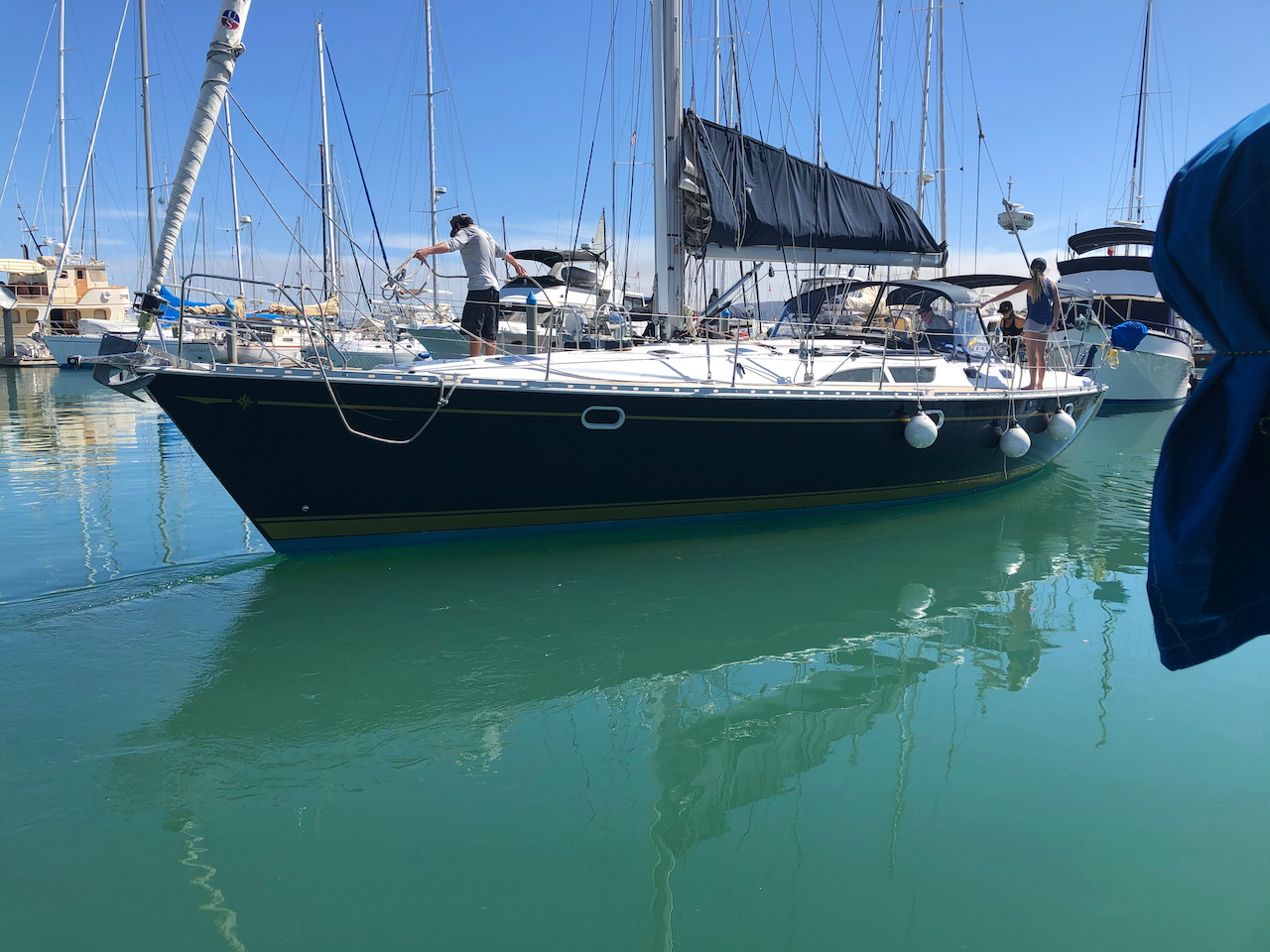
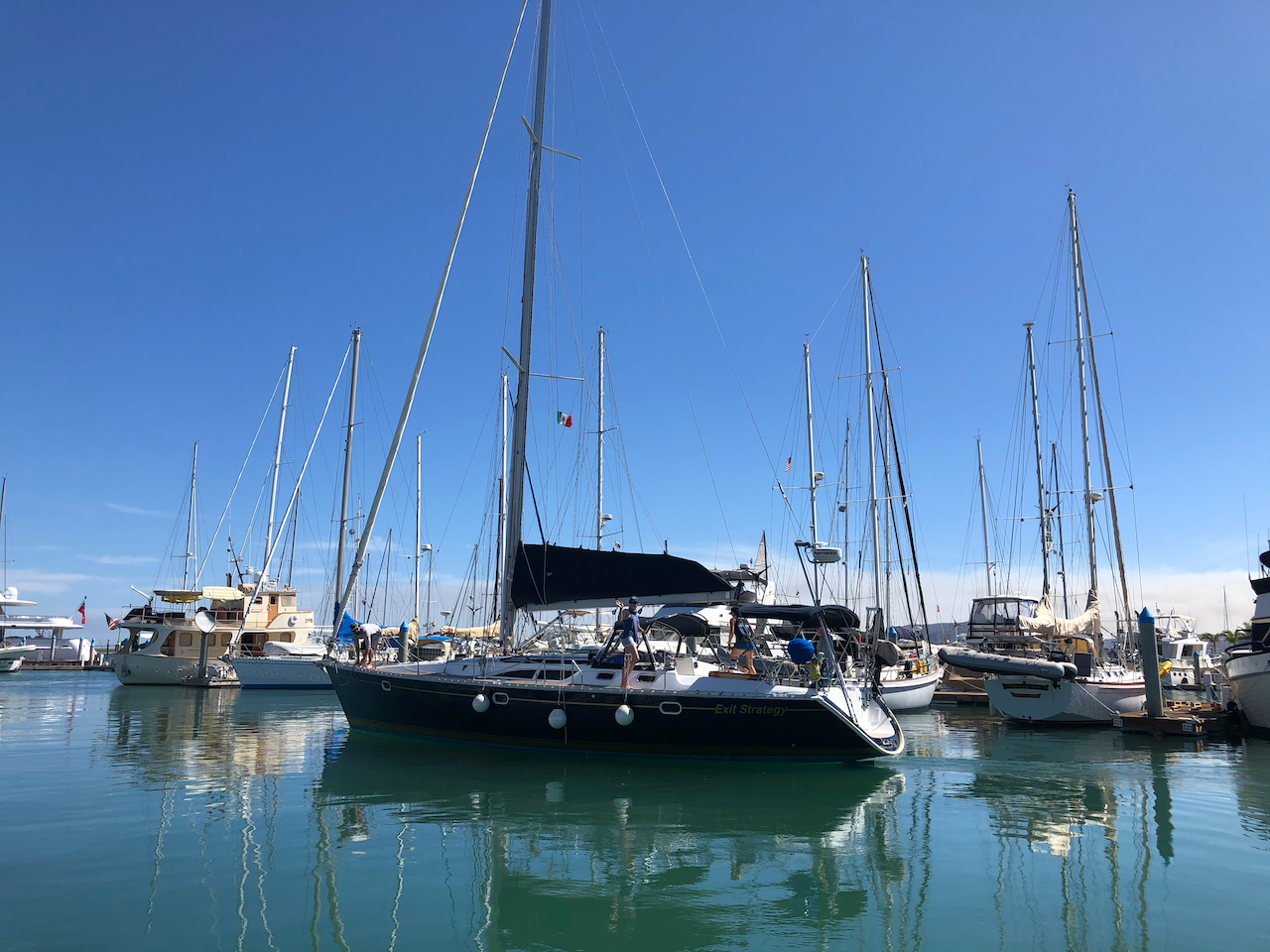
Off to the laundry to do the washing, it can’t be put off much longer, and we’re coming up to the monthly change of t-shirt anyway.
I know it’s important to be working on a vaccine right now, but does that mean work on the ‘Automatic Tissues in pocket detecting Washing machine’ is going to be delayed!
I spend the afternoon mostly glued to the twitter screen and the BBC news as it looks like the leader of the British government, Dominic Cummings, may be about to lose his job, It’s possible his part time assistant, Mr Johnson, may be in trouble then. Exciting days.
Watching the sunset from the cockpit, I notice my new neighbours pointing at the water, closer inspection reveals a small fin moving quickly along the surface. A few minutes later there’s quite a commotion in the water, somebody is trying to eat somebody else. All goes quiet for a bit, then starts up again 5 minutes later, this goes on for an hour. I never get to see any fish, just frenzied activity just below the surface.
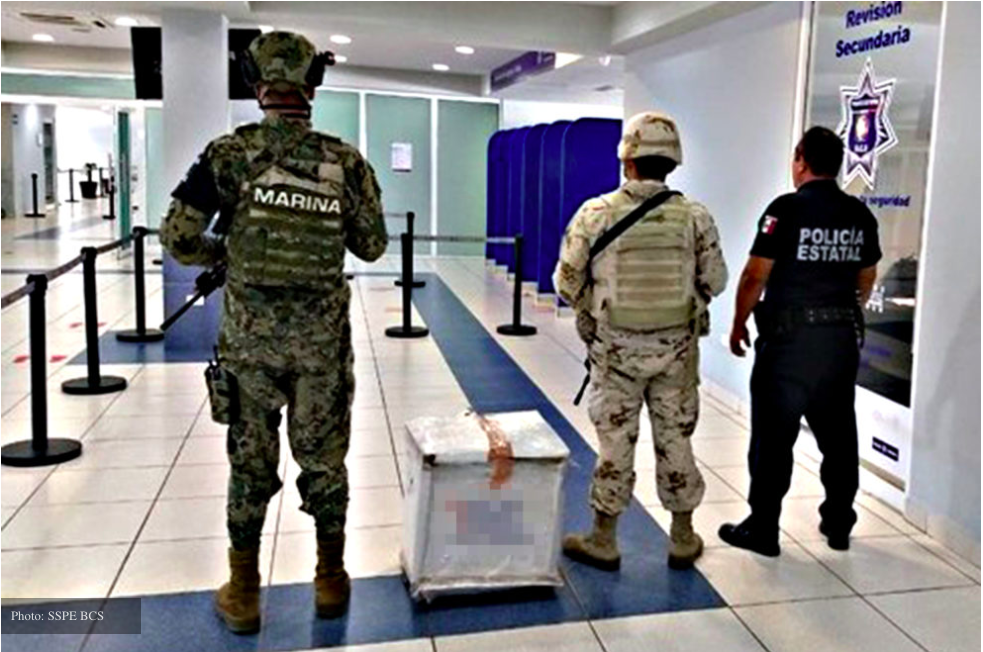
Paul Collister

